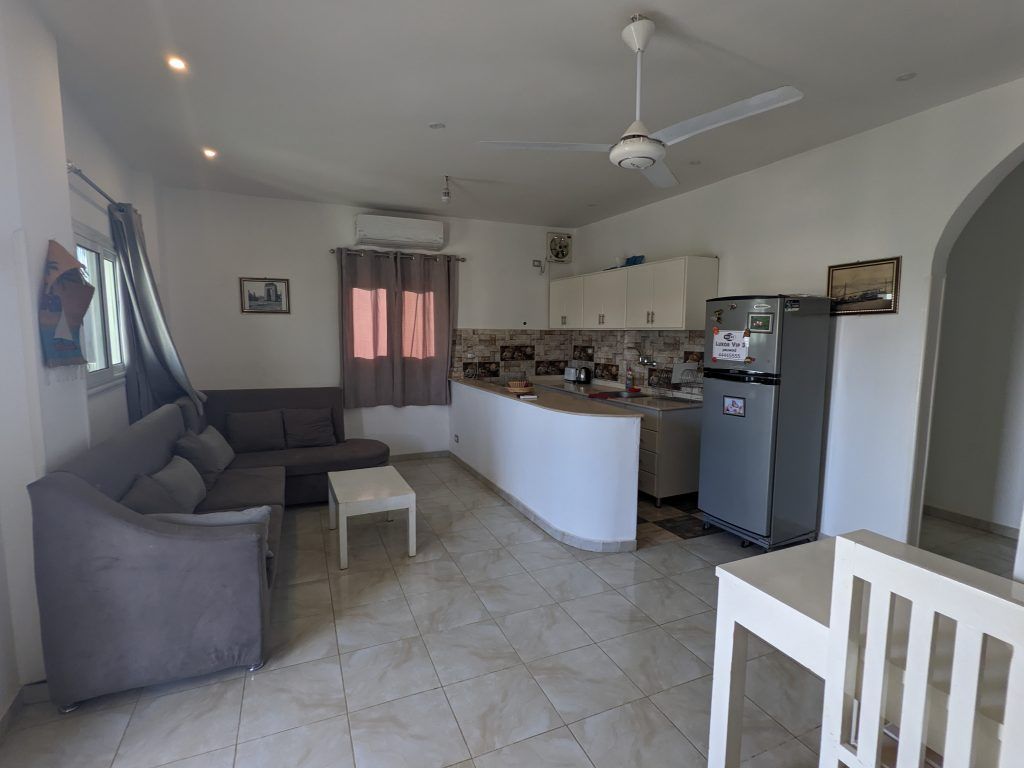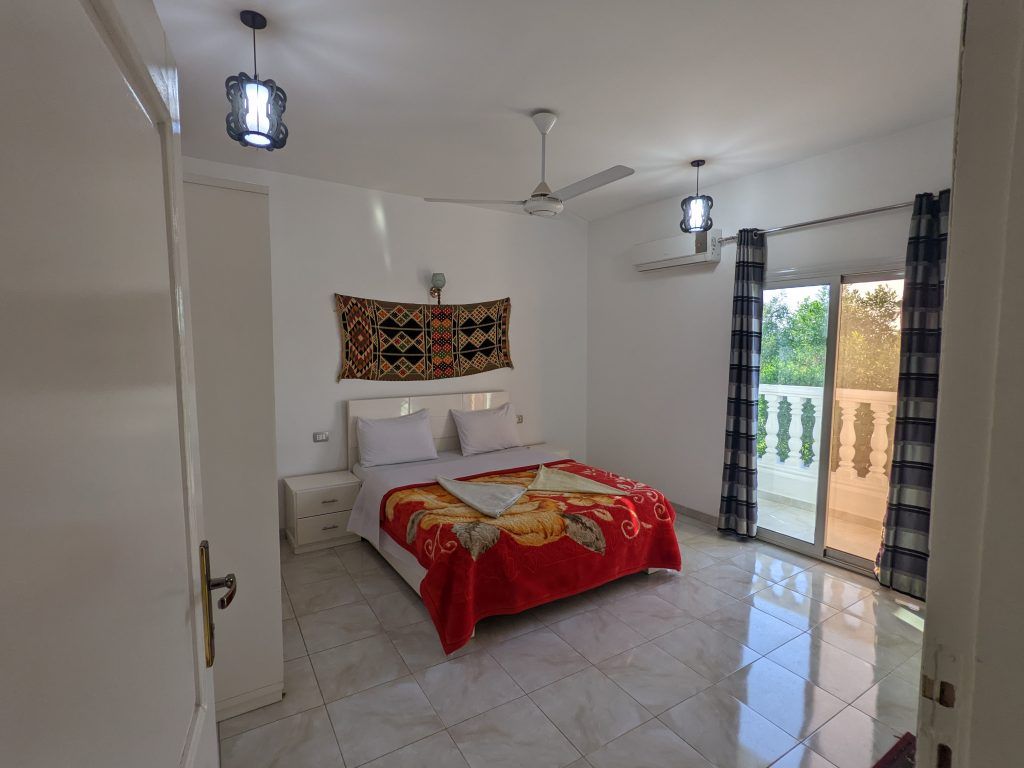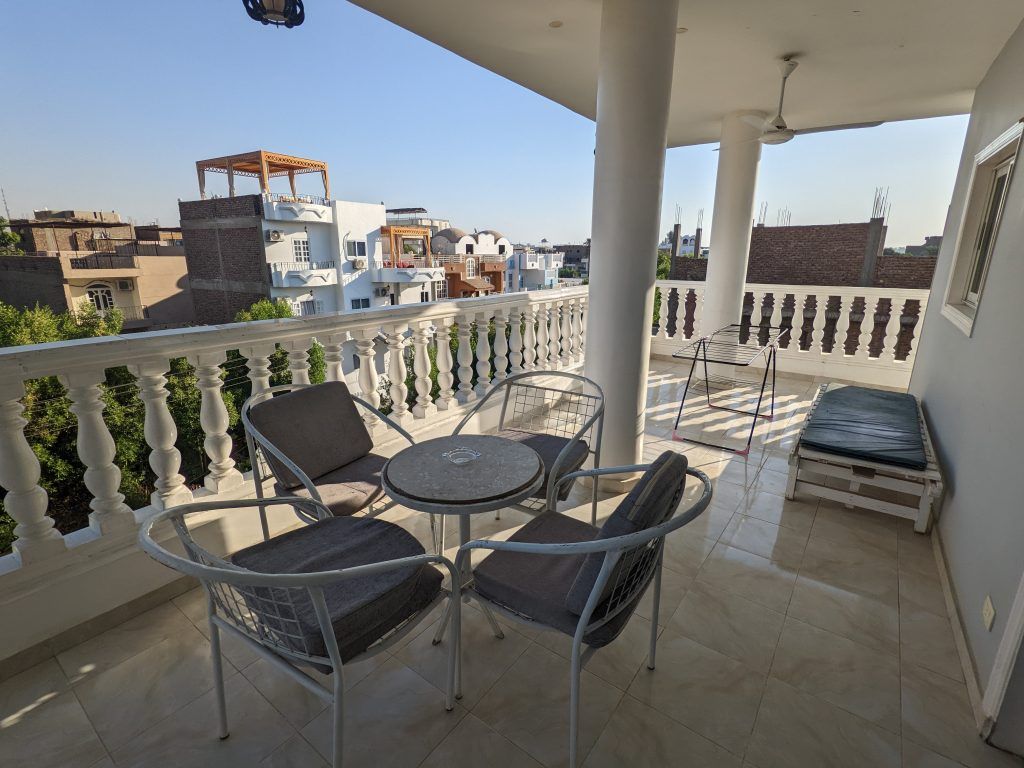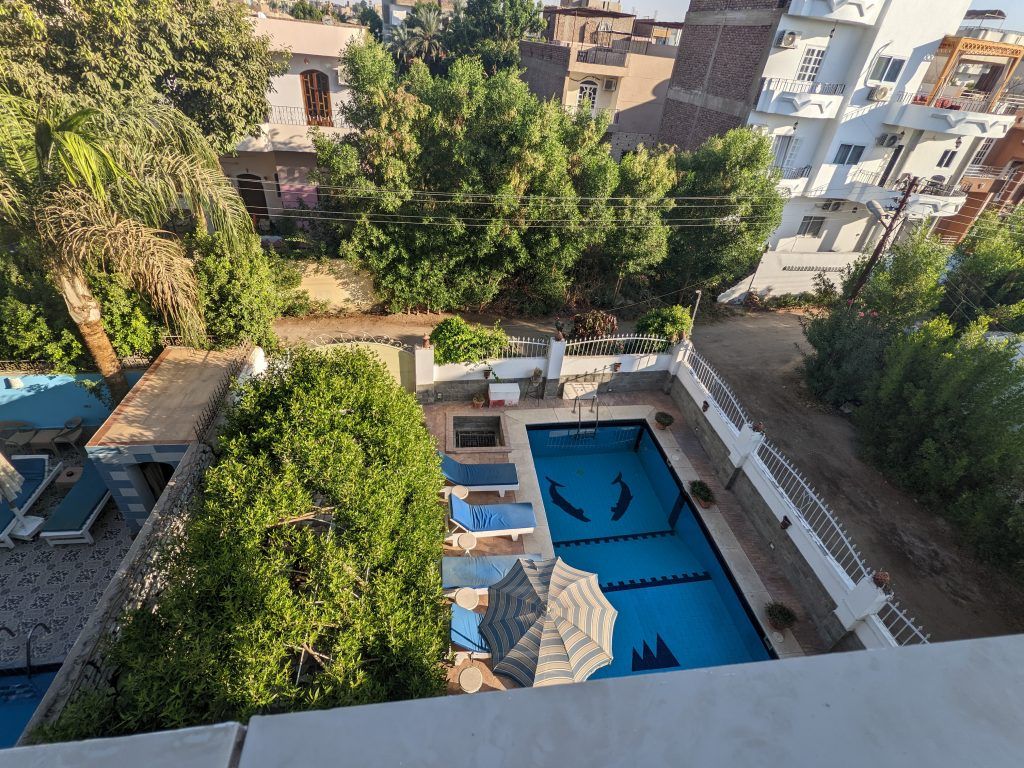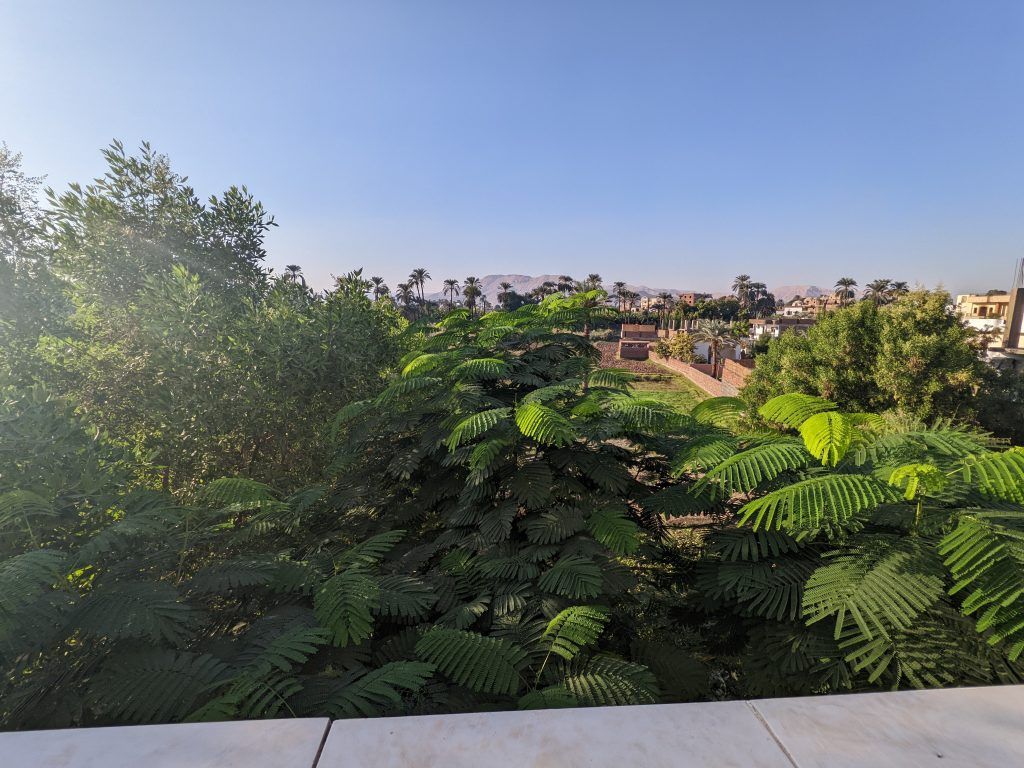One of the enticements of traveling to Egypt was the prospect of a cruise on the Nile and seeing the splendors of ancient Egypt. And so I booked the standard four day cruise from Aswan to Luxor.
Overall, the cruise on the Nile was a really nice experience. But I’d categorize it in two parts: Luxor and non-Luxor. Non-Luxor was seeing some fantastic temples but also doing a 4am 9 hour round trip ride to one temple, and getting caught in a couple of tourist traps around the visit to a second temple. Luxor, on the other hand, was being solely in the heart of ancient Egypt with everything being close by and therefore on a more relaxing itinerary. The ratio of non-temple time to temple time was much better. While I really enjoyed the cruise, in retrospect, I could have passed on the cruise and just spent a few days in Luxor to see the temples there and maybe do a relaxing afternoon dhow ride to capture the Nile experience.
Visiting Luxor
Luxor is often called the world’s greatest open air museum, but that doesn’t come close to describing this extraordinary place. Ancient Thebes (now Luxor) was the capital of Egypt for much of its dynastic history. While the pharaohs were autocratic megalomaniacs, they sure knew how to build some amazing monuments to themselves and their gods. It’s also incredibly picturesque as the Nile flows between the modern city and west bank monuments.
Balloon Ride Over Luxor
Our last morning we were able to float over the west bank of Luxor in hot air balloons just after the sun came up. Gliding over the ancient ruins and modern small farms was an incredible experience and easily the highlight of the trip.
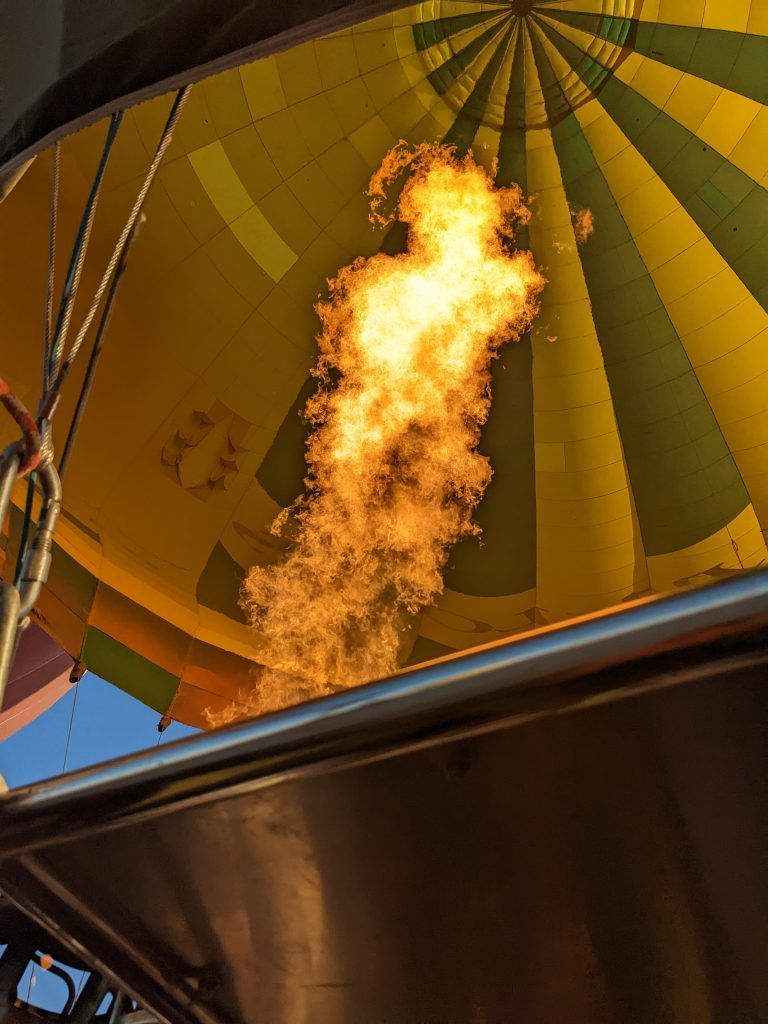
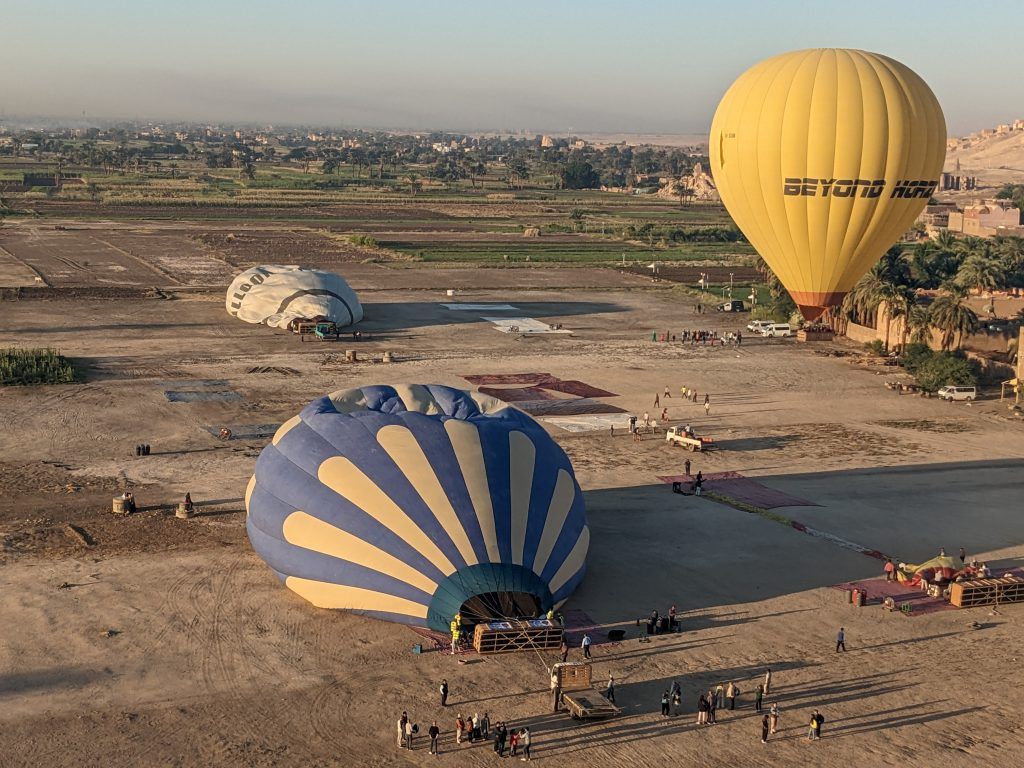
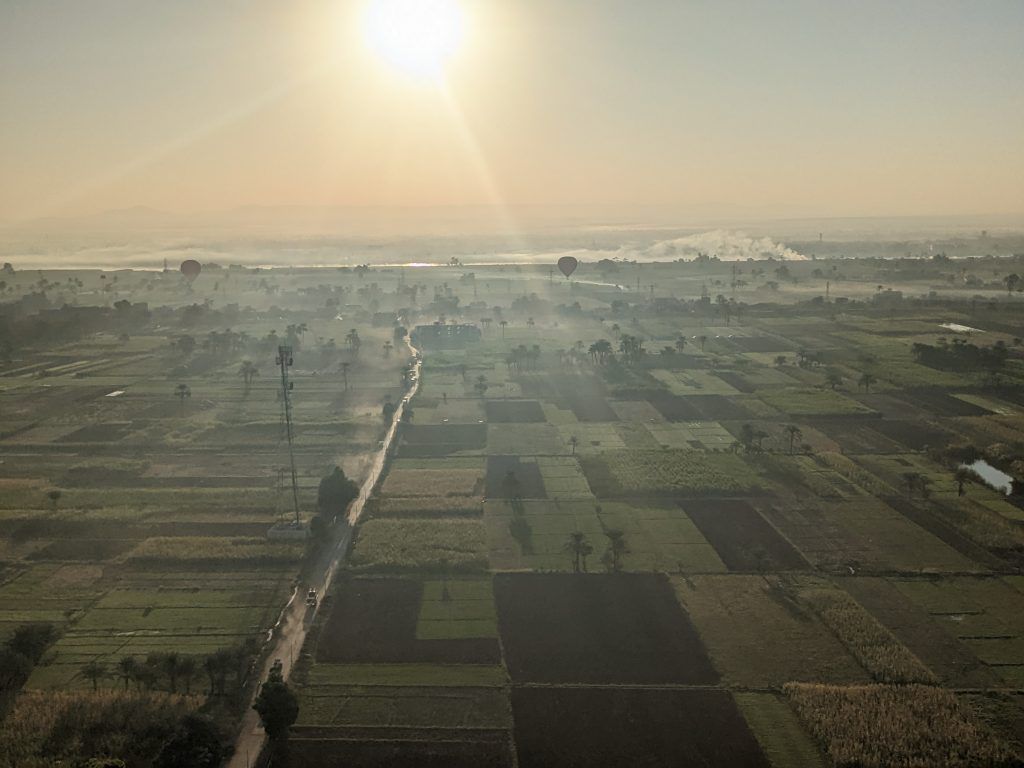
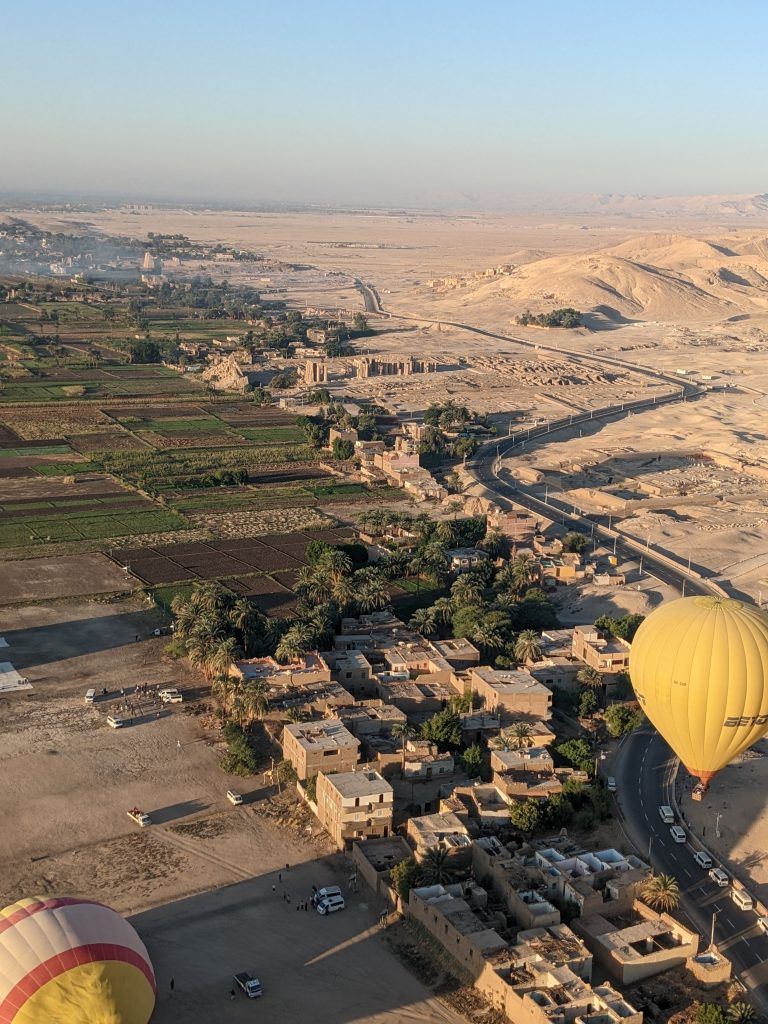
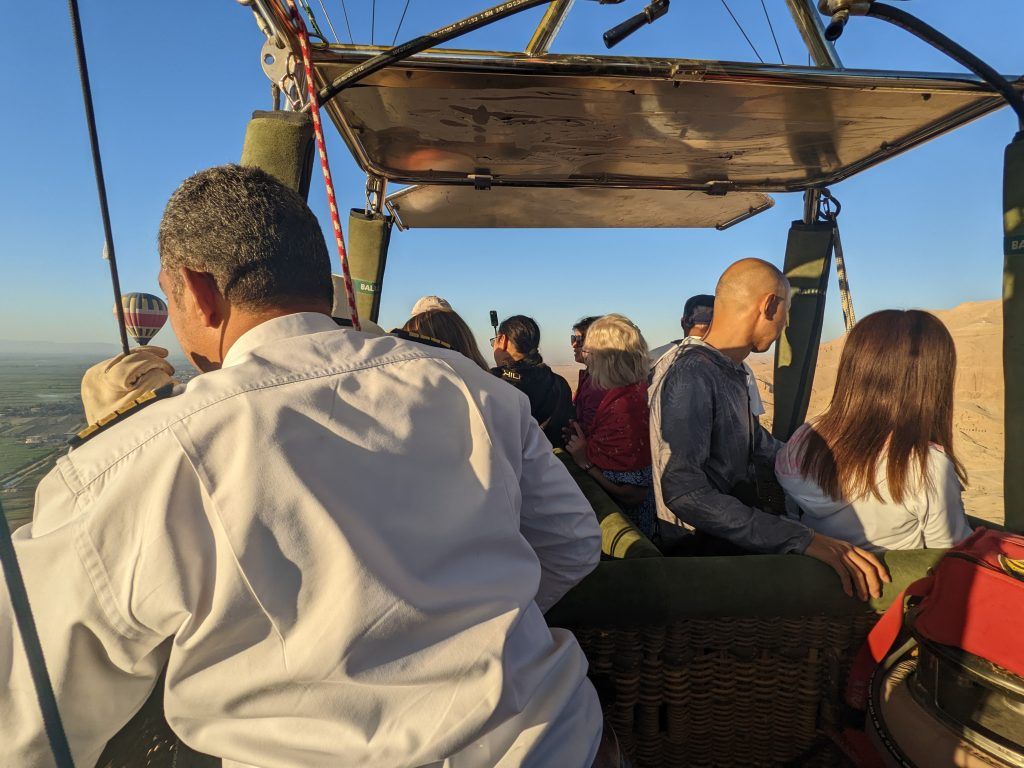
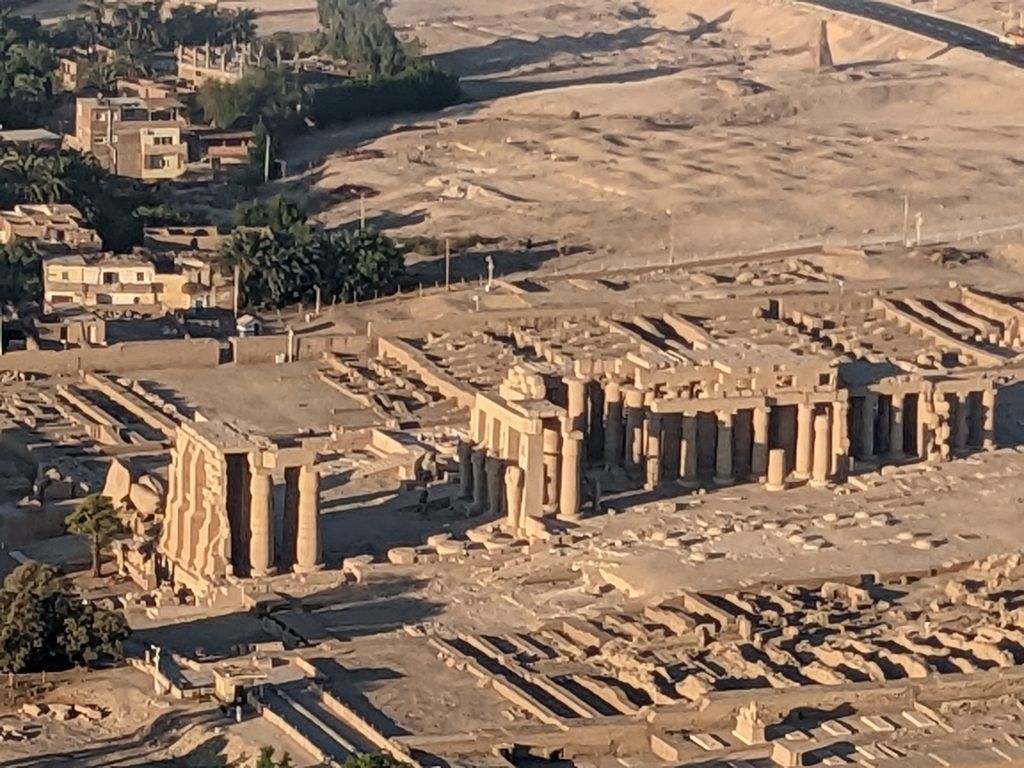
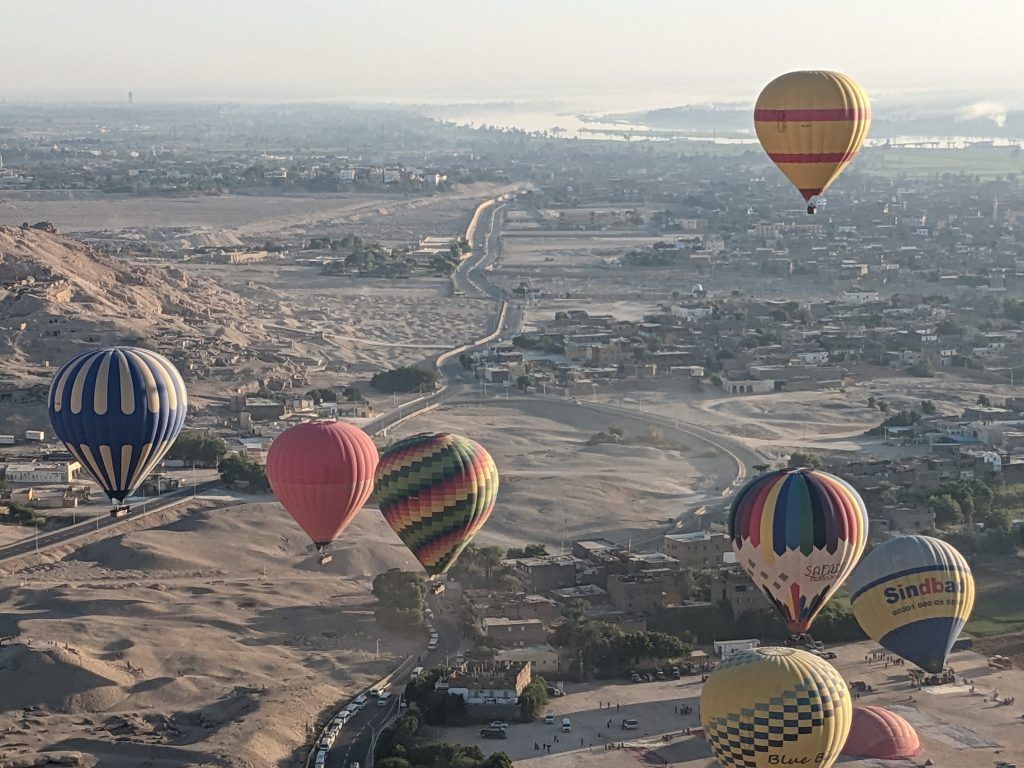
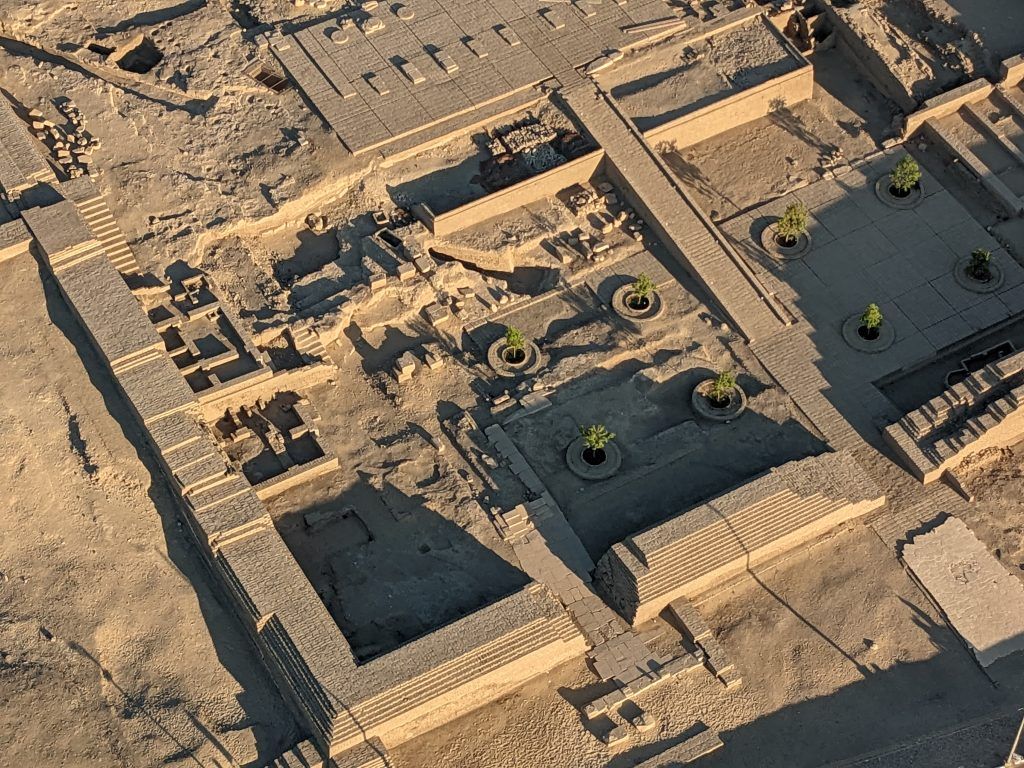
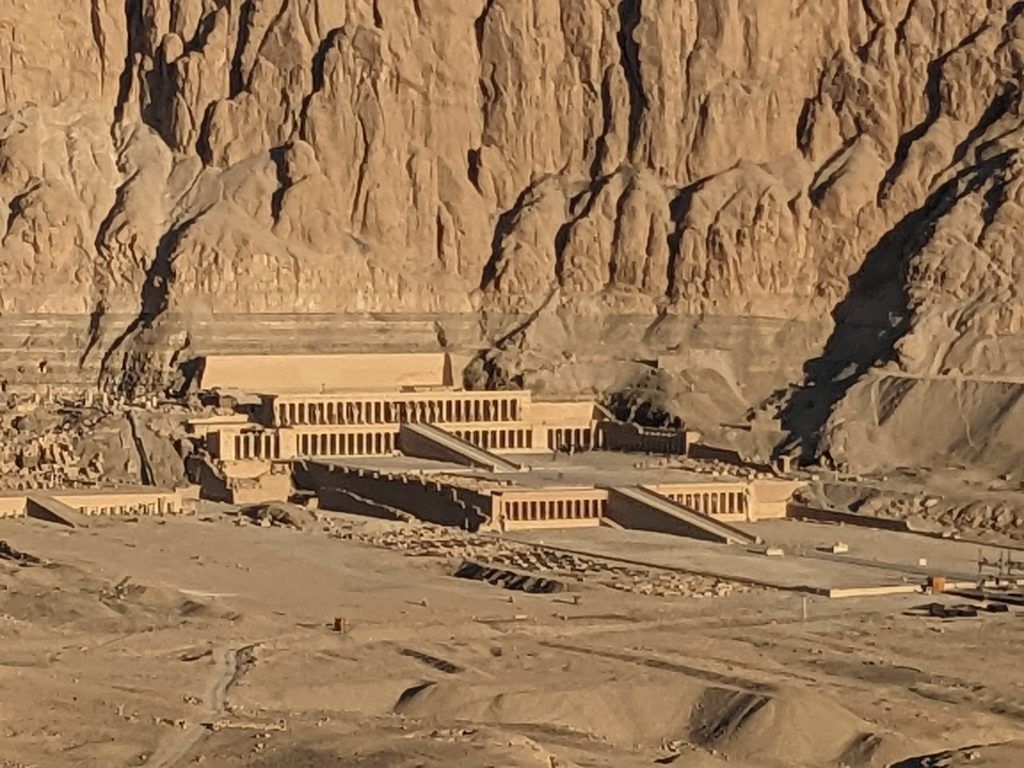
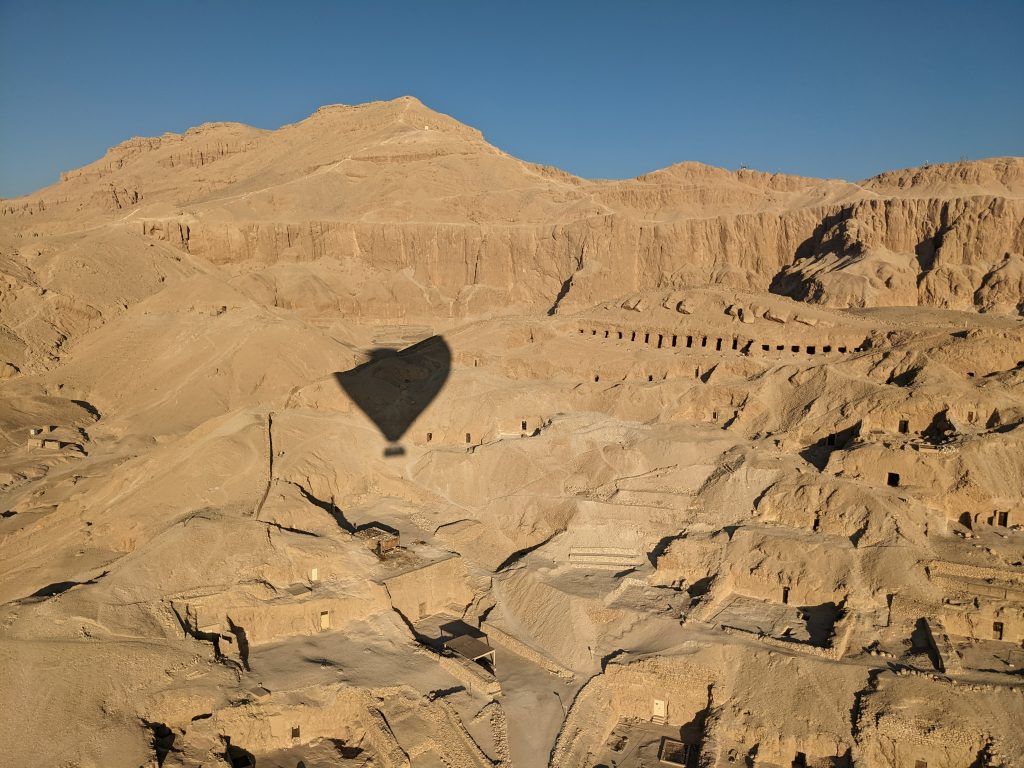
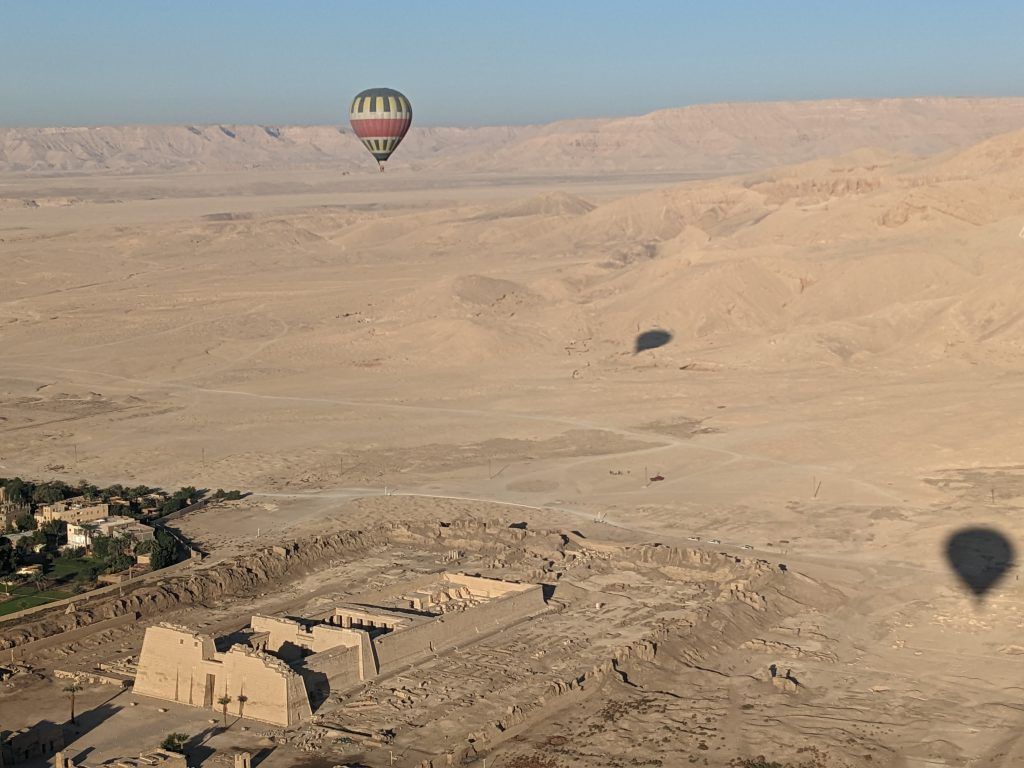
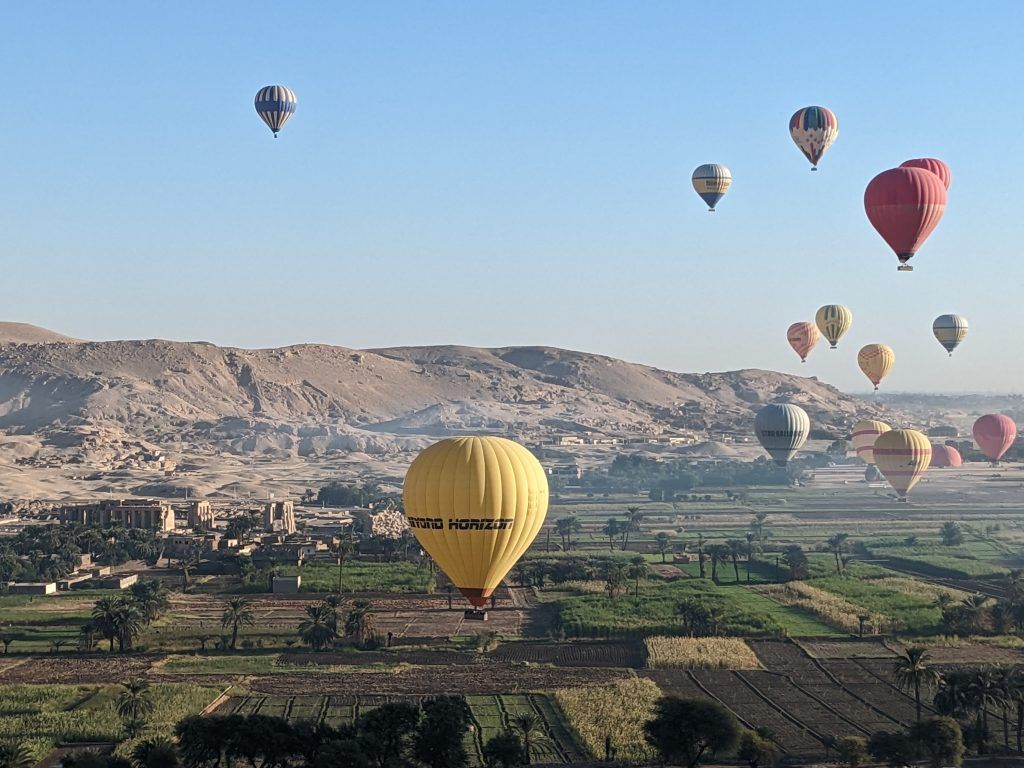
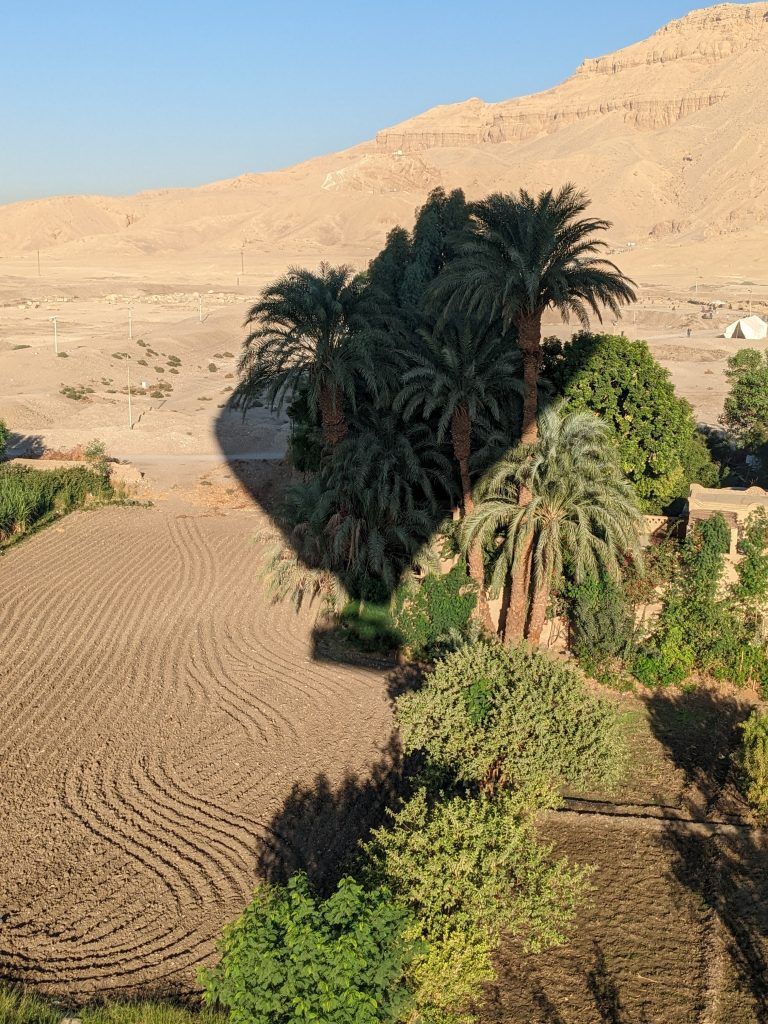
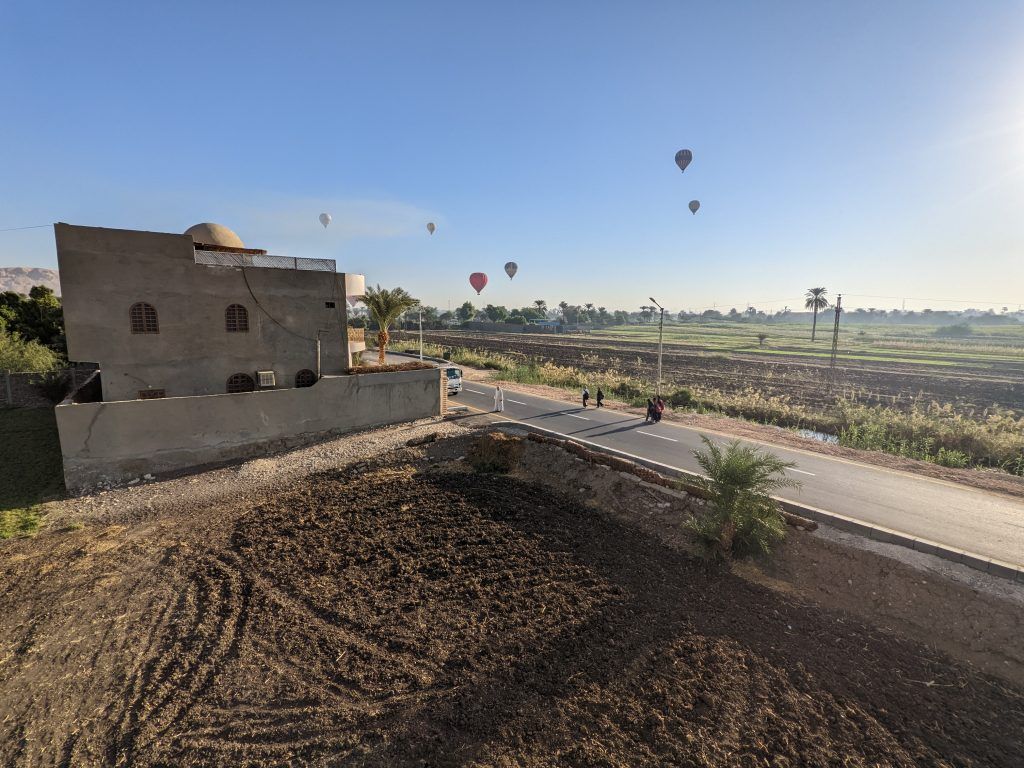
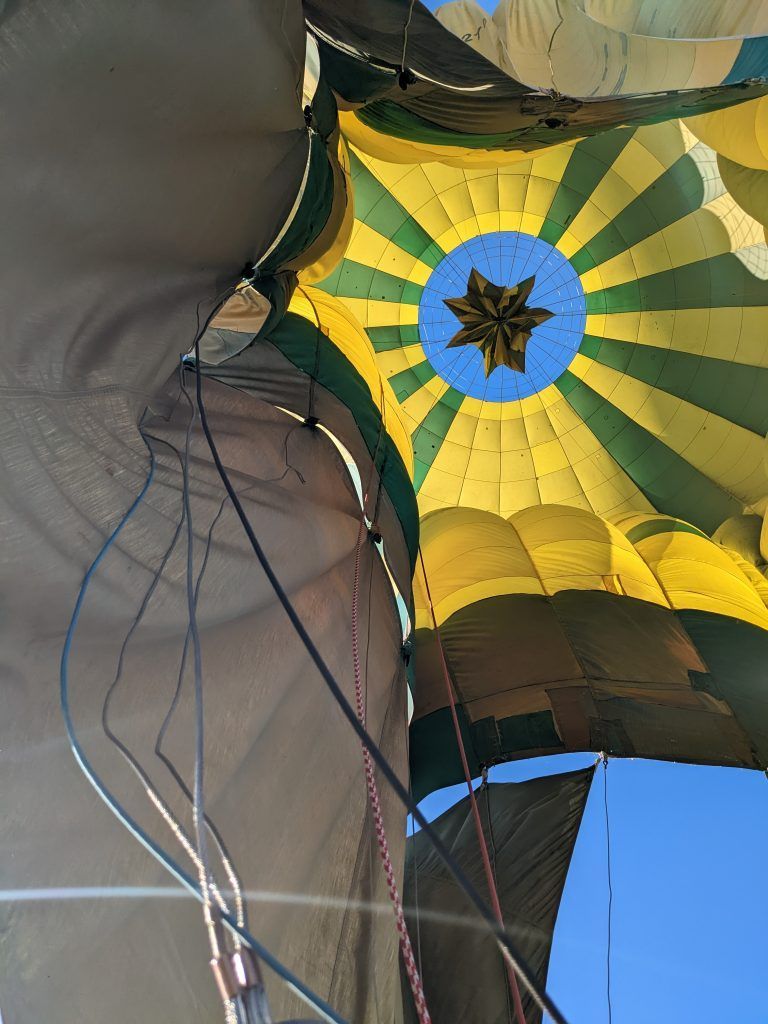
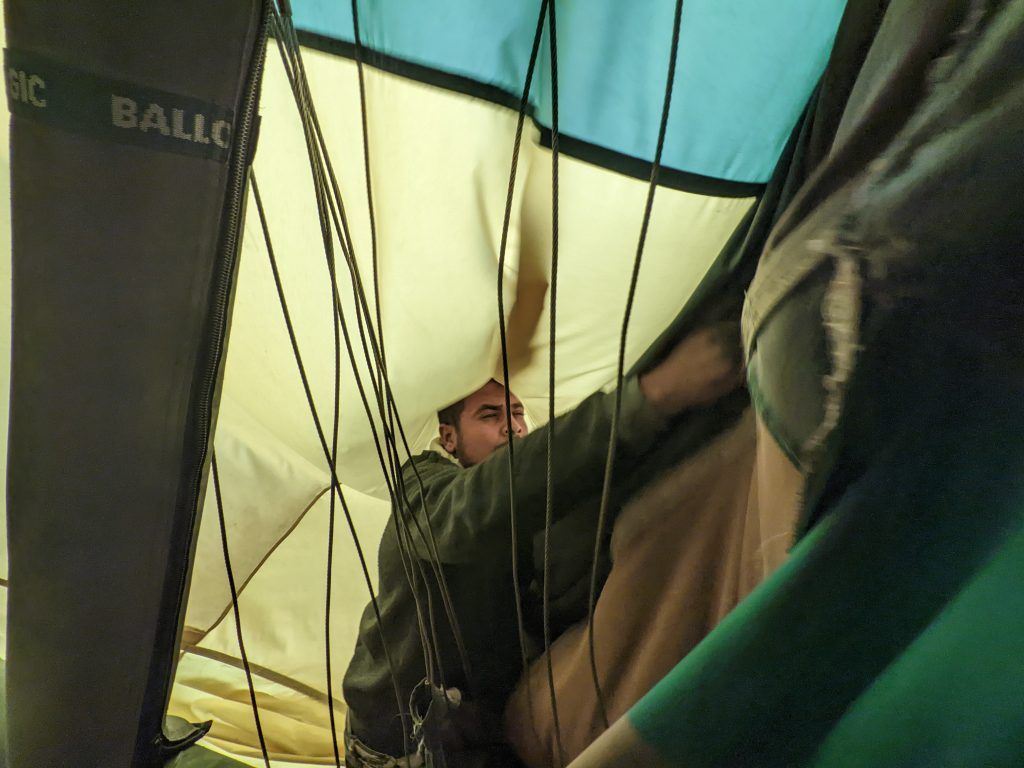
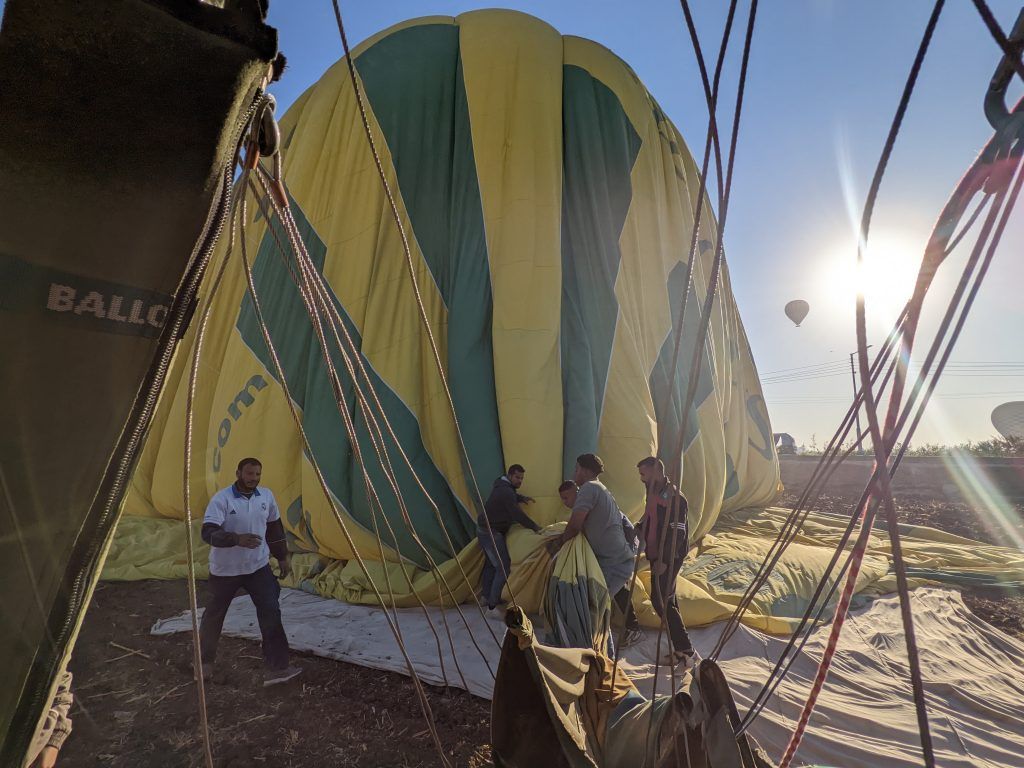
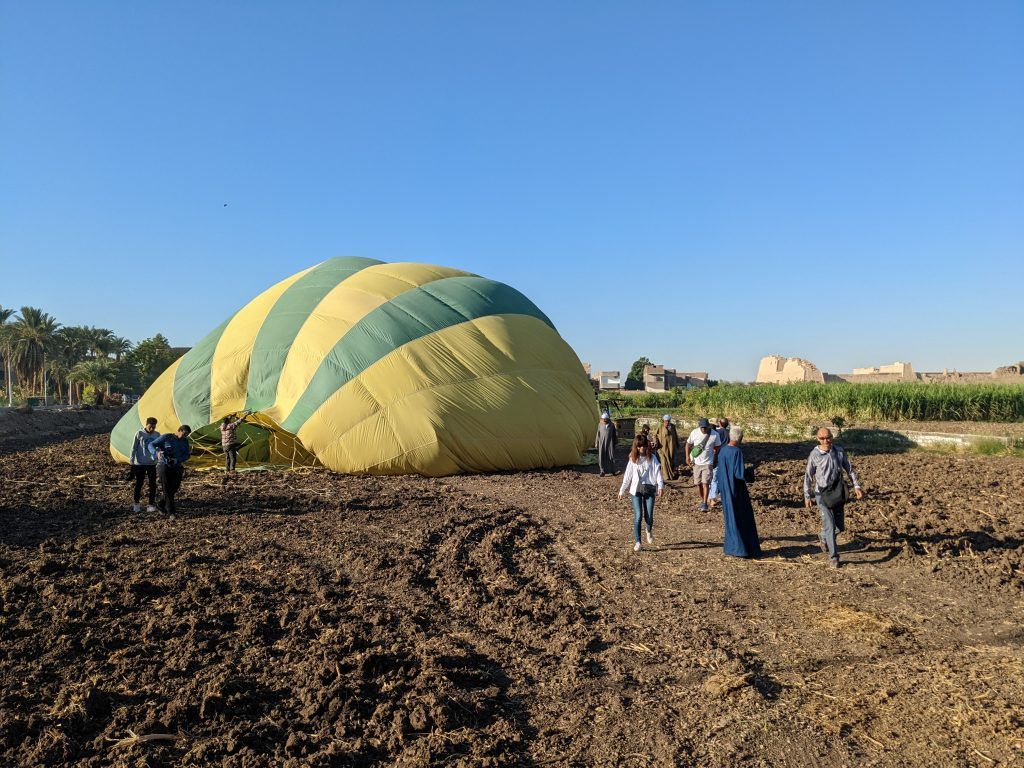
Visiting Karnak
Karnak is an extraordinary two square kilometer complex of sanctuaries, kiosks, pylons and obelisks dedicated to the greater glory of pharaohs in all their narcistic glory. It was the most important place of worship in Egypt during the New Kingdom period. The complex is dominated by the Temple of Amun-Ra which is one of the world’s largest religious complexes.
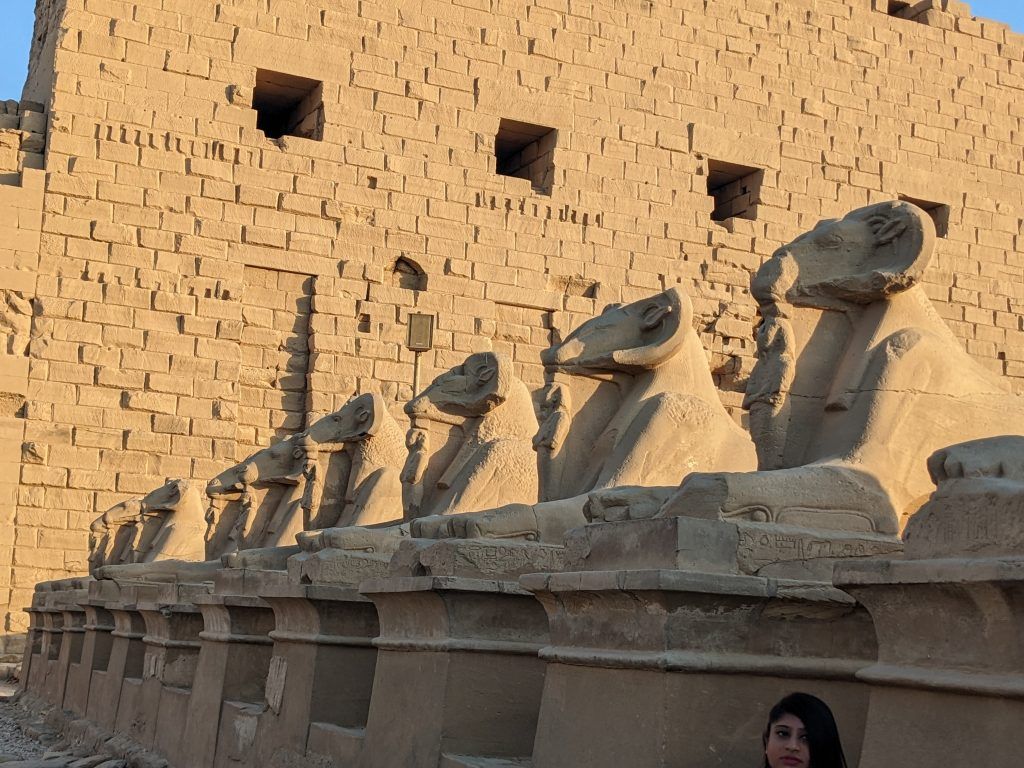
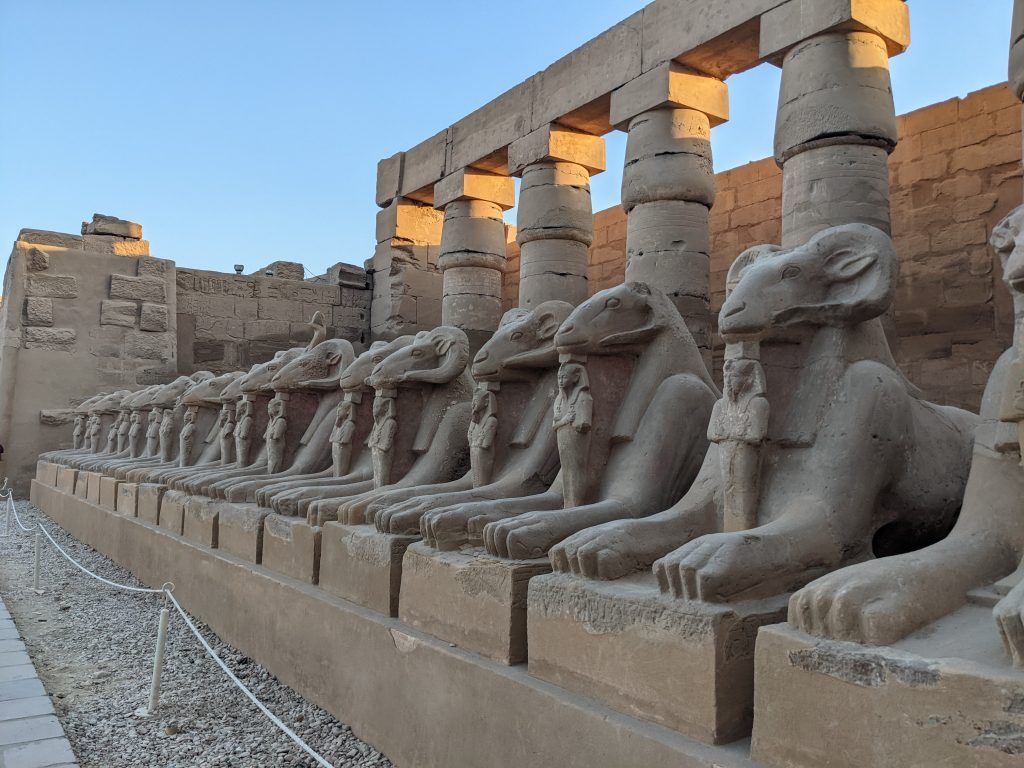
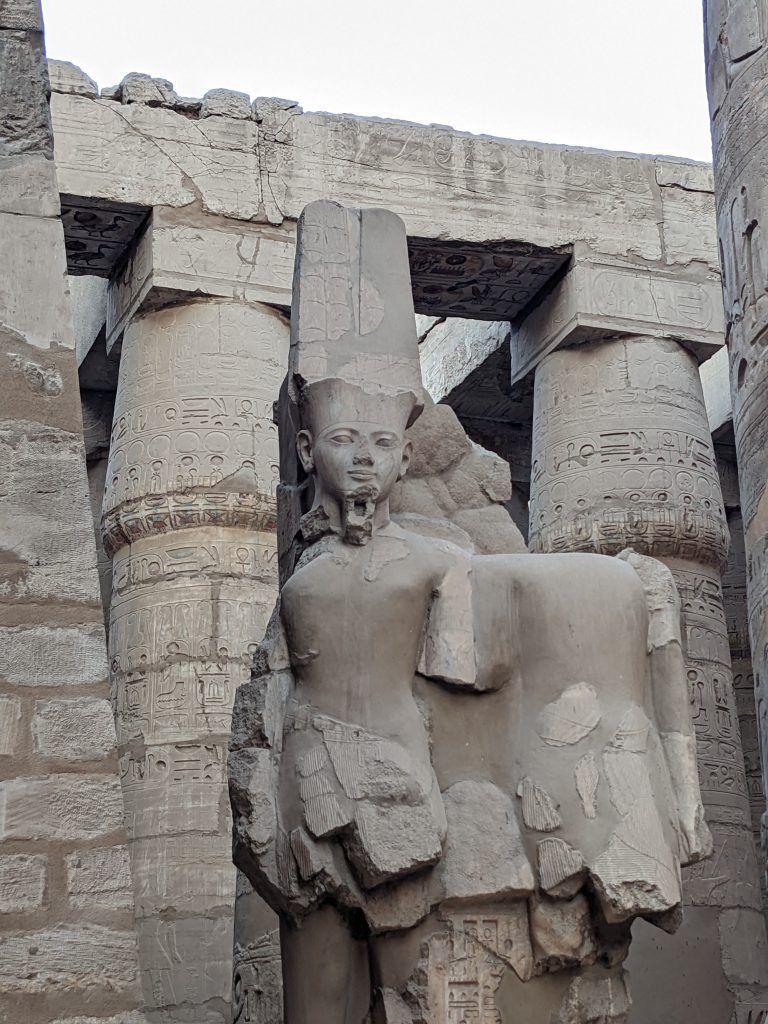
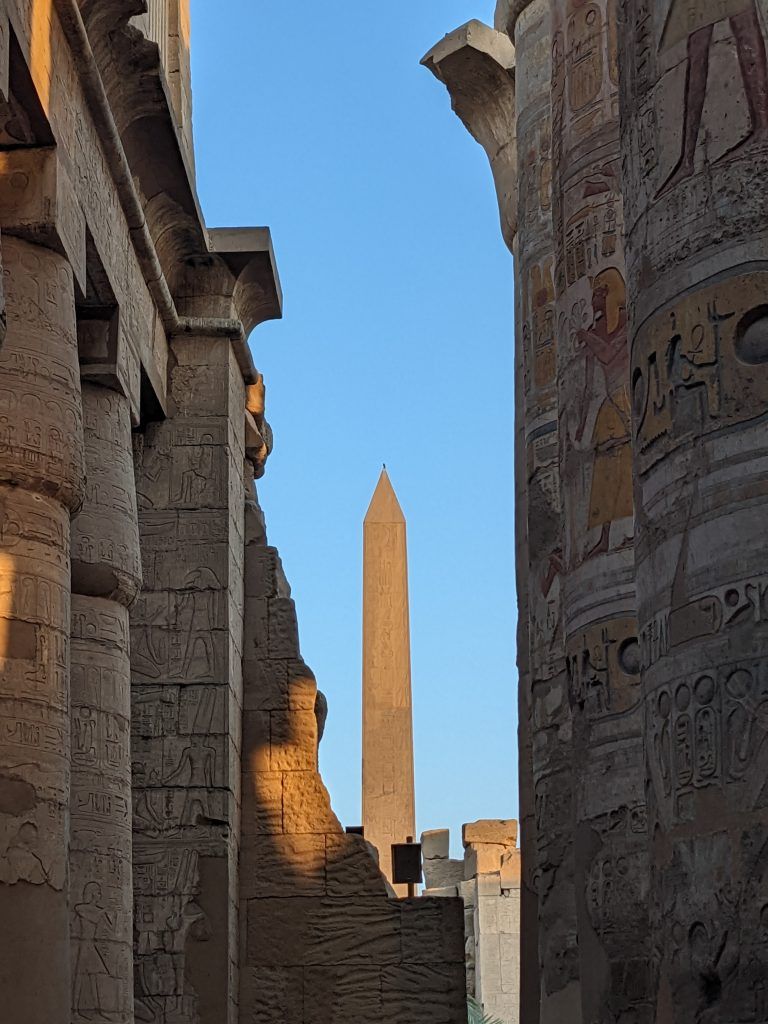
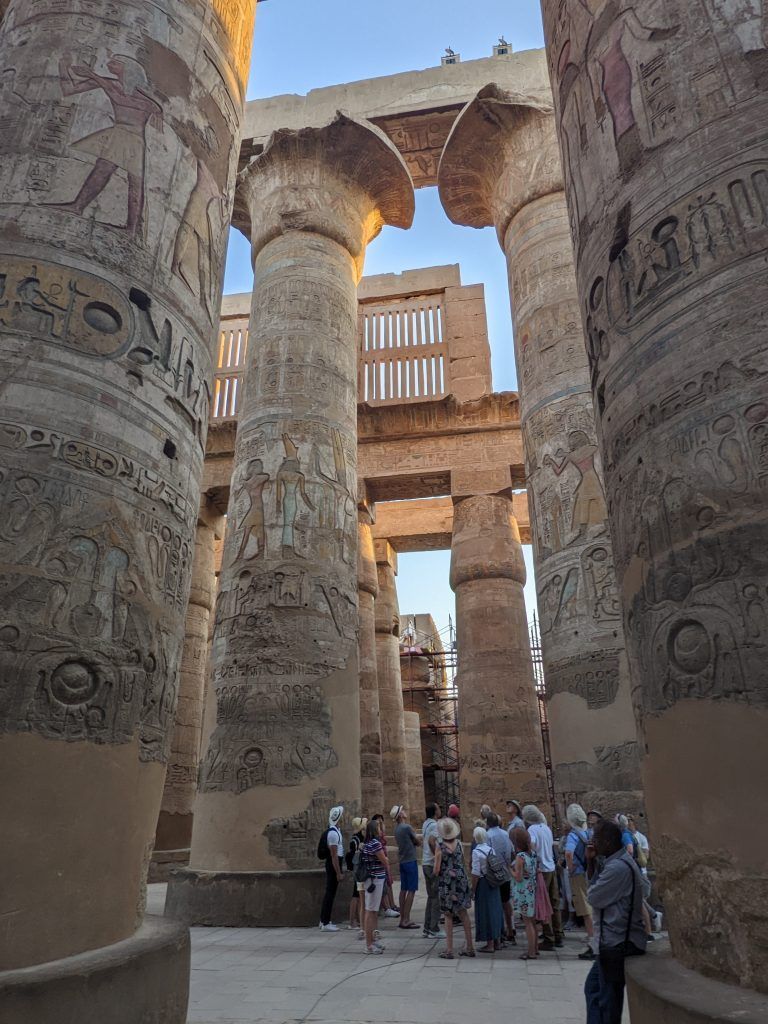
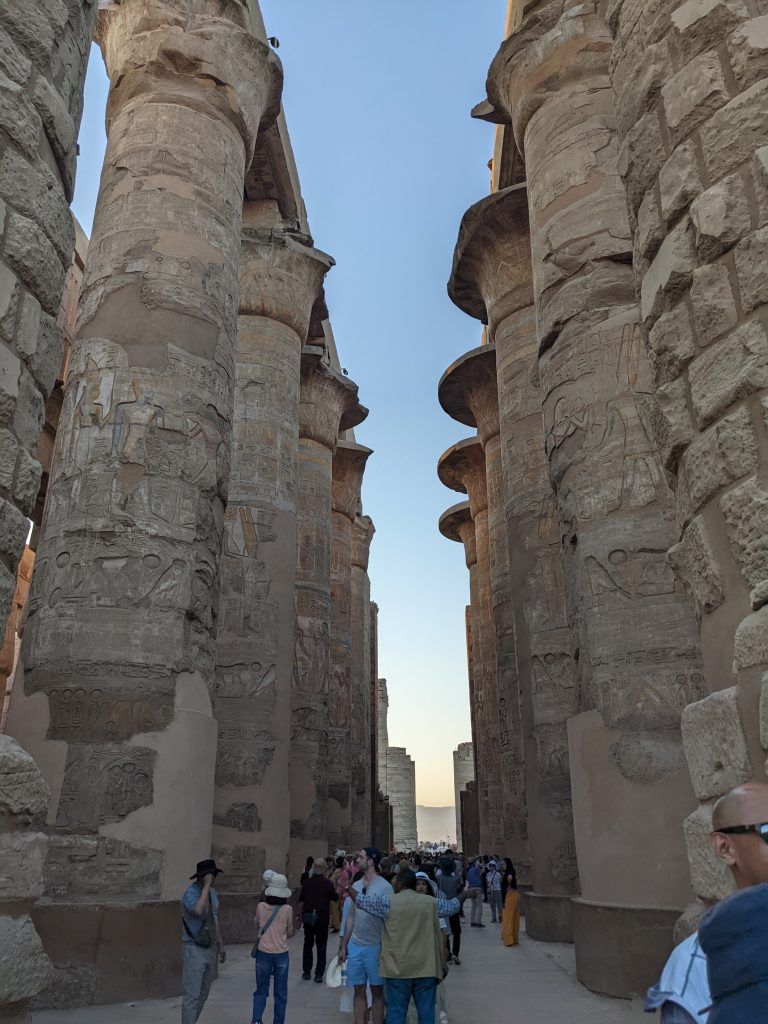
Luxor Temple
Luxor Temple is a huge complex that was built between 1390 and 1213 BC by emperors Amenhotep III and Ramses II. It’s since had parts added by the Ptolemaic kings of Greece, the Romans, the Christians and, a few hundred years ago, by the Muslims with the addition of a mosque to the property.
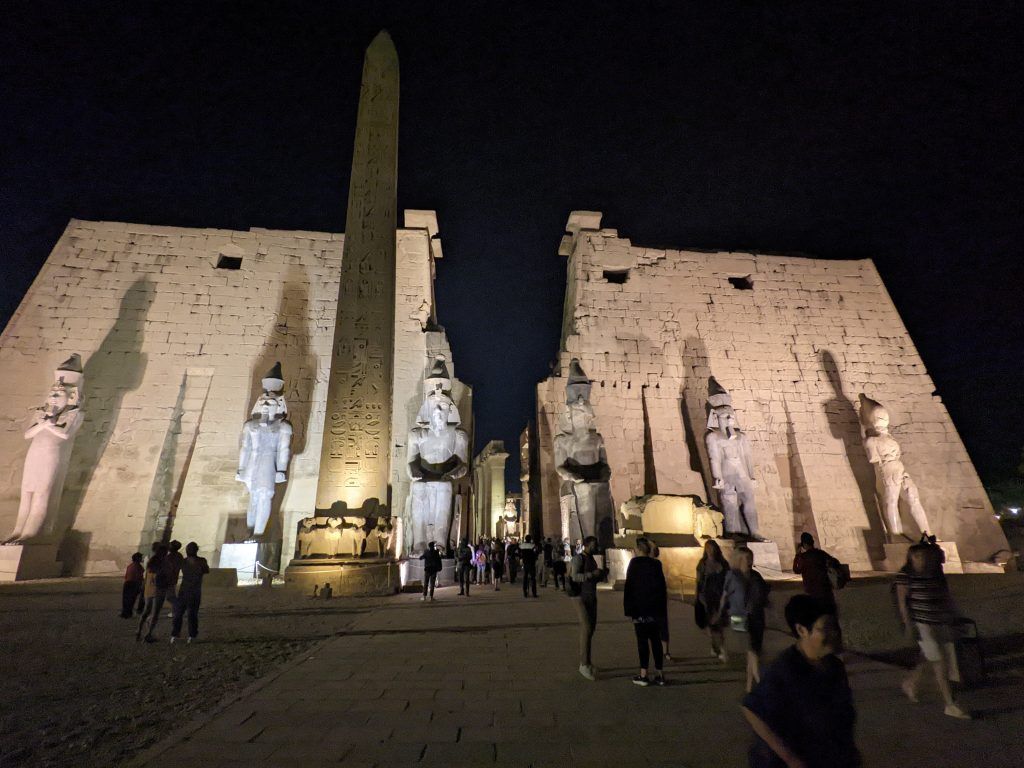
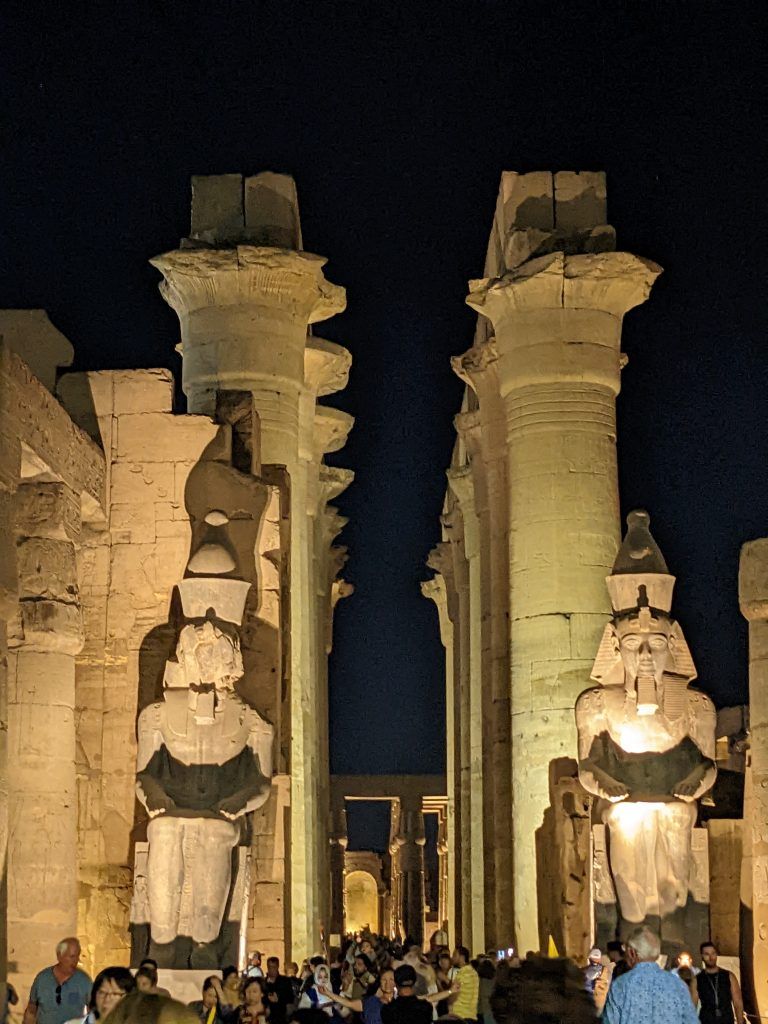
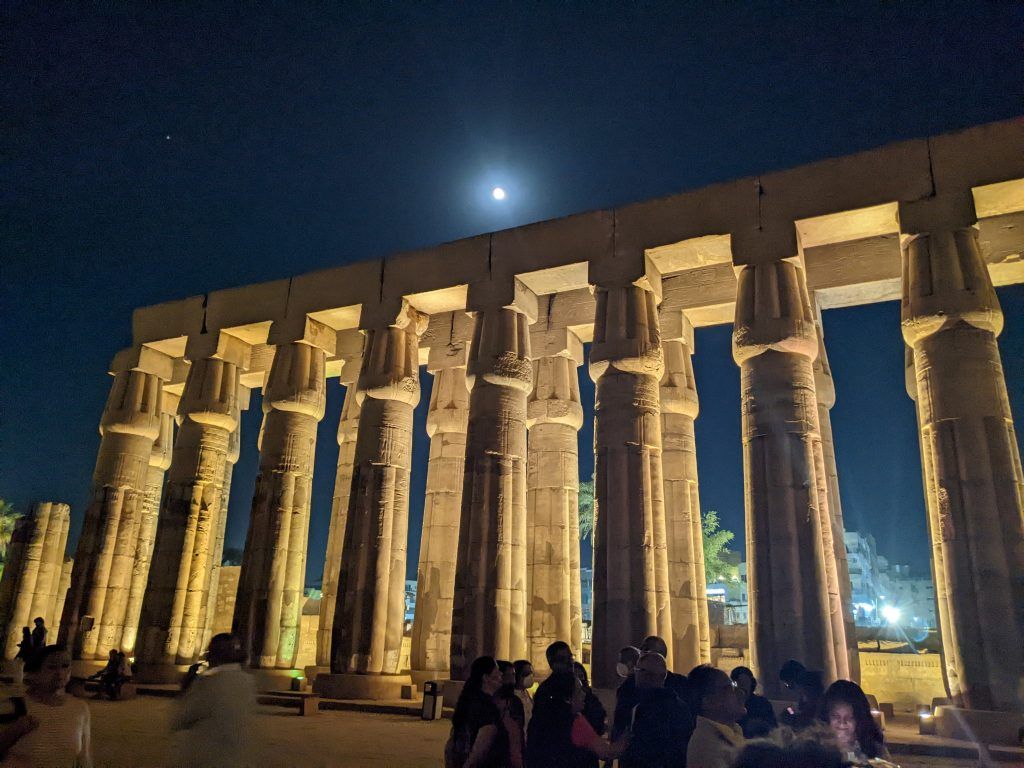
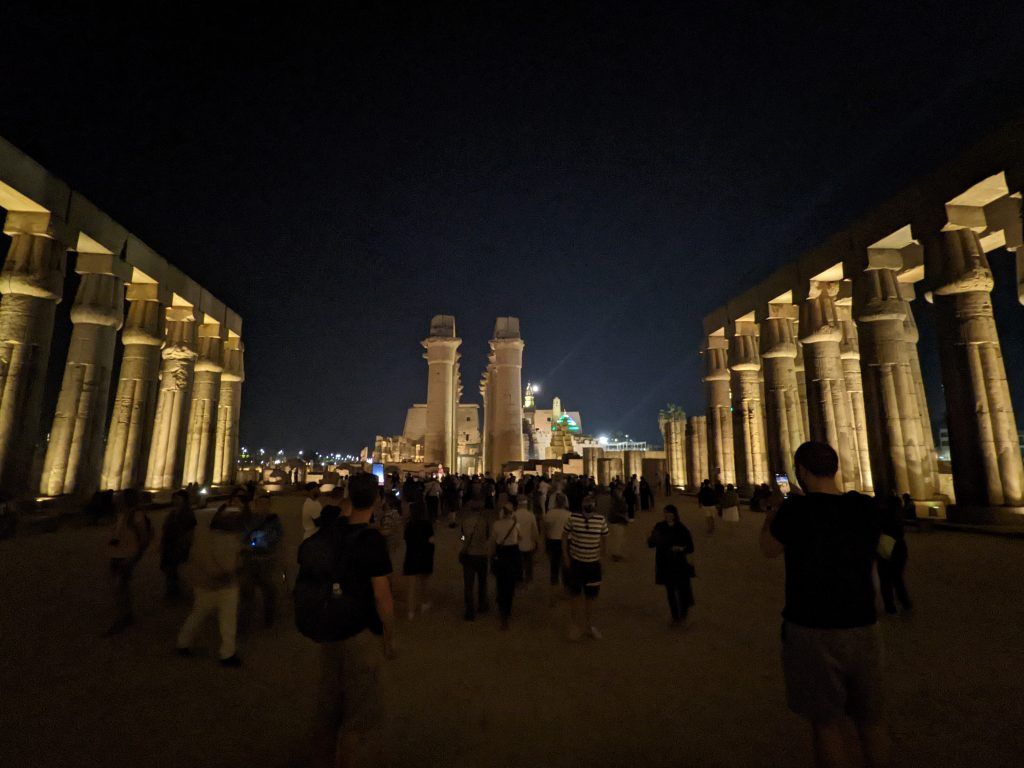
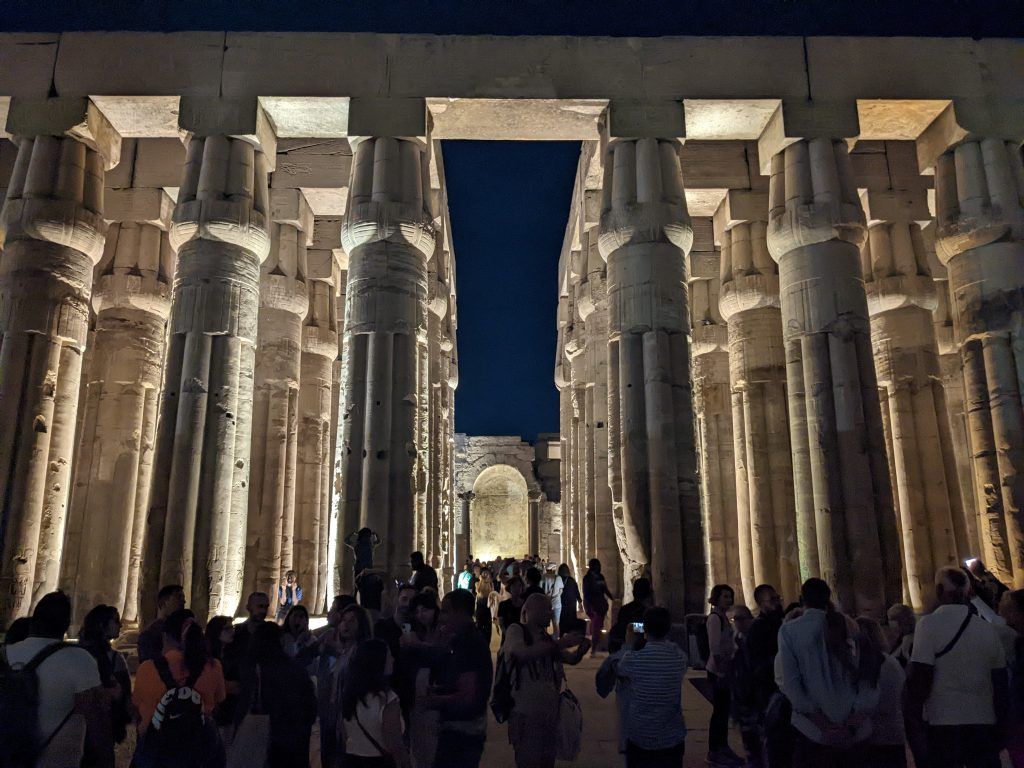
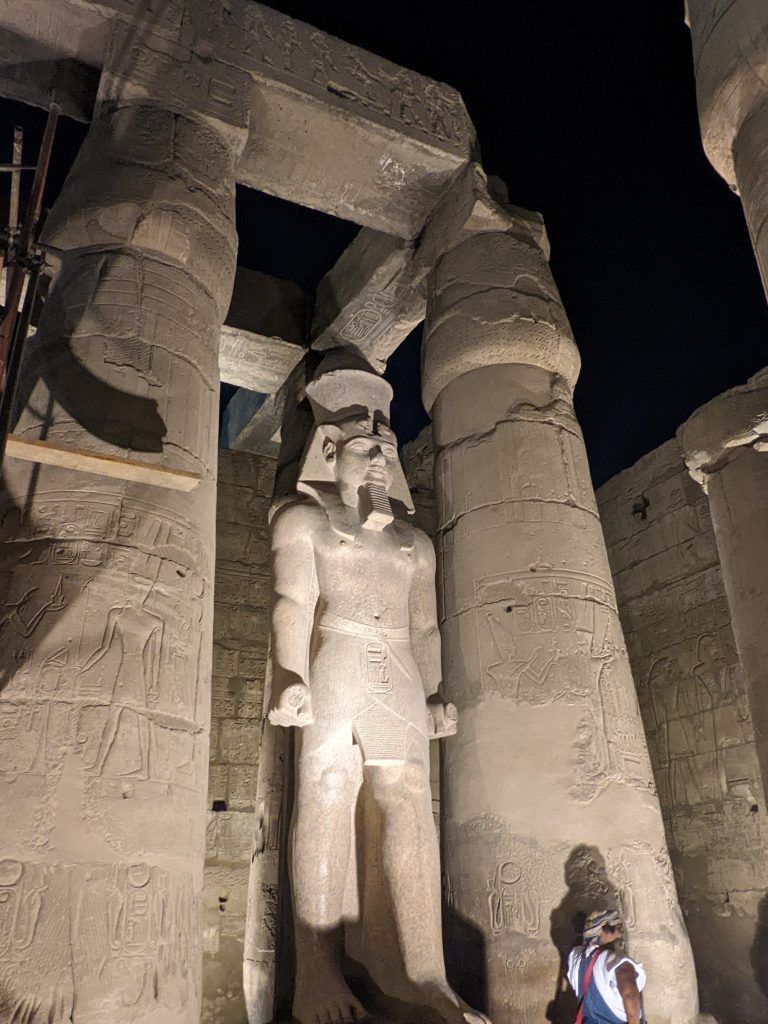
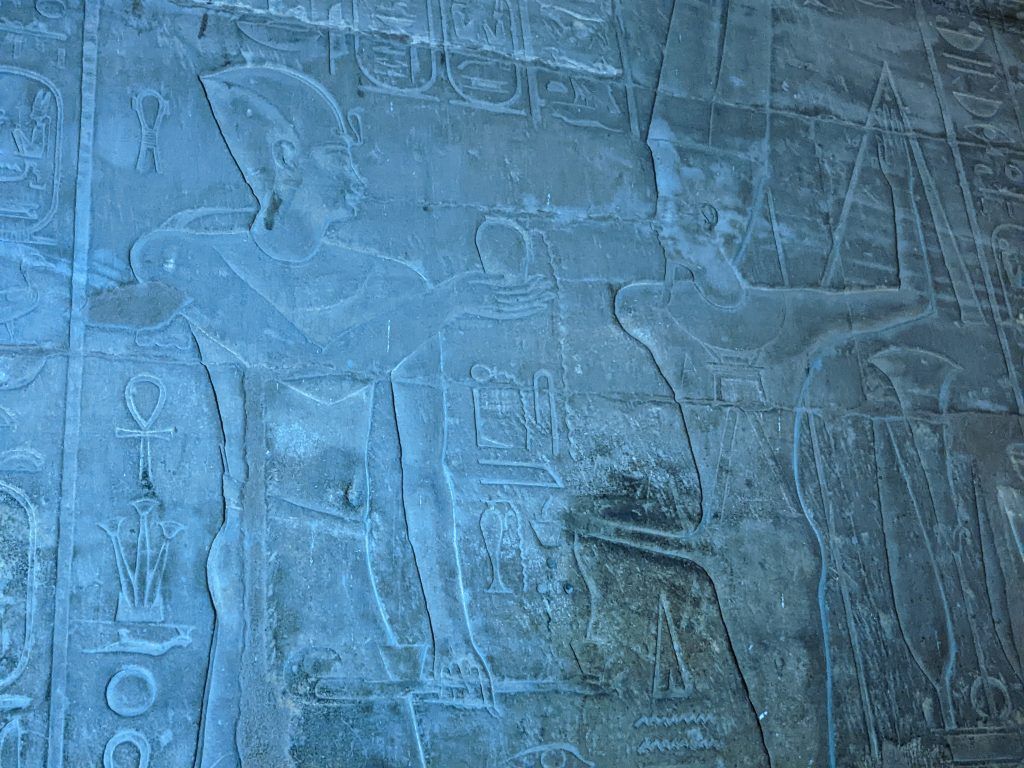
Medinet Habu Temple
The Medinet Habu Temple was built as a temple and subsequent palace for Ramses III. The best part about it is it has the most well preserved colors of any of the outdoor monuments. The last remnants provide a glimpse of the rich, bright colors that must have existed over 3,000 years ago when it was built.
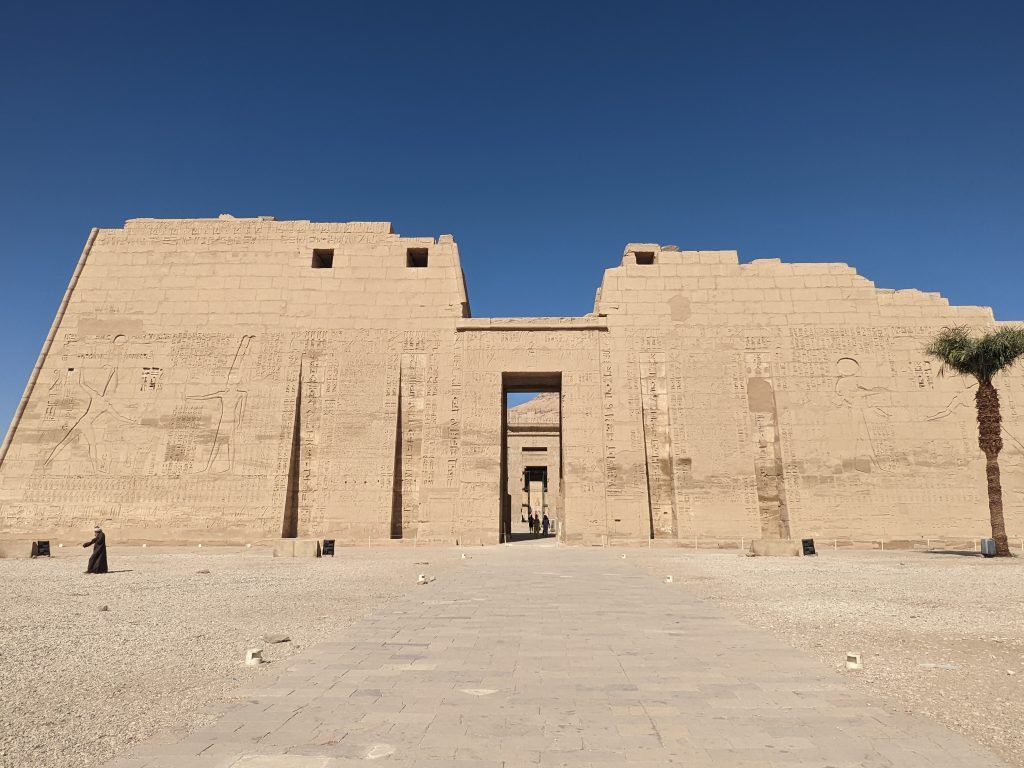
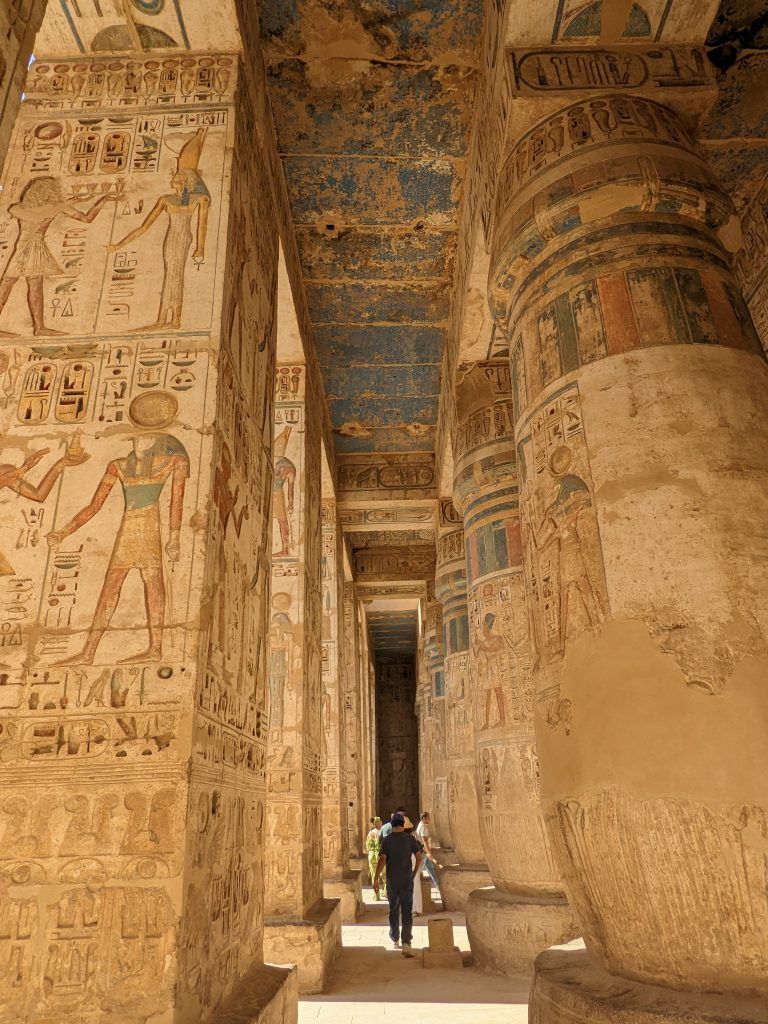
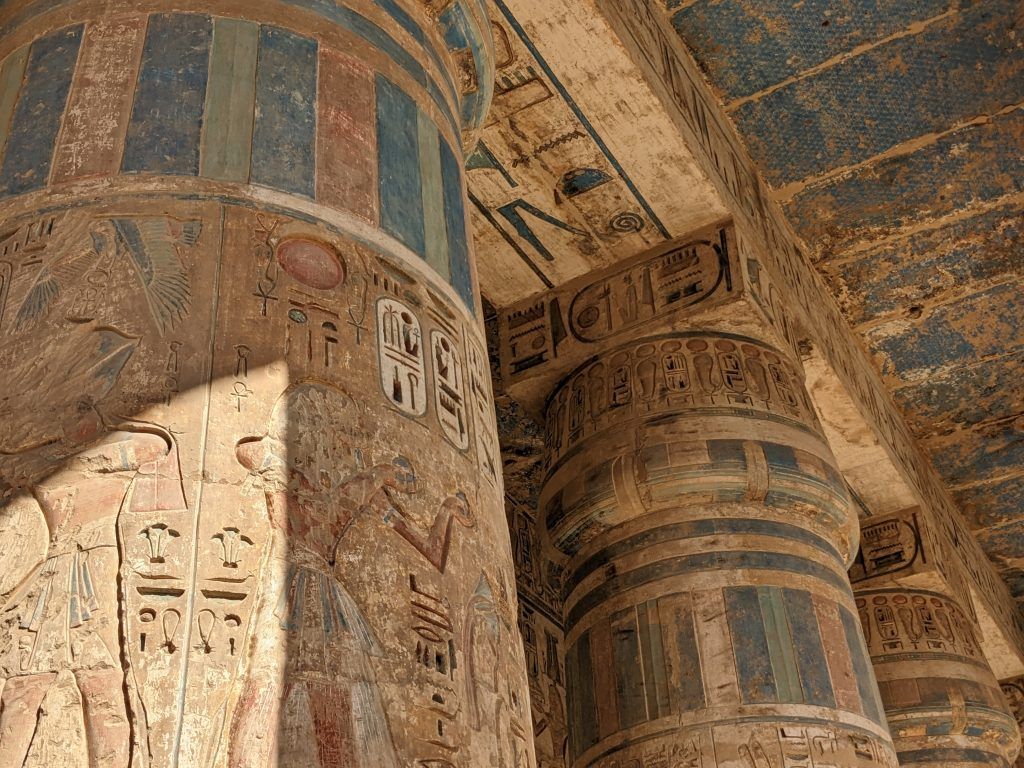
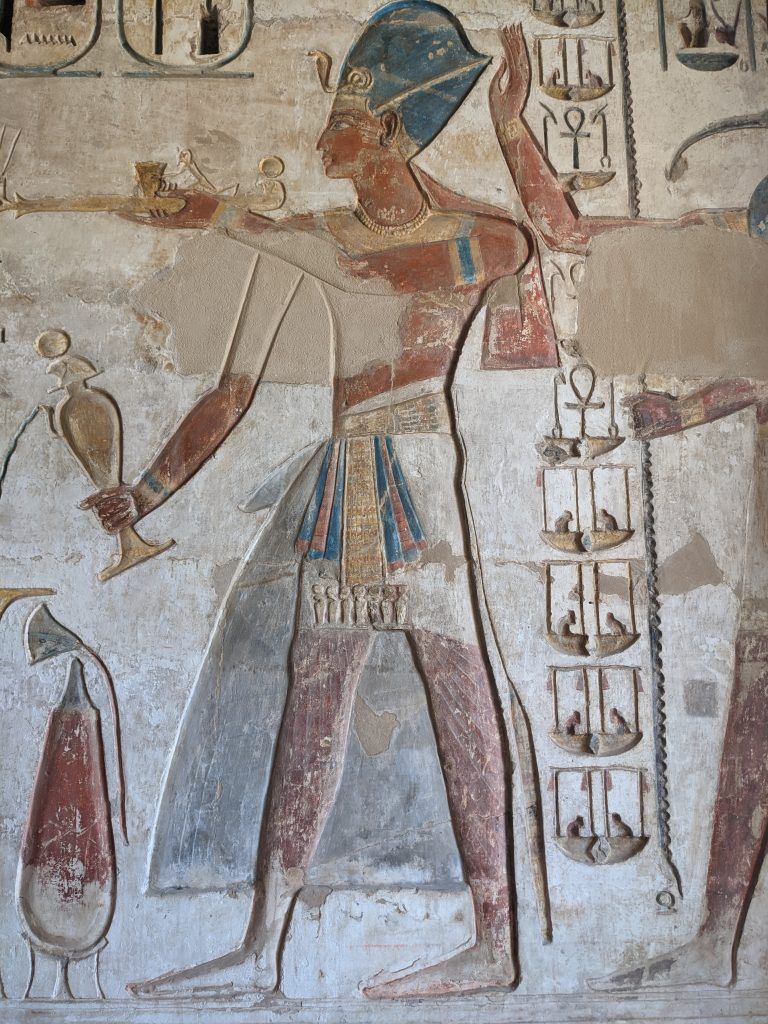
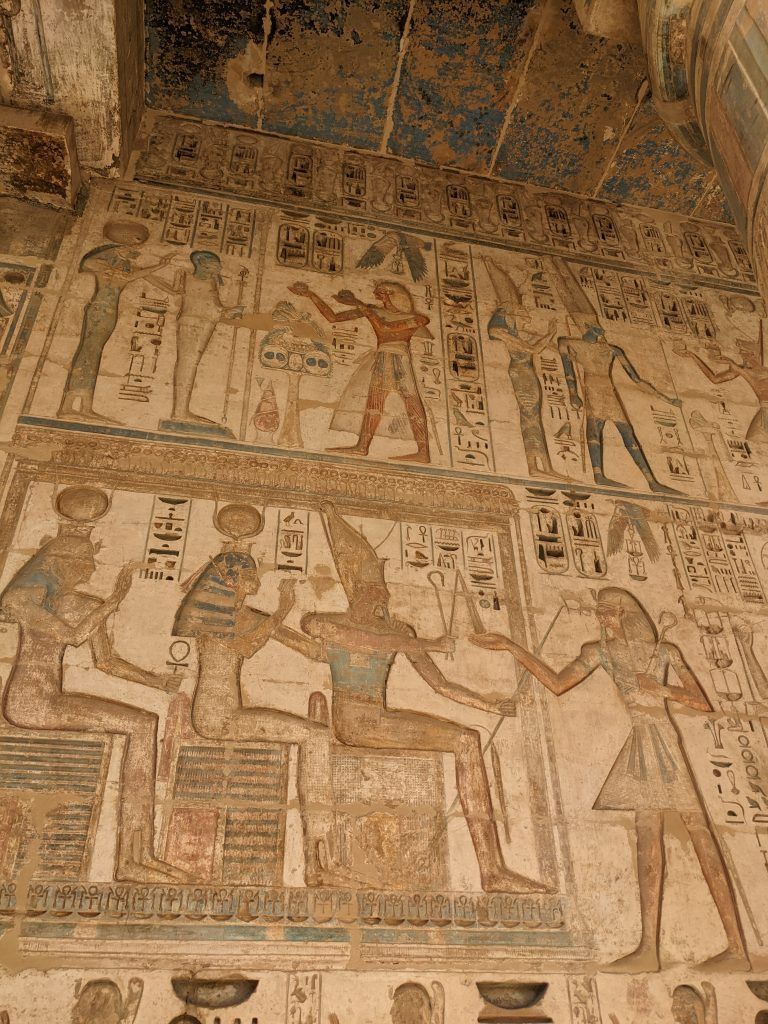
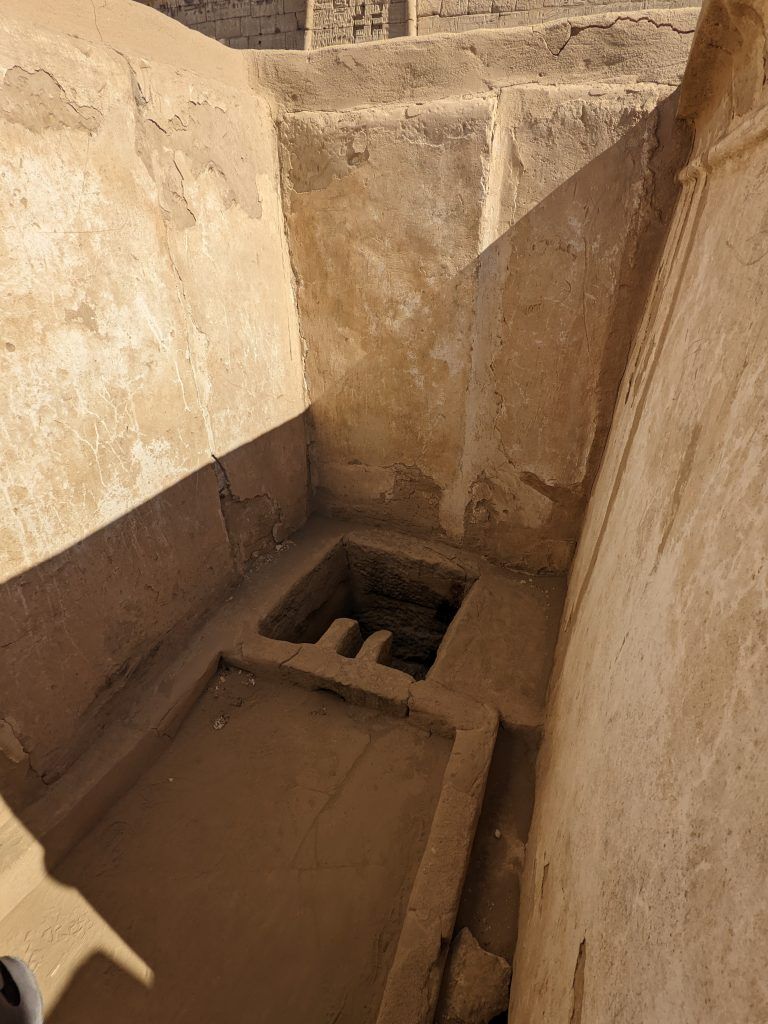
The Valley of the Kings
The Valley of the Kings is a series of 63 magnificent royal tombs that began being used over 4,000 years ago. For preservation purposes they rotate which ones are open at any one time. We saw four amazing ones including one for Ramses II and then one for Ramses’ V and VI. Being underground allowed much of the rich colors of the original artwork to be relatively well preserved after over all this time.
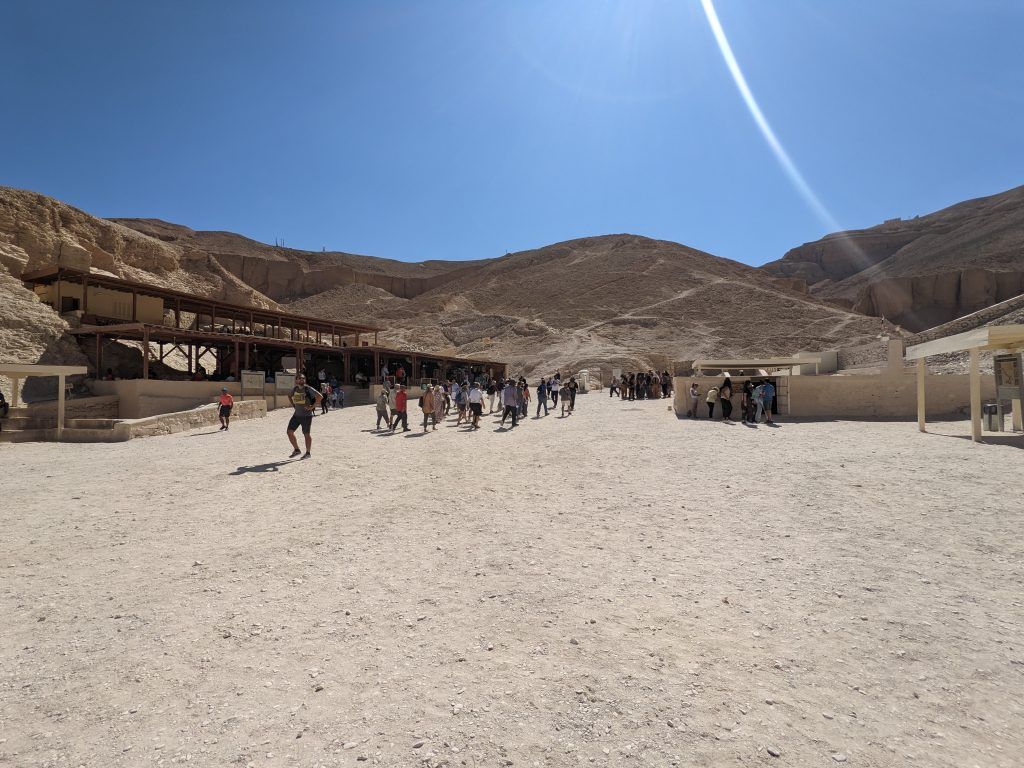
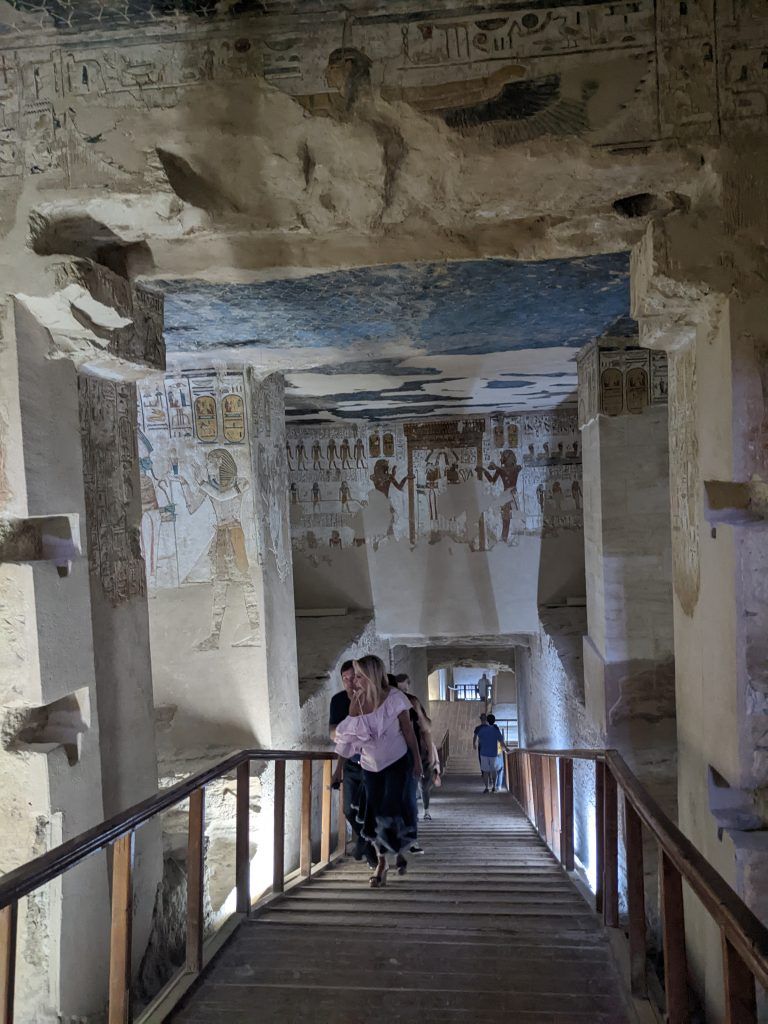
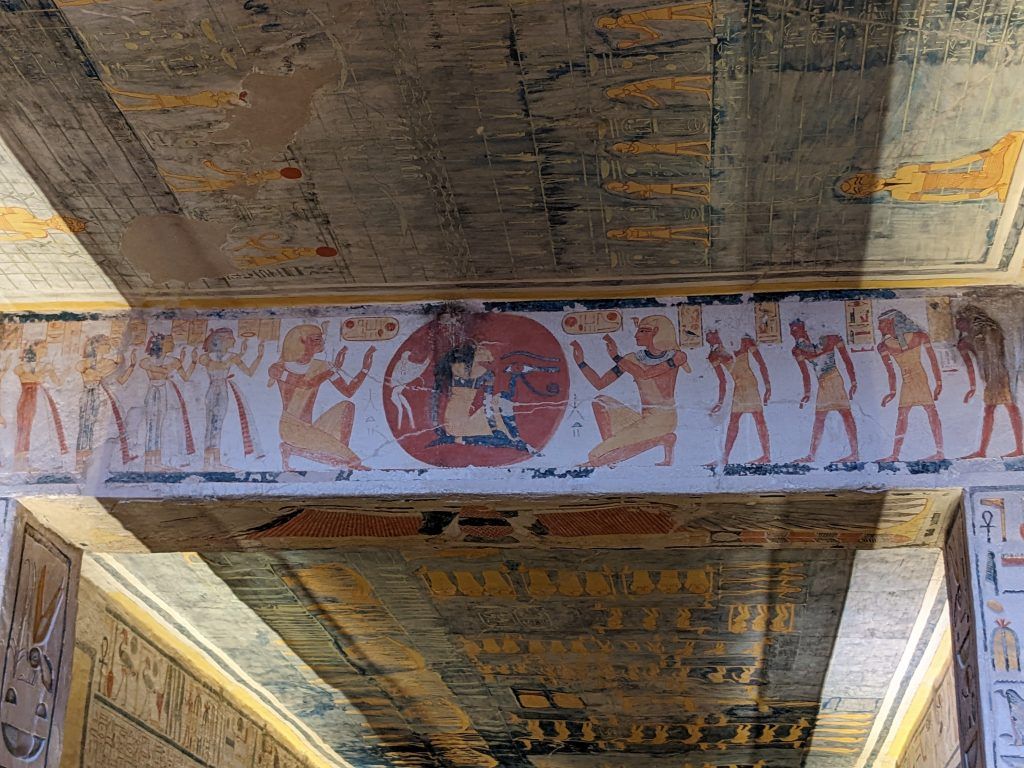
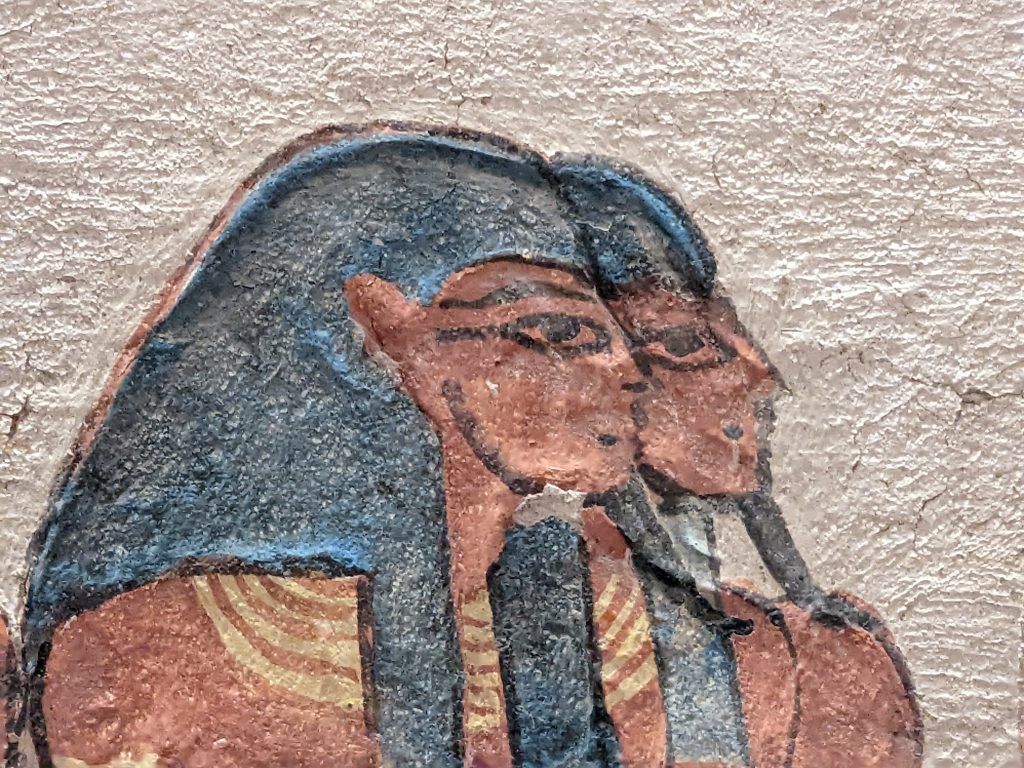
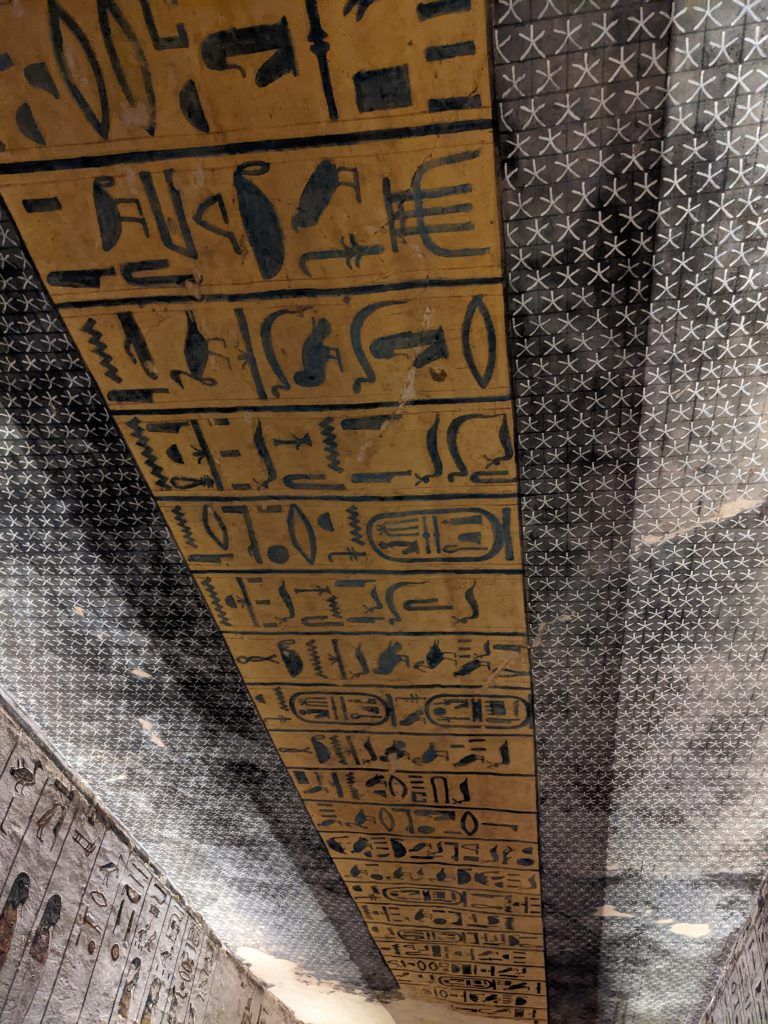
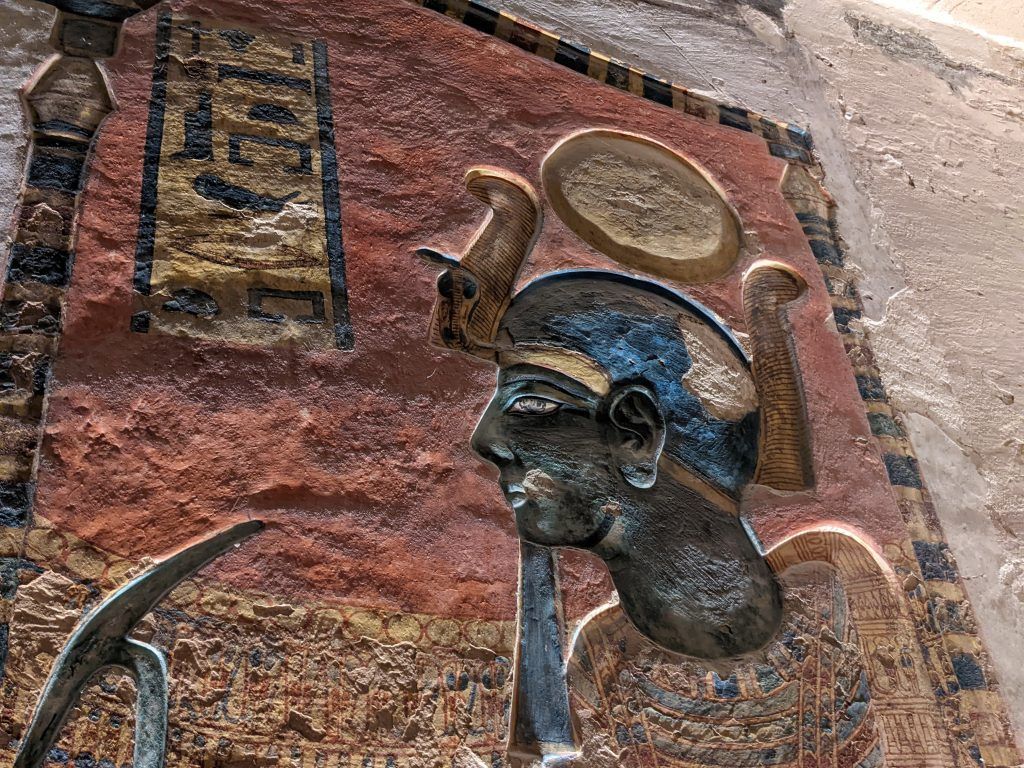
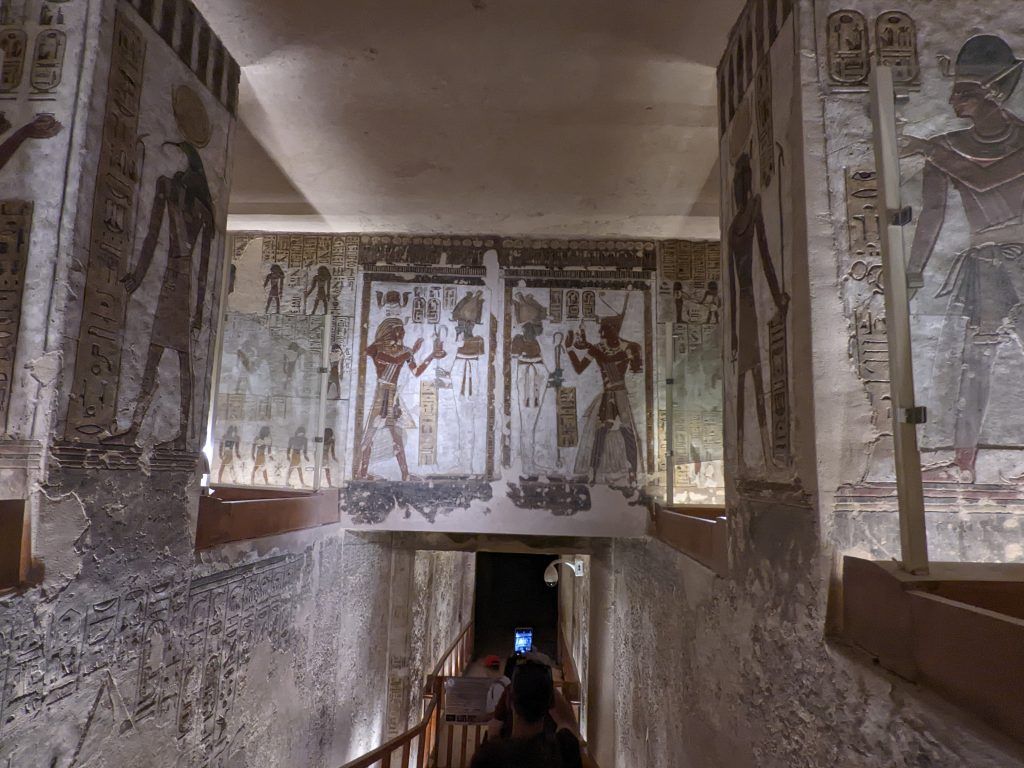
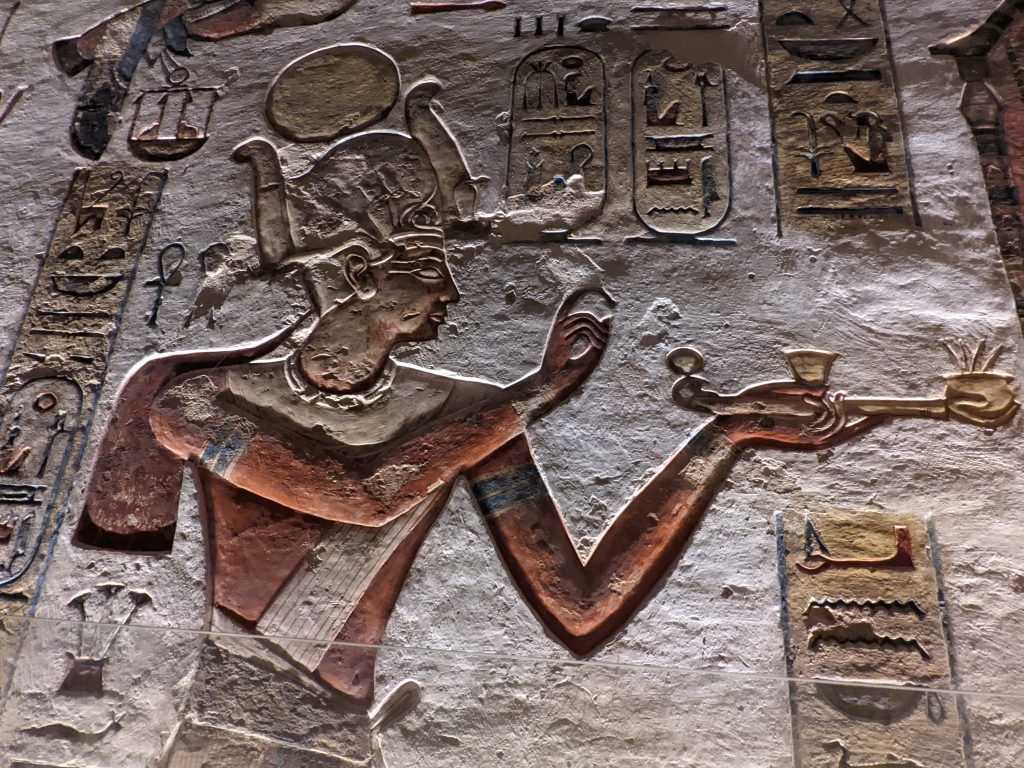
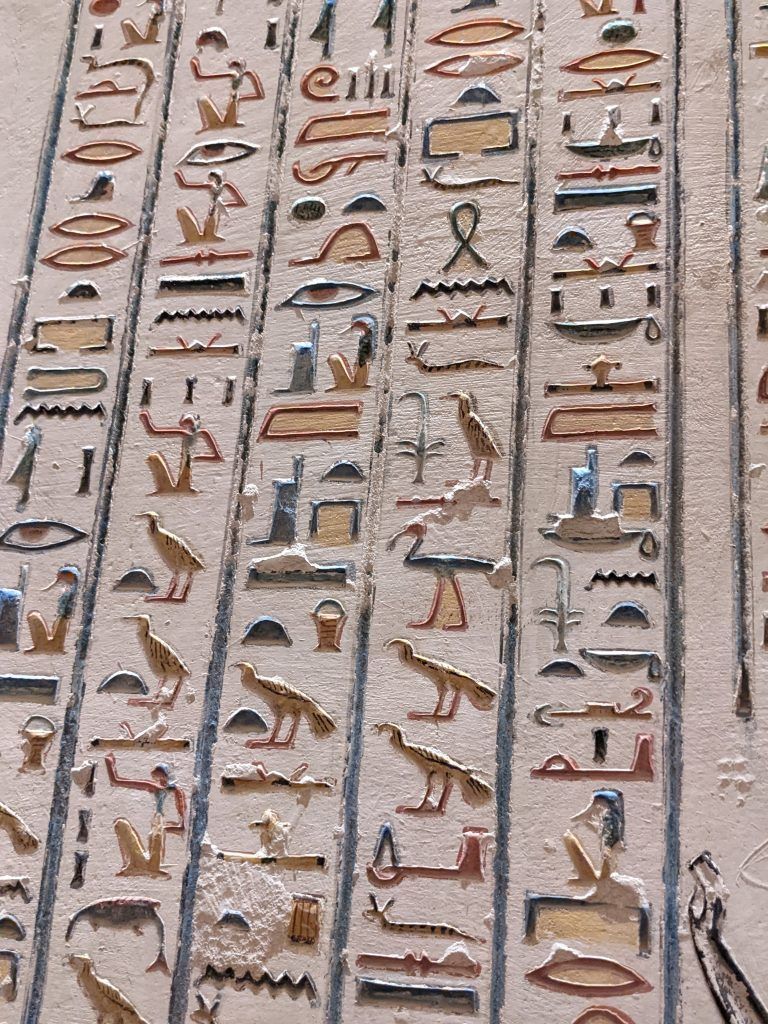
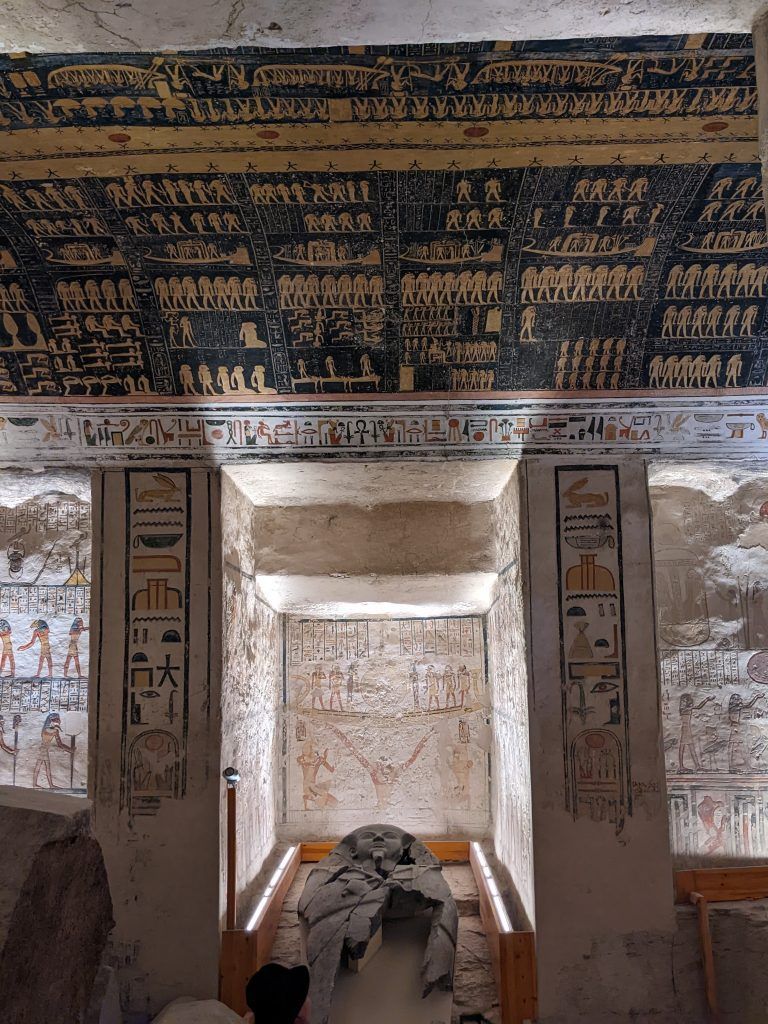
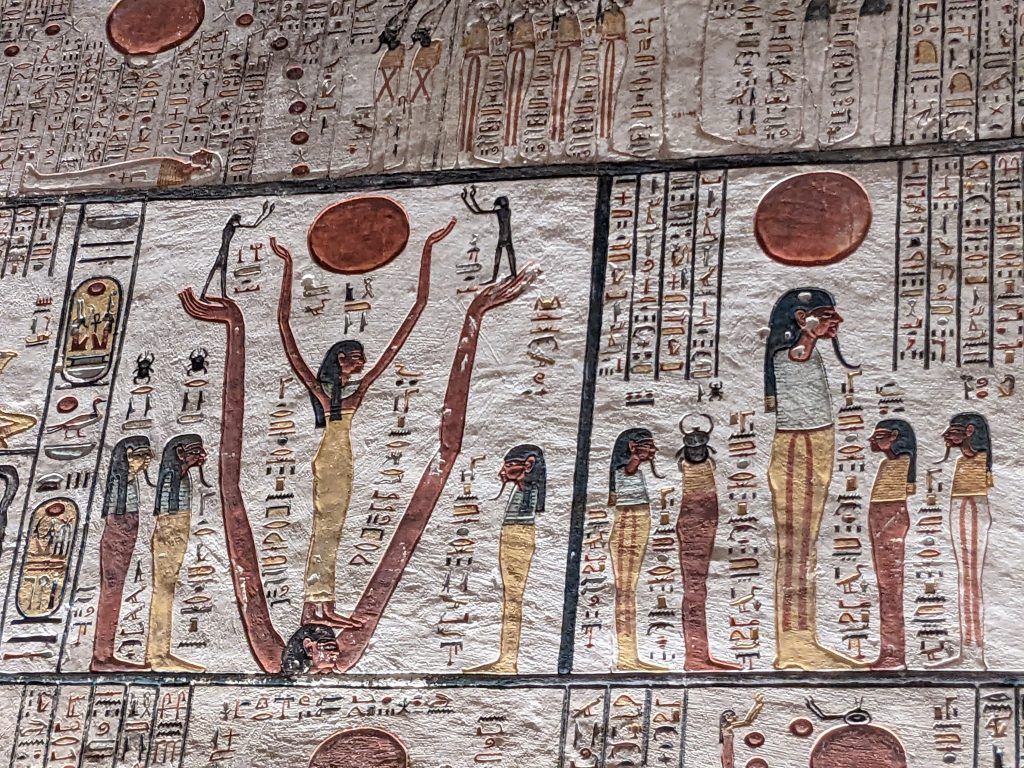
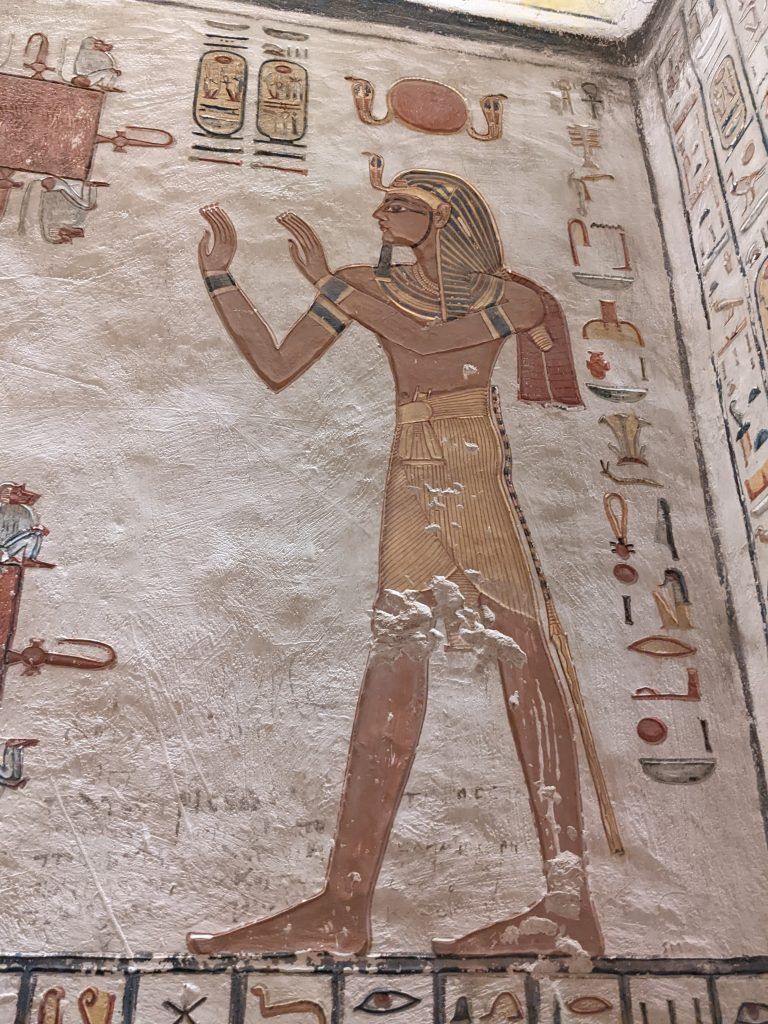
Temple of Hatshepsut
The mortuary temple of Hatshepsut is a maginificent piece of architecture carved into a mountain. She ruled for 18 years and was represented as a man in many of the scupltures because, according to our guide, out of respect for her the kingly manner of her reign.
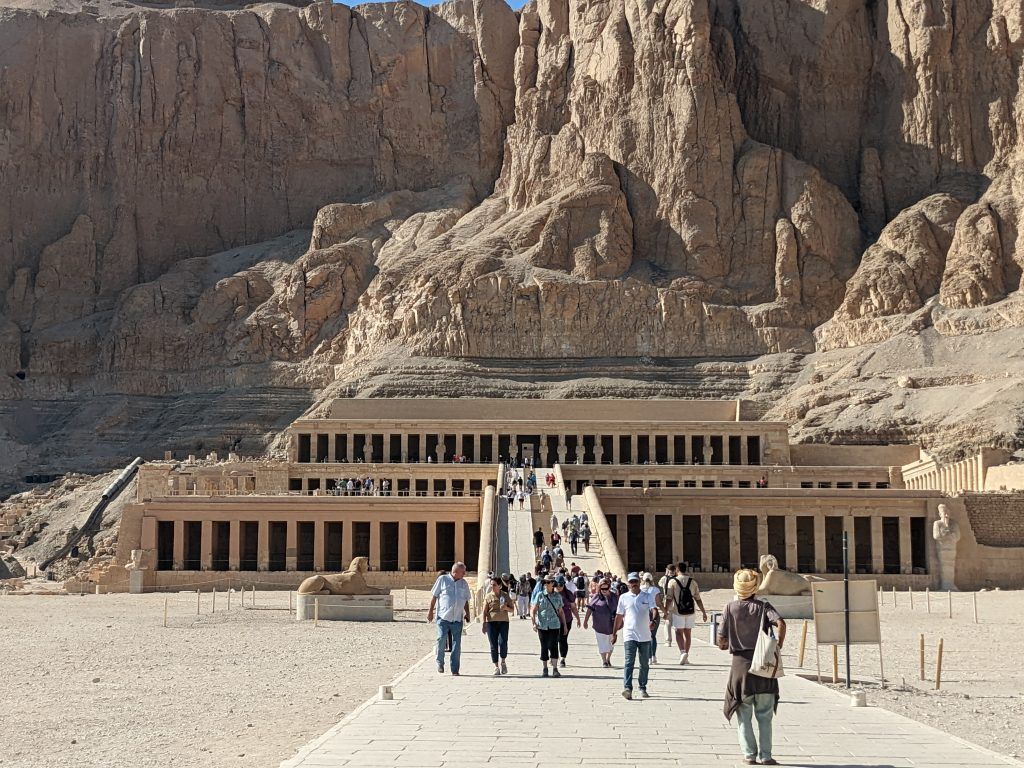
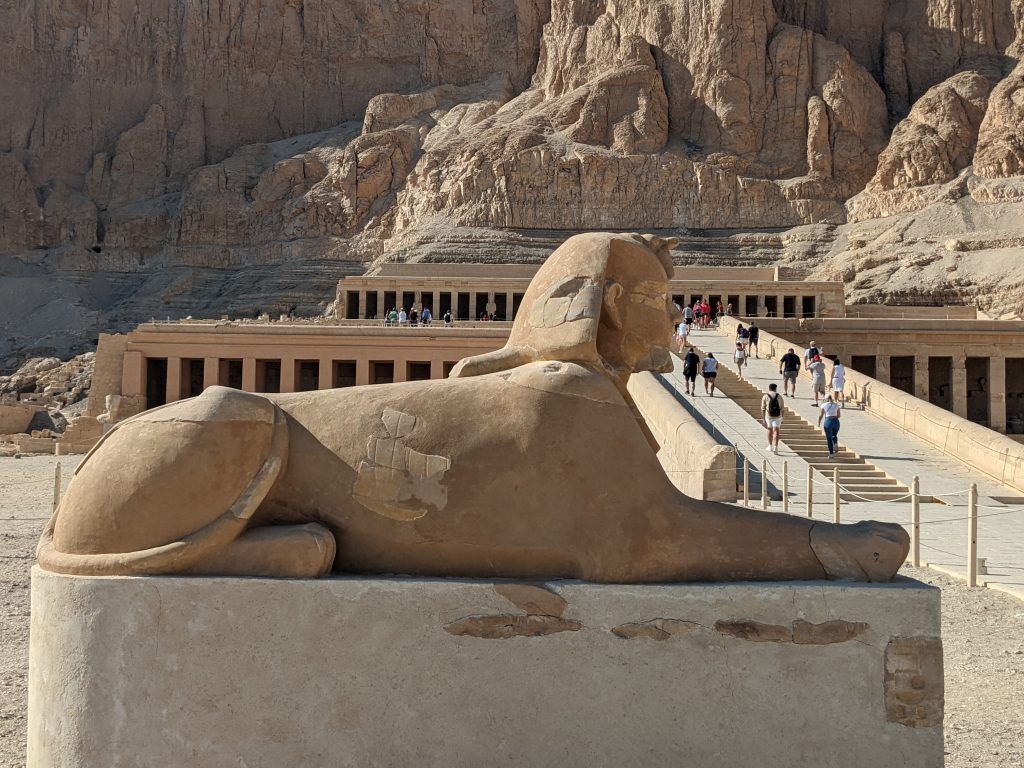
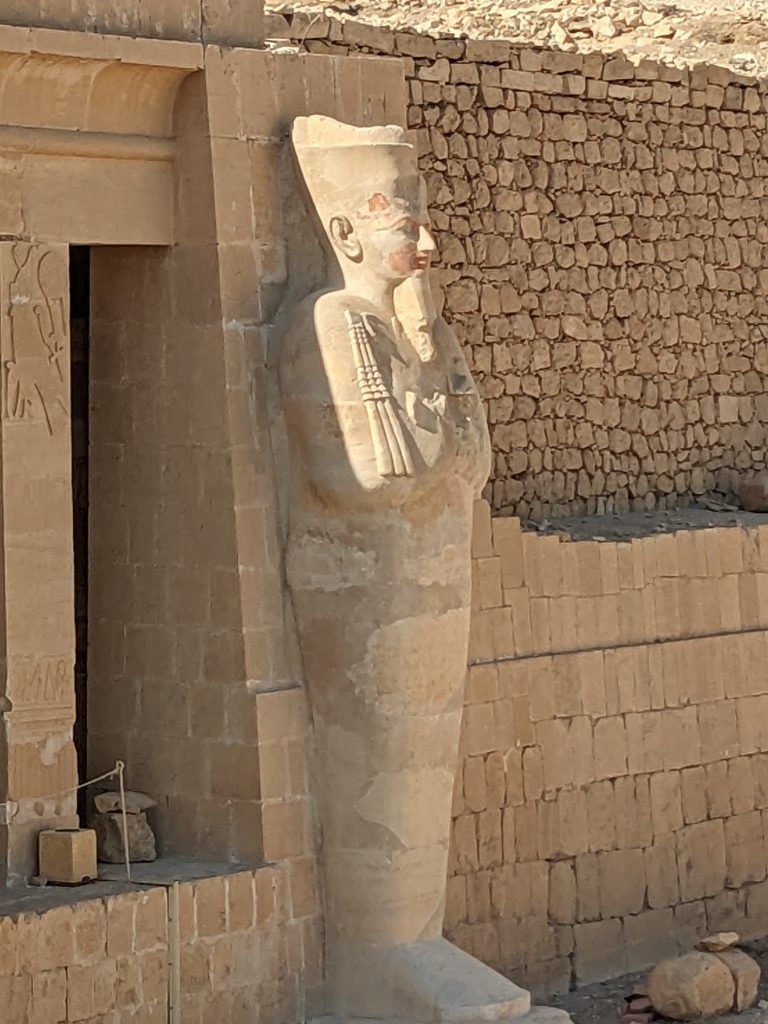
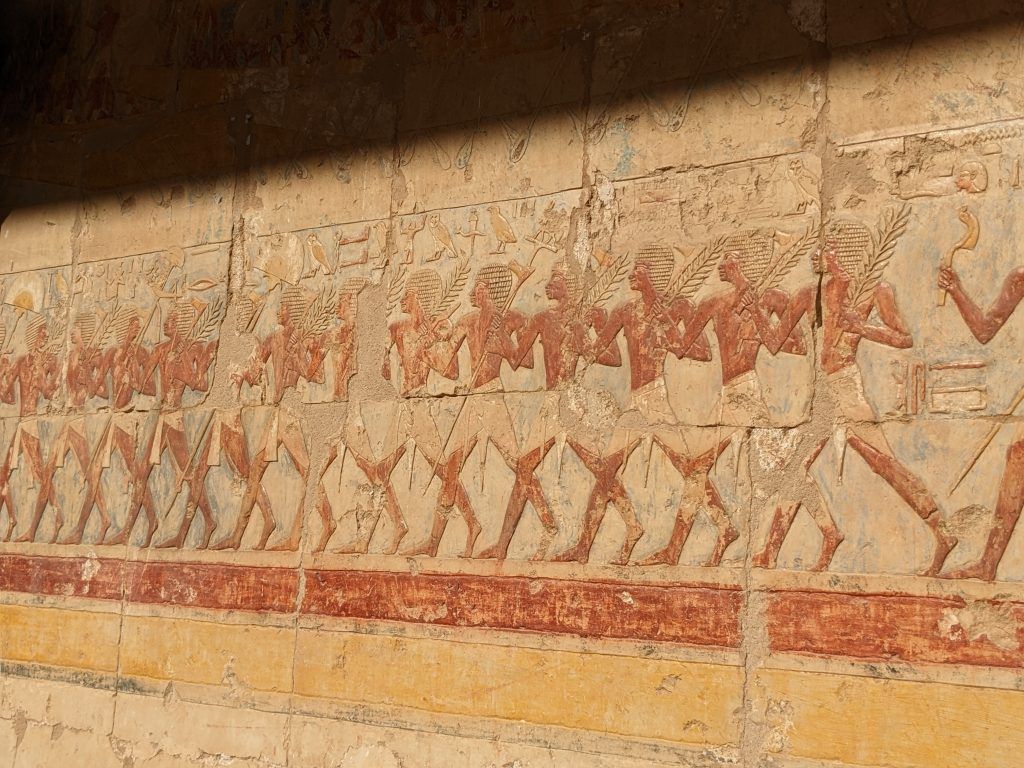
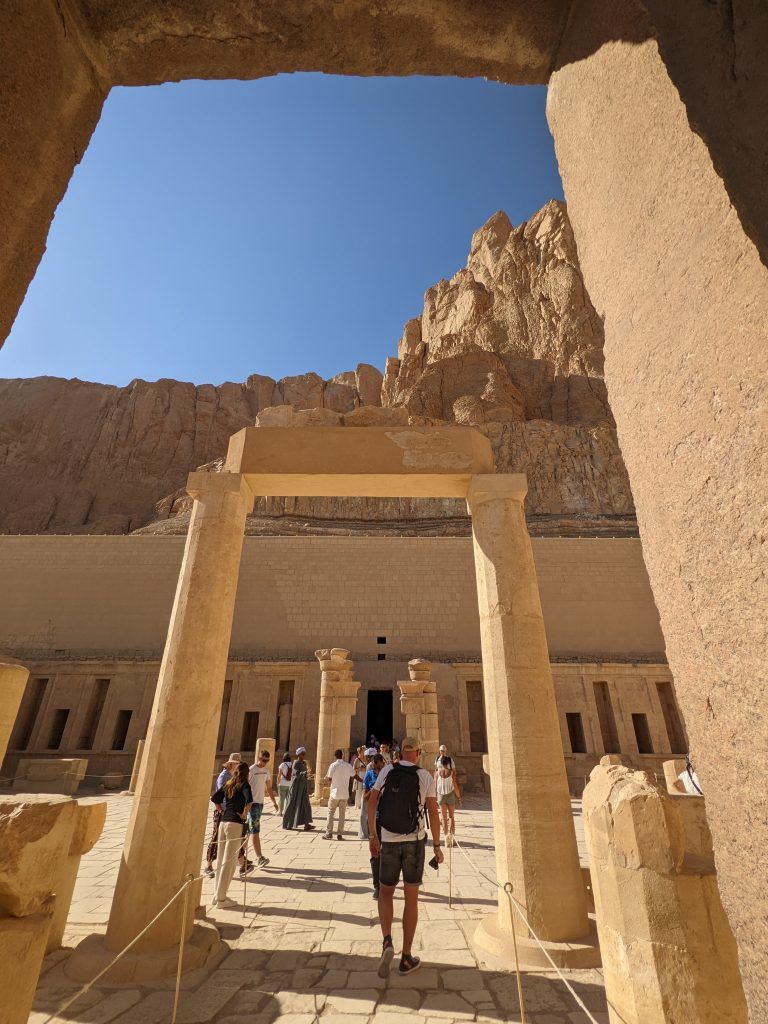
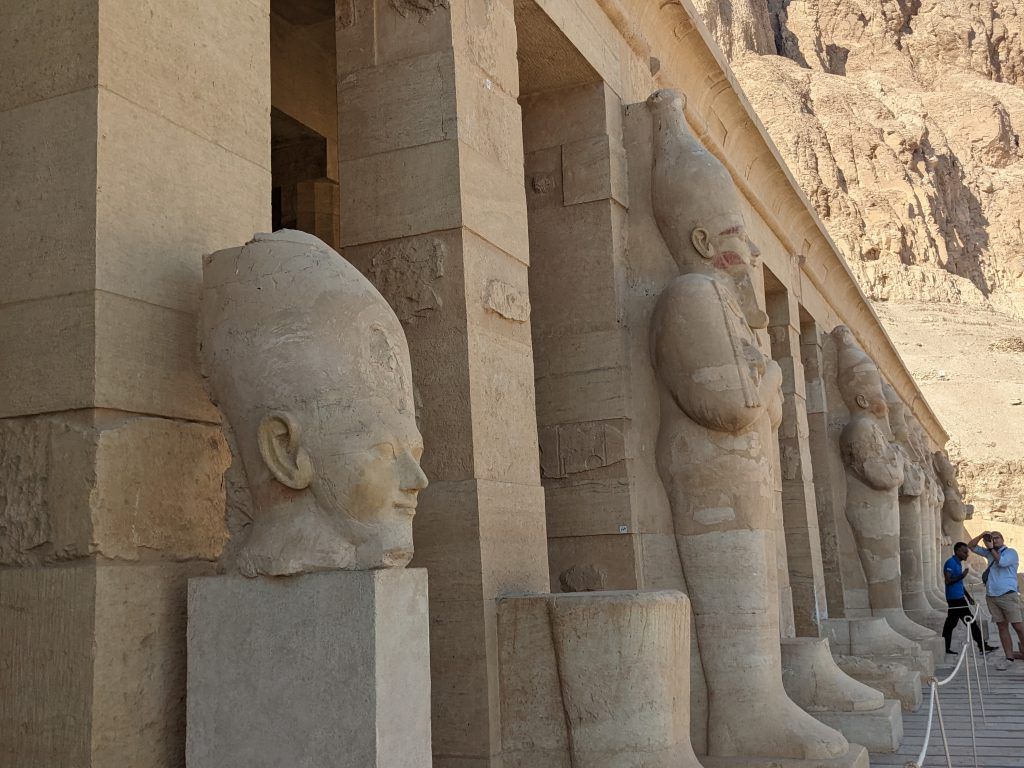
Non-Luxor Visits
The Temple of Isis on The Nile
The Temple of Isis on the island of Philae was started around 250 BC and various additions were made over the following 500 years. When Egypt built the large Aswan Dam in the early 1960s the island was in danger of being swallowed by the rising waters. So between 1972 and 1980 a Unesco sponsored project moved the temple, block by block, to its current higher location.
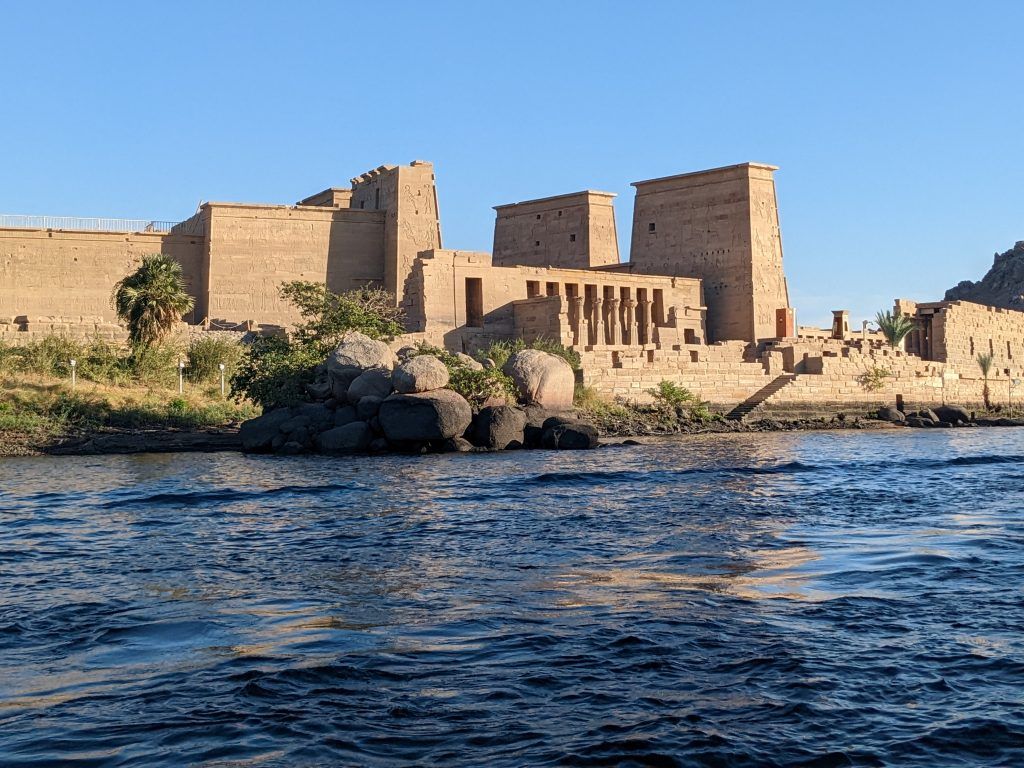
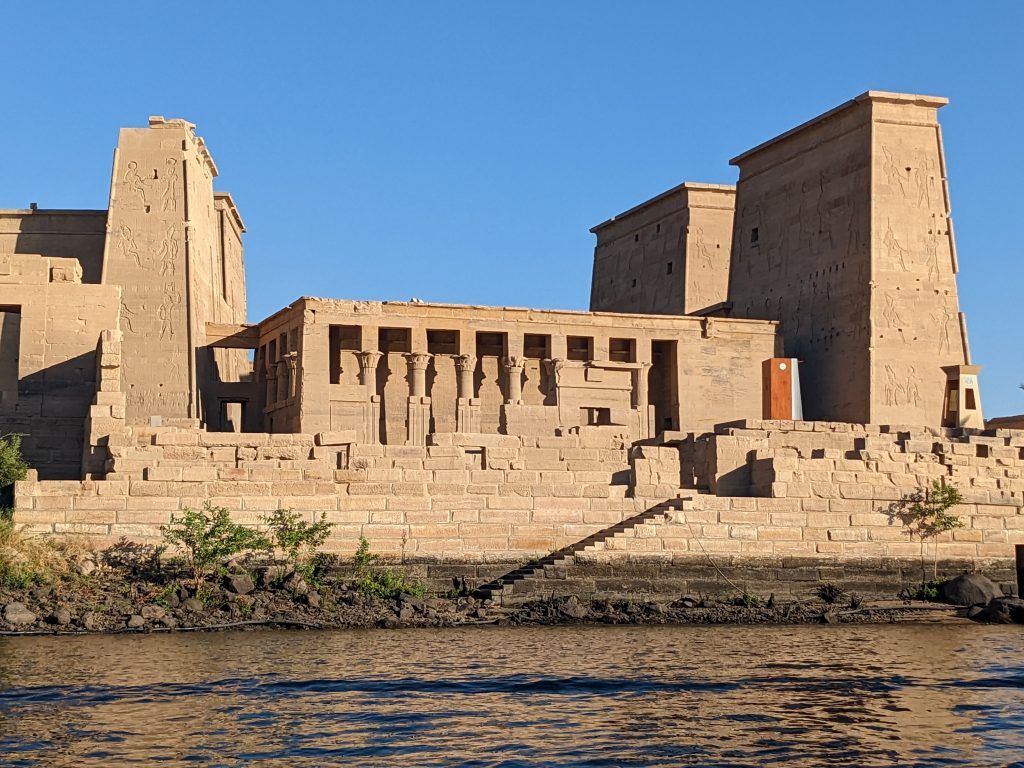
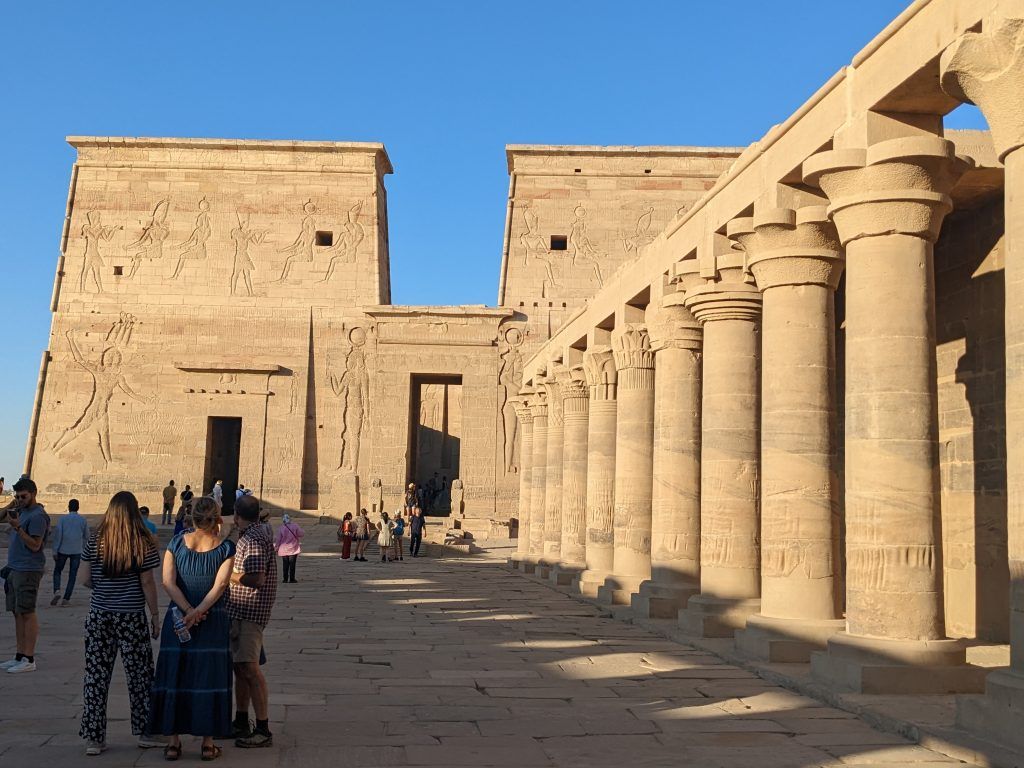
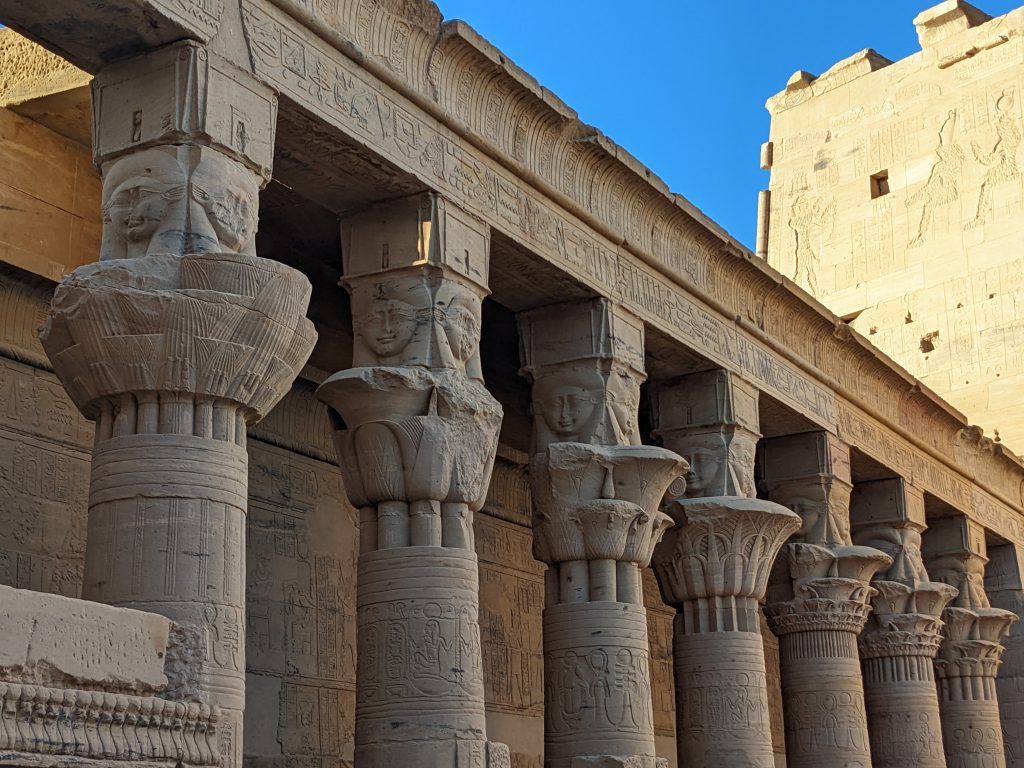
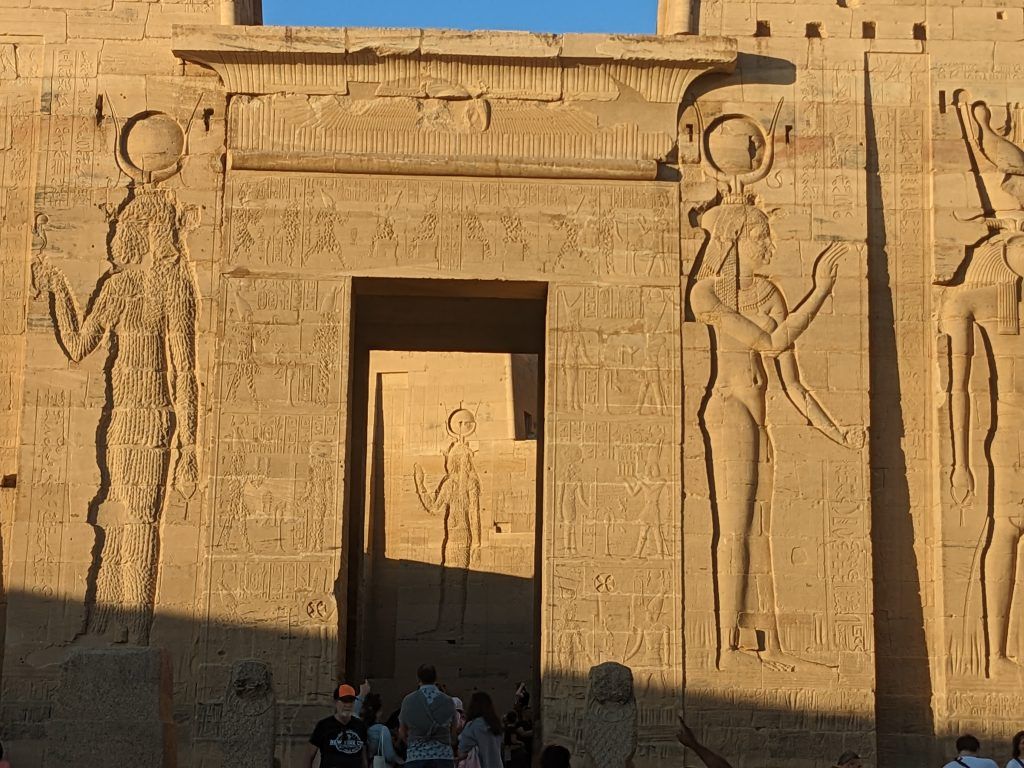
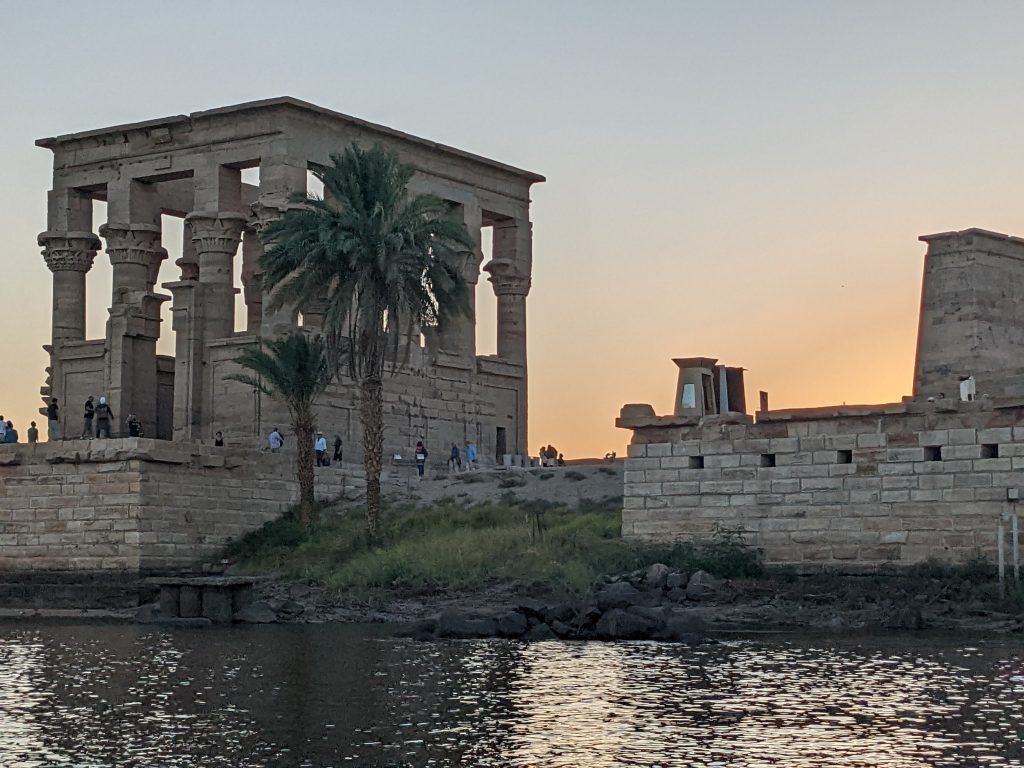
Unfortunately, the cruise on the Nile also included going to the New Aswan Dam, which was not that picturesque from the views we had, and a longer than necessary visit to a tourist trap perfume shop where we were enticed to buy perfumes no one wanted nor actually bought. We had also visited a “Nubian village” earlier in the day which was basically a tourist trap with shops and no information on actual Nubian culture.
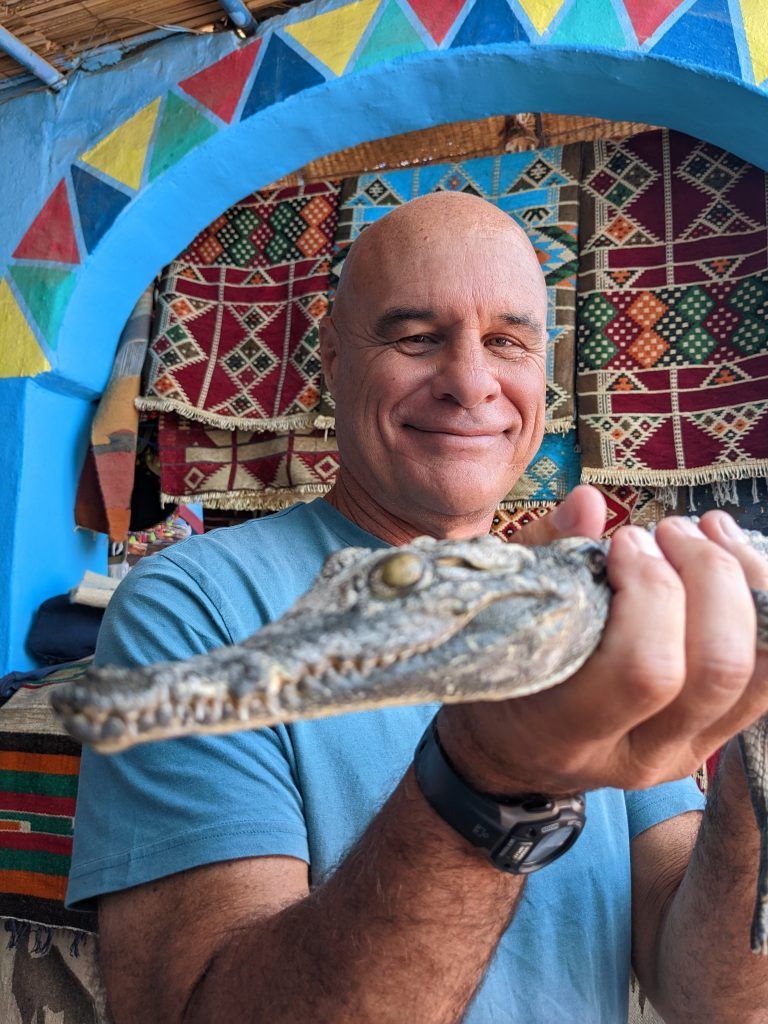
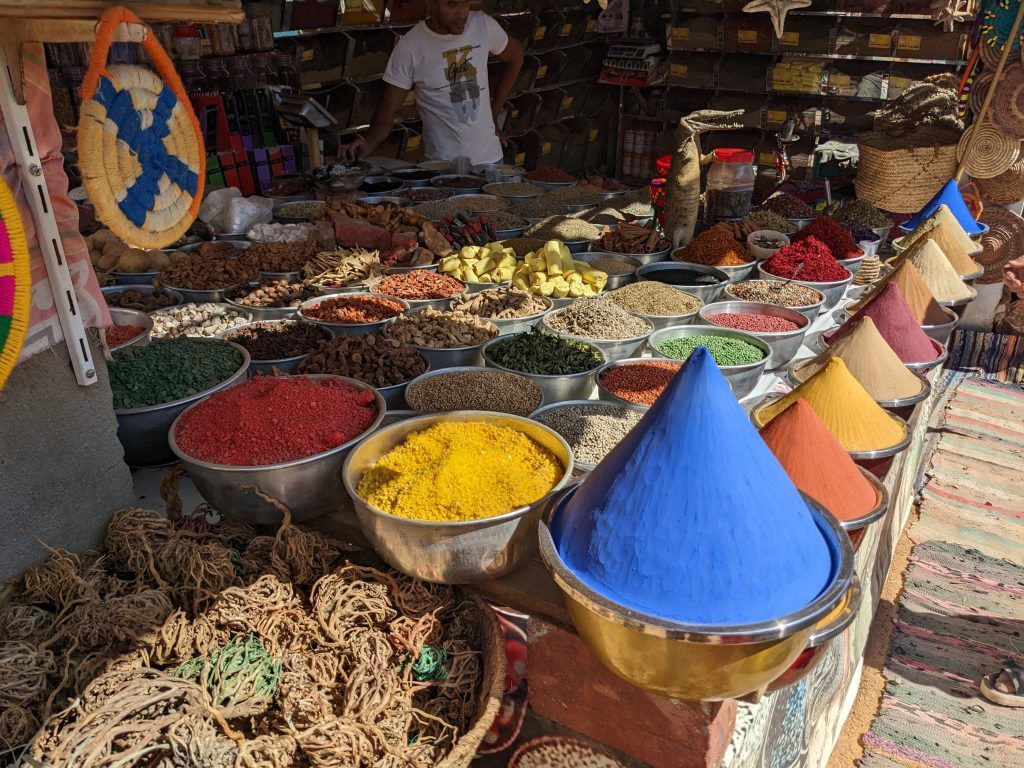
Temple of Ramses II
On our first morning we left at 4am for the 4.5 hour drive down to Abu Simbel to see the spectacular temples there. The first is the Great Temple of Ramses II which was carved out of a mountain between 1274 and 1244 BC. The front of the temple is guarded by four huge 20 meter (60 feet) high statues of Ramses II. These are like gigantic sentinels watching over the incoming traffic from the south, basically saying don’t mess with Ramses or Egypt. Inside are a number of well preserved wall carvings that enhance the theme of Ramses’ dominance.
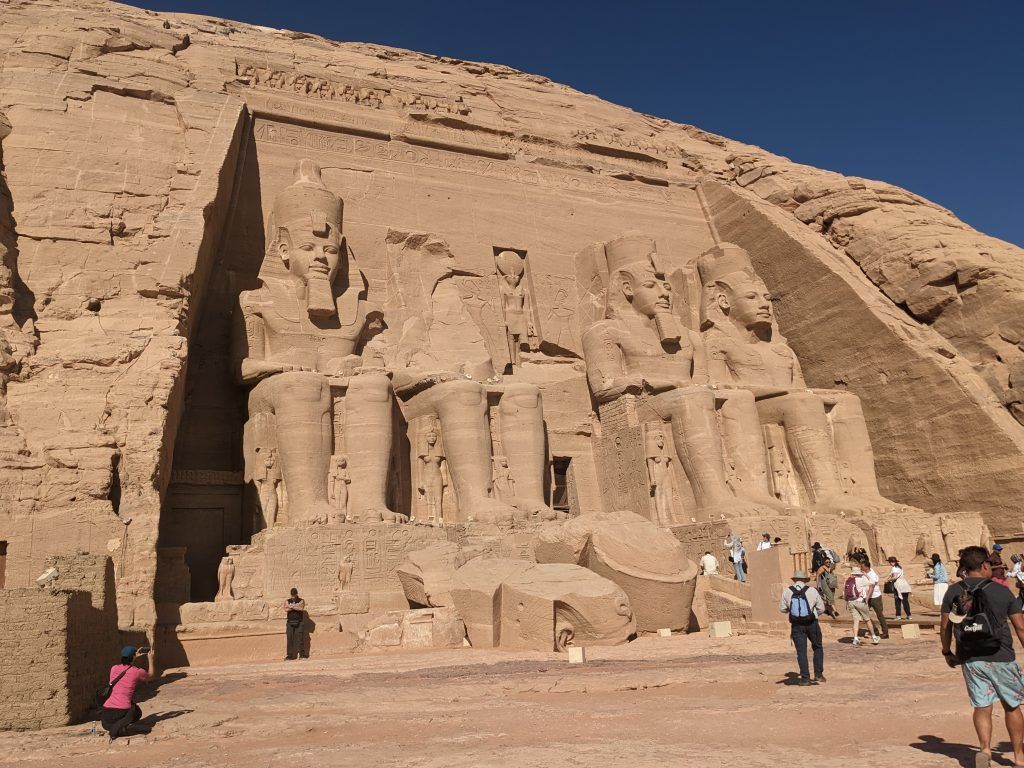
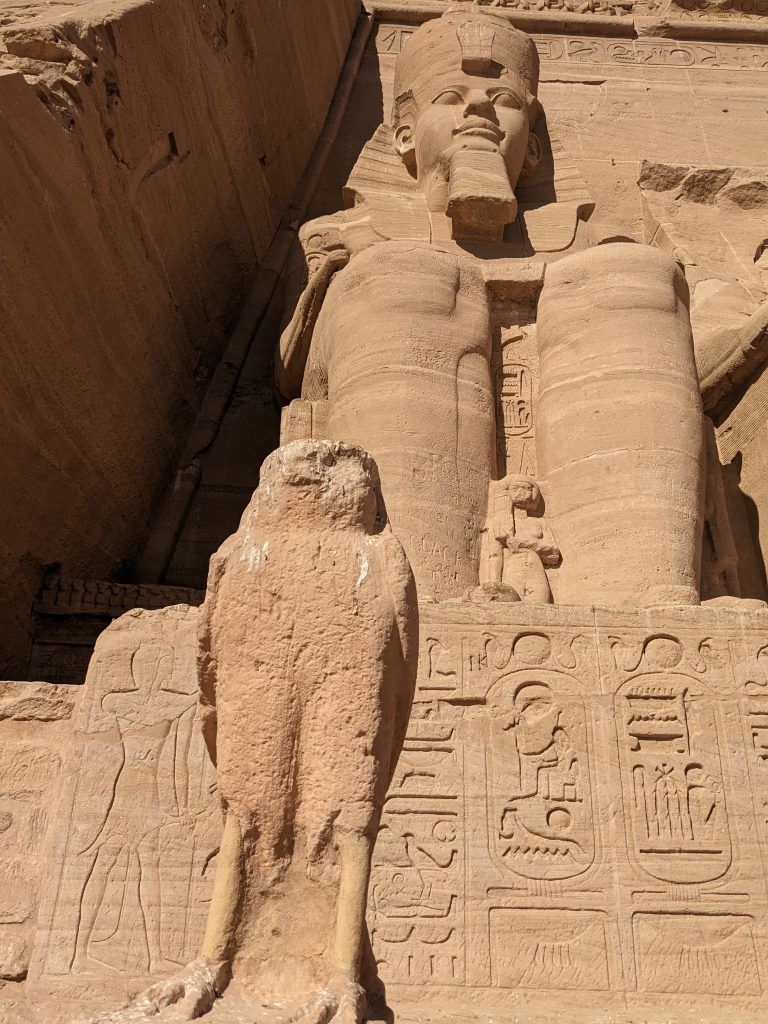
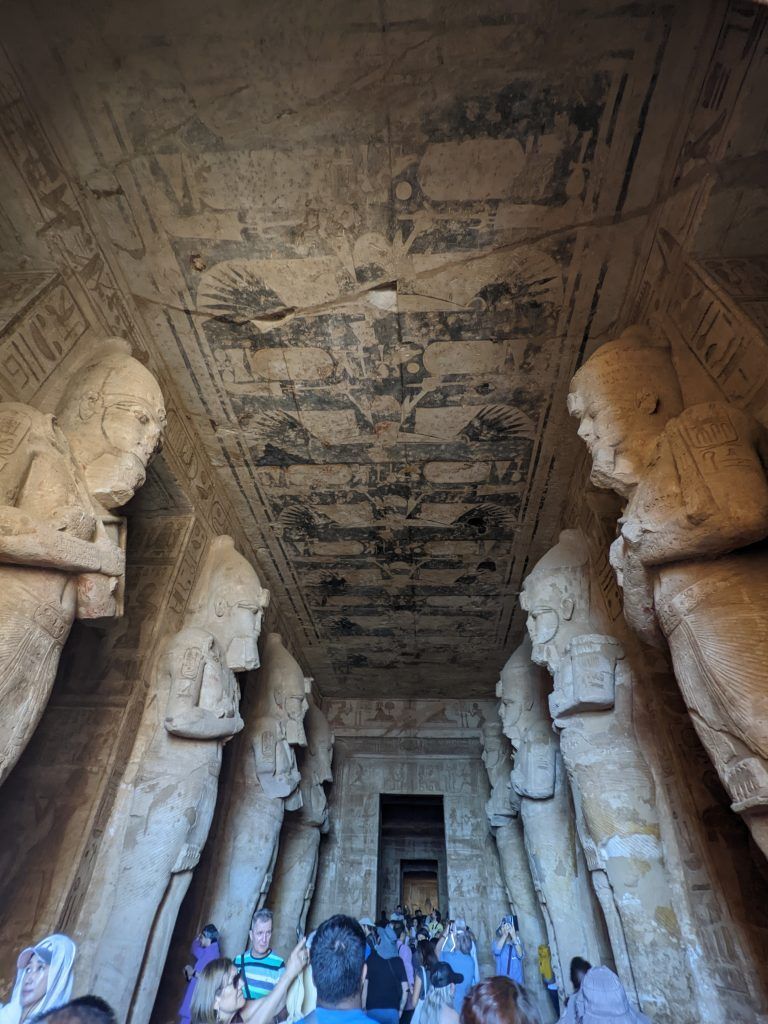
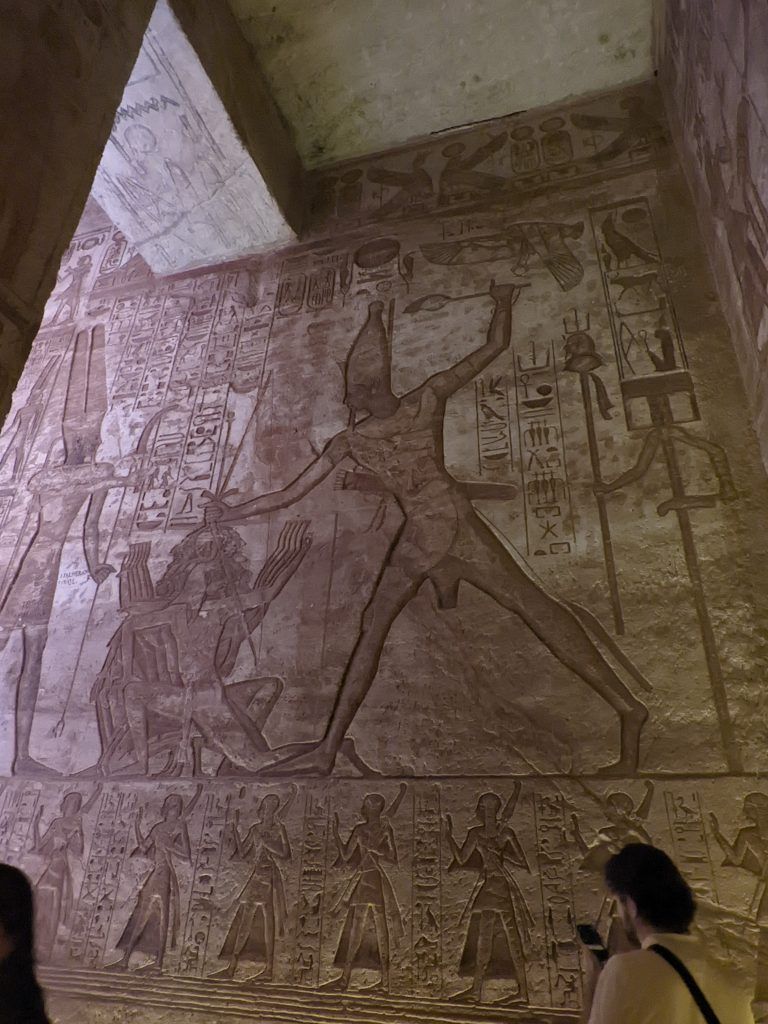
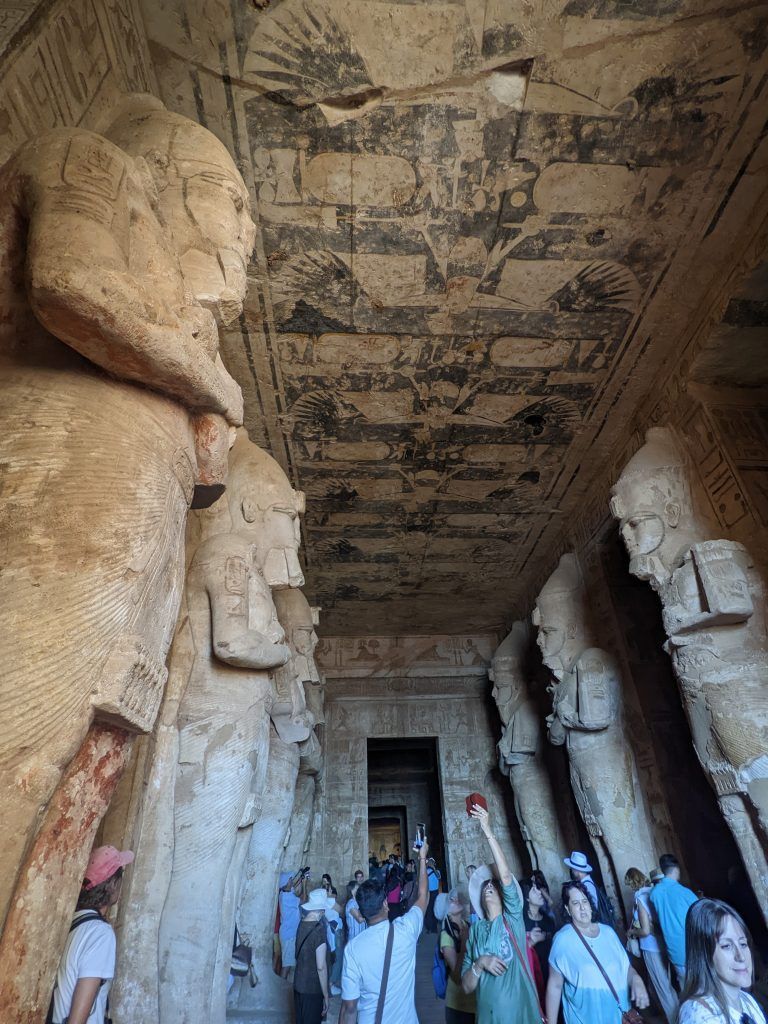
Temple of Hathor
Next to the Great Temple is a smaller, but still impressive Temple of Hathor which Ramses built to honor his wife Nefertari. Its front has six 10 meter (30 foot) high statues of Ramses and Nefertari with smaller statues of their children. Inside are much more feminine wall carvings of Nefertari in her various roles. The two temples have pretty distinct men are from Mars and women are from Venus themes.
The most impressive part of all this is that when the large Aswan damn was built, these temples were also moved, brick by brick a bit higher up behind the original location to avoid the rising waters. They even built a new mountain to place the temples in to replicate what was originally done.
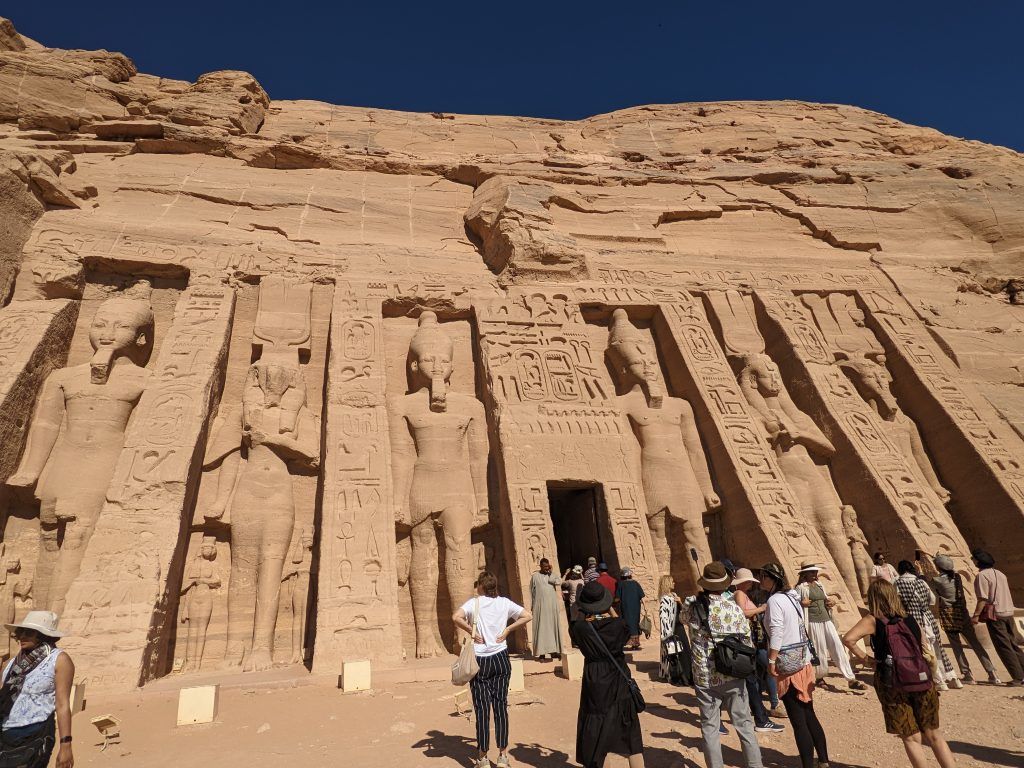
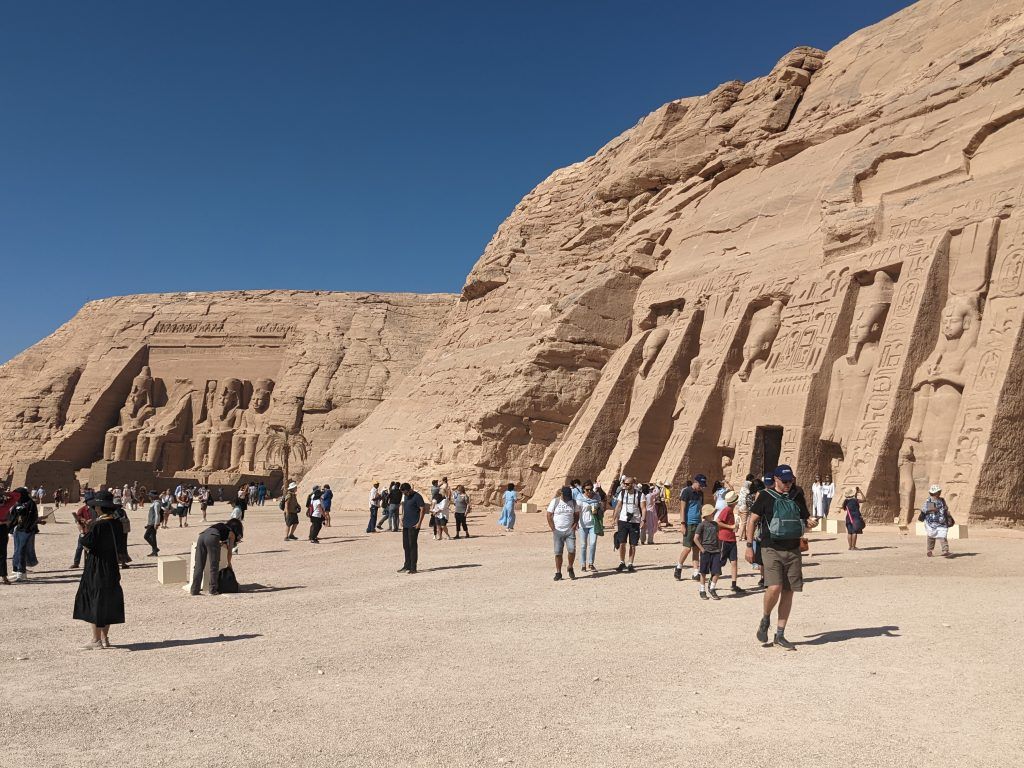
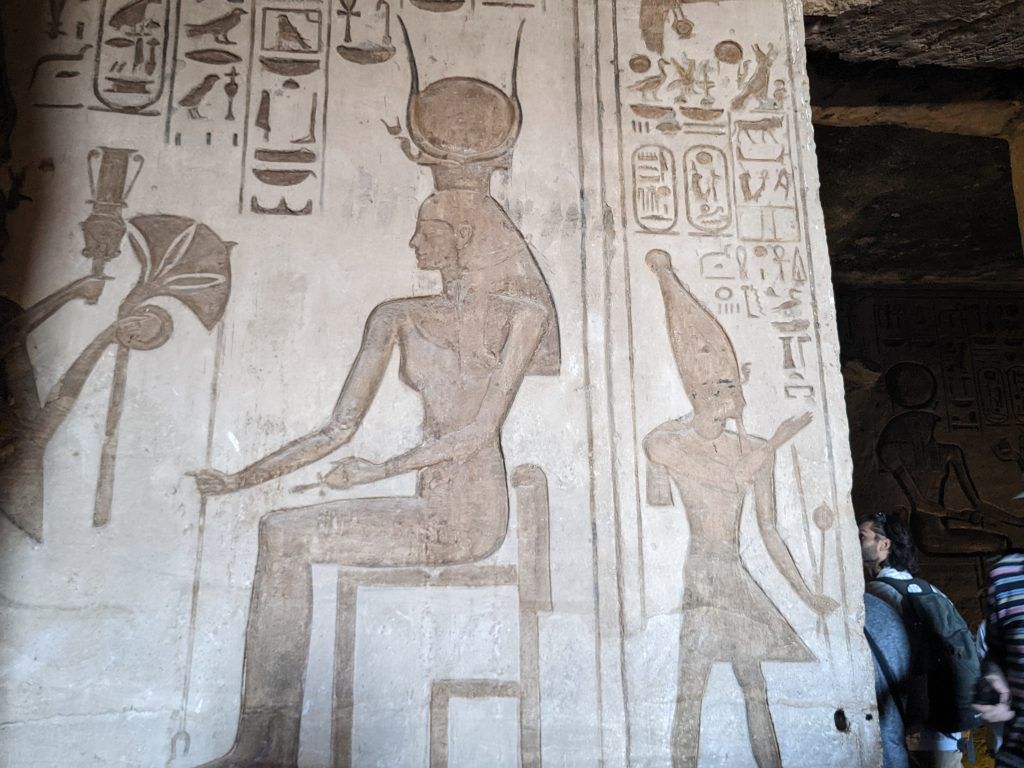
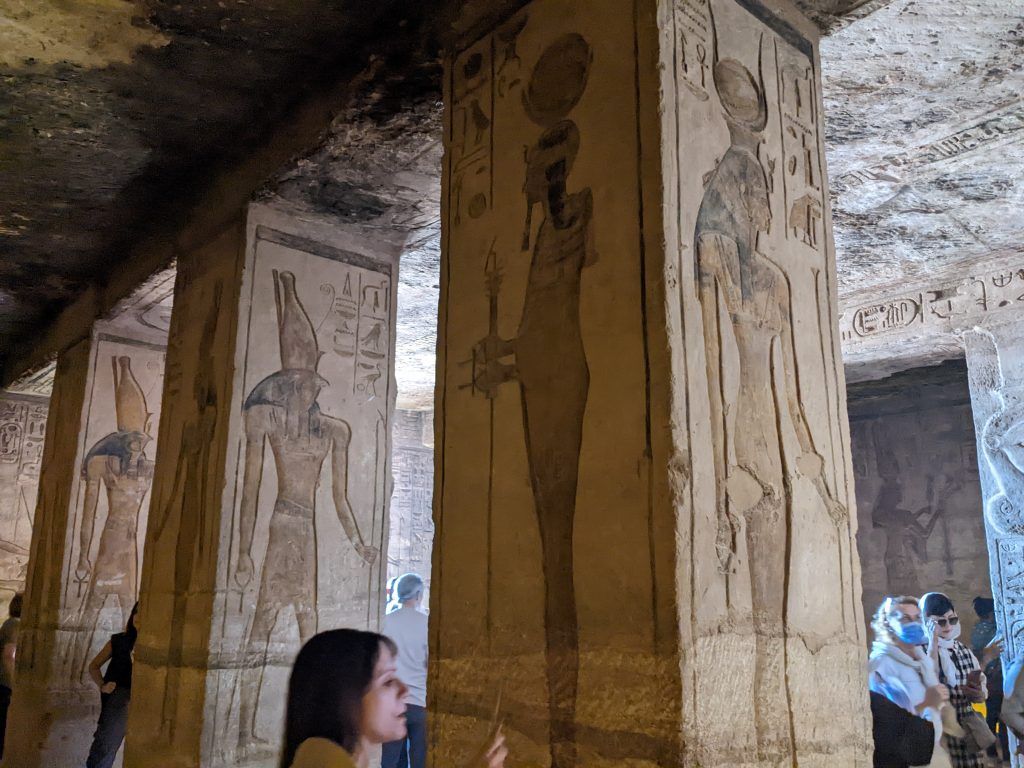
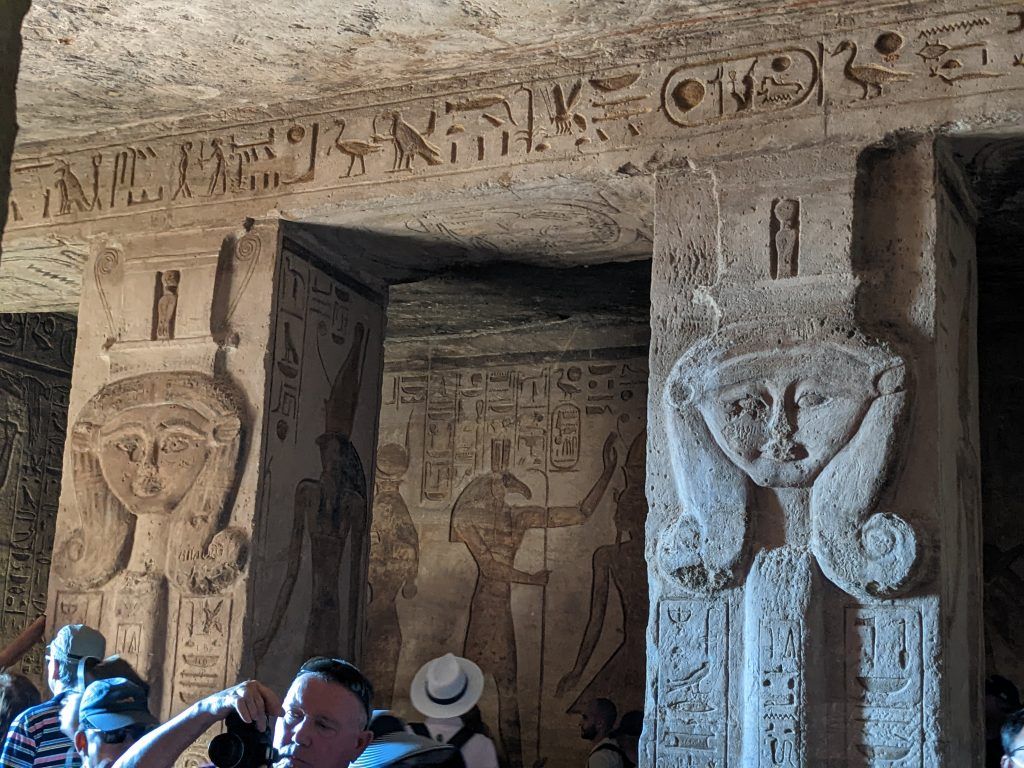
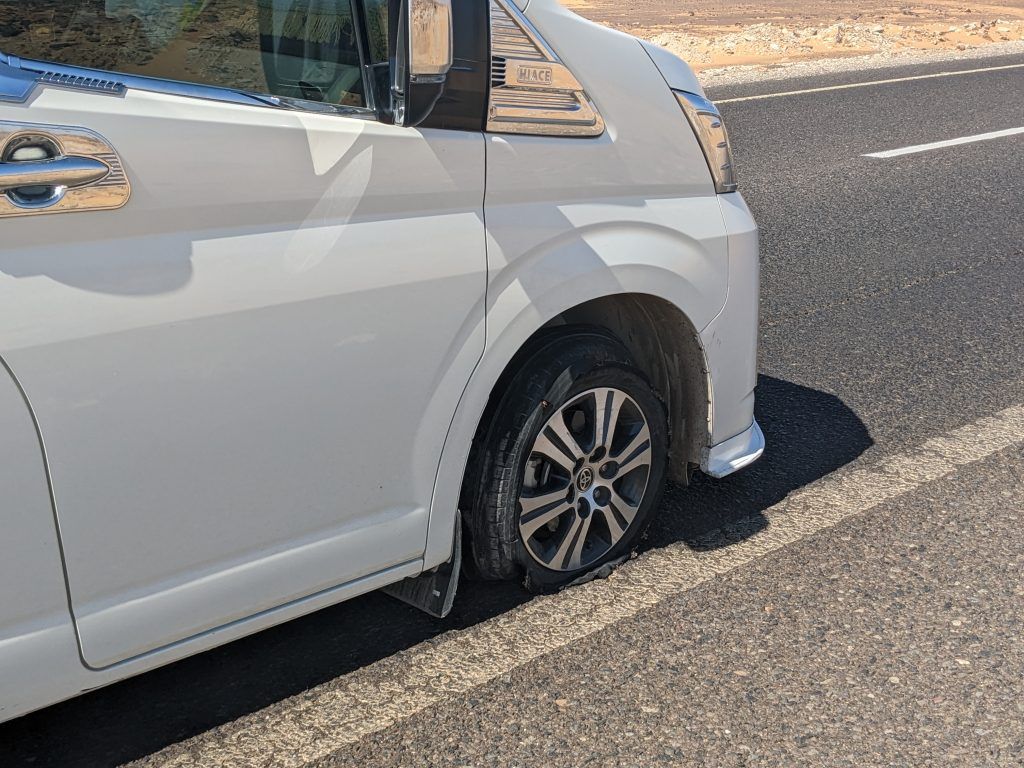
The Ship
The cruise ship was billed as a floating hotel and it was really nice. It added a wonderful level of luxury to the whole trip.
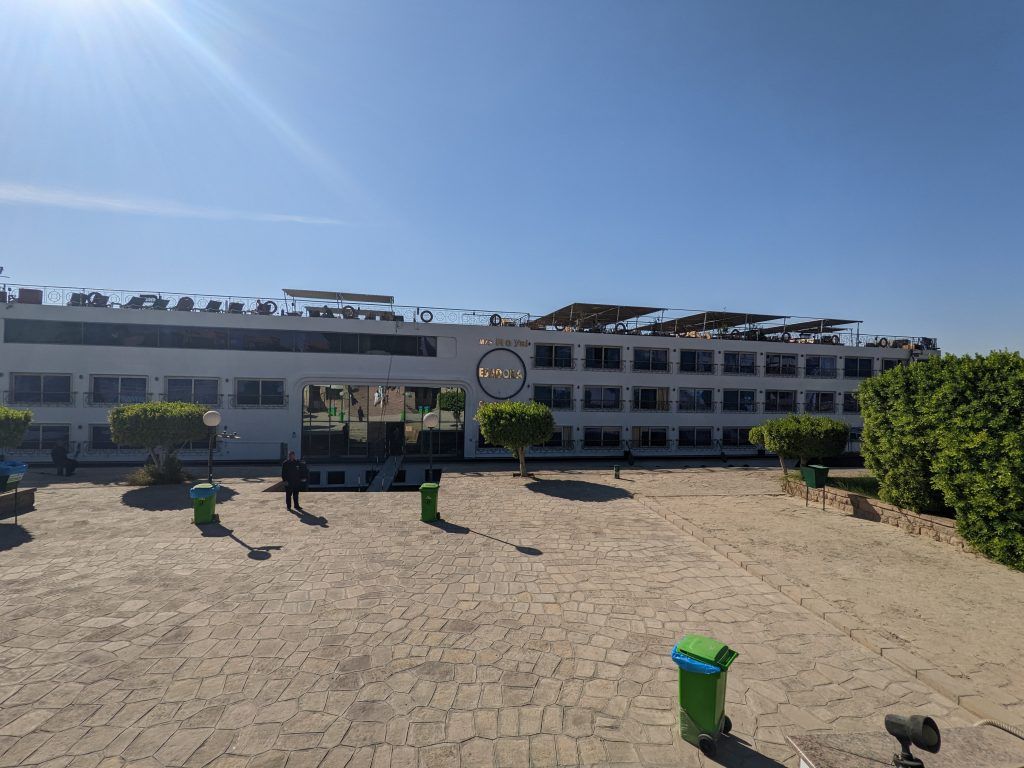
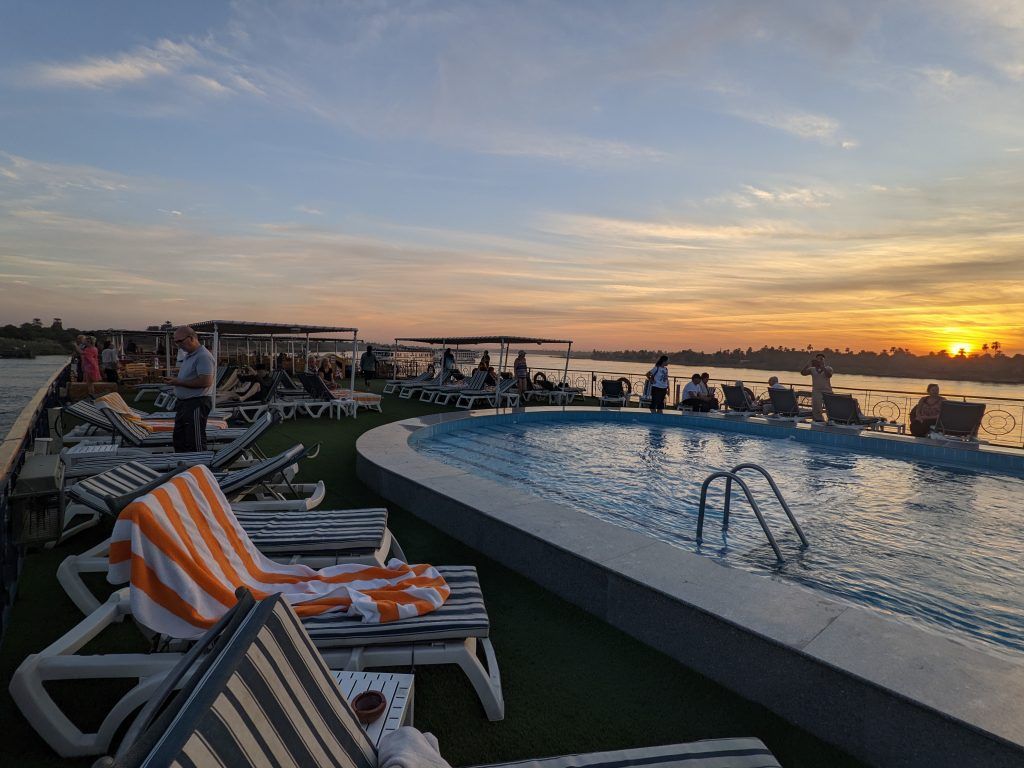
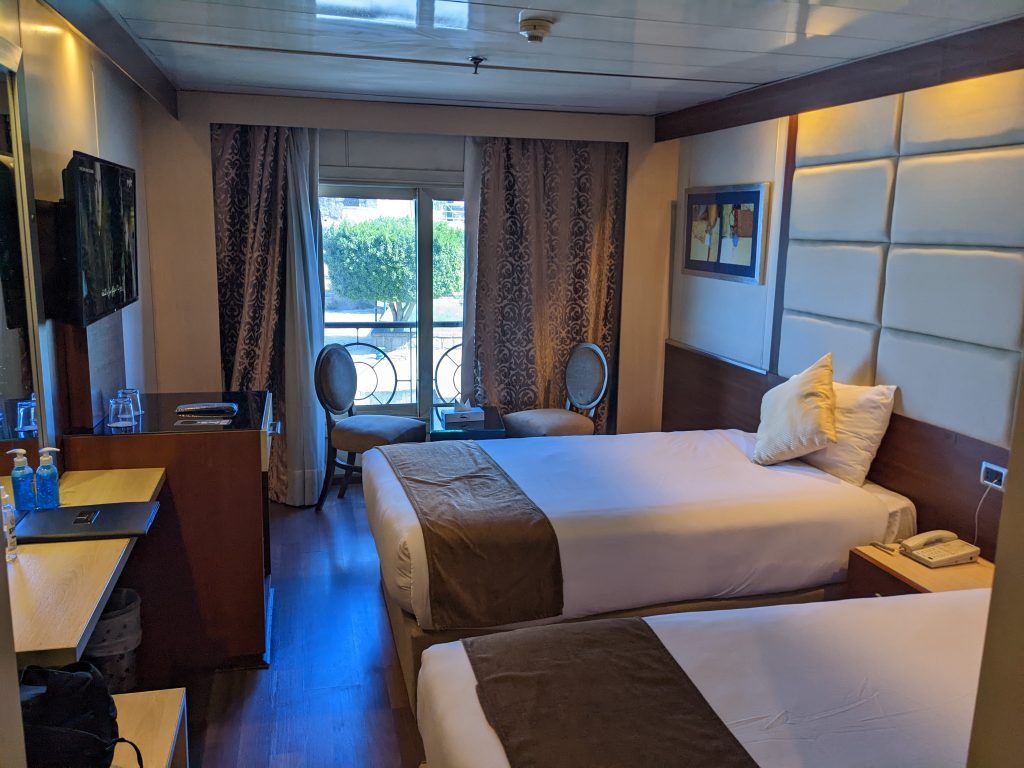
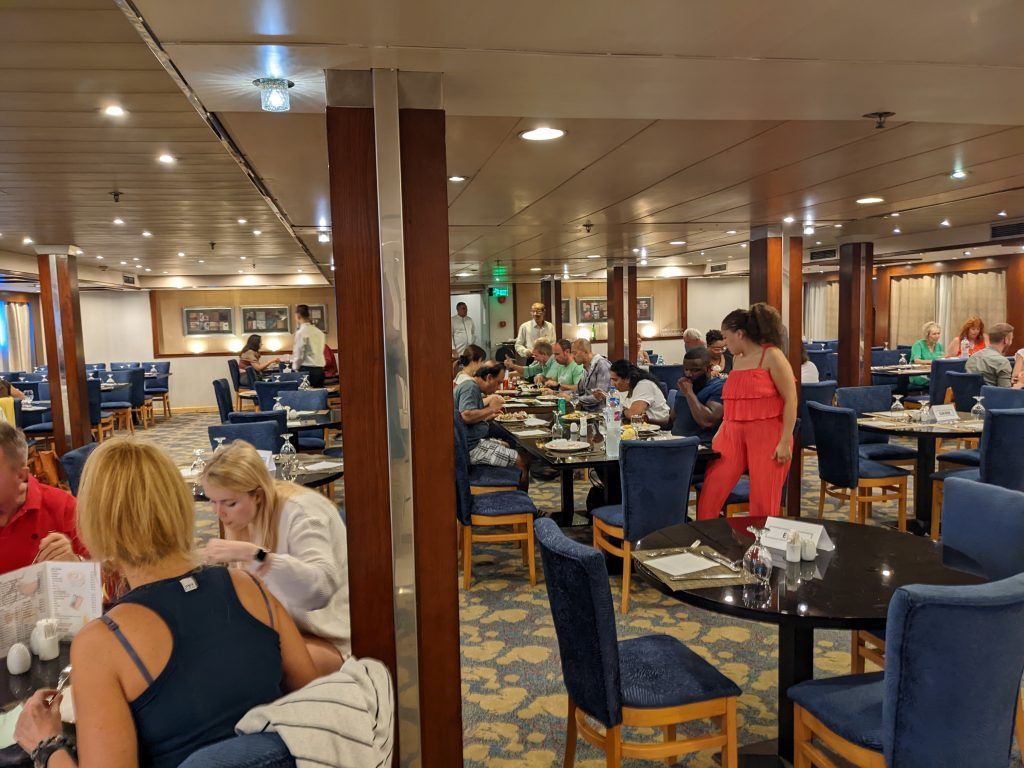
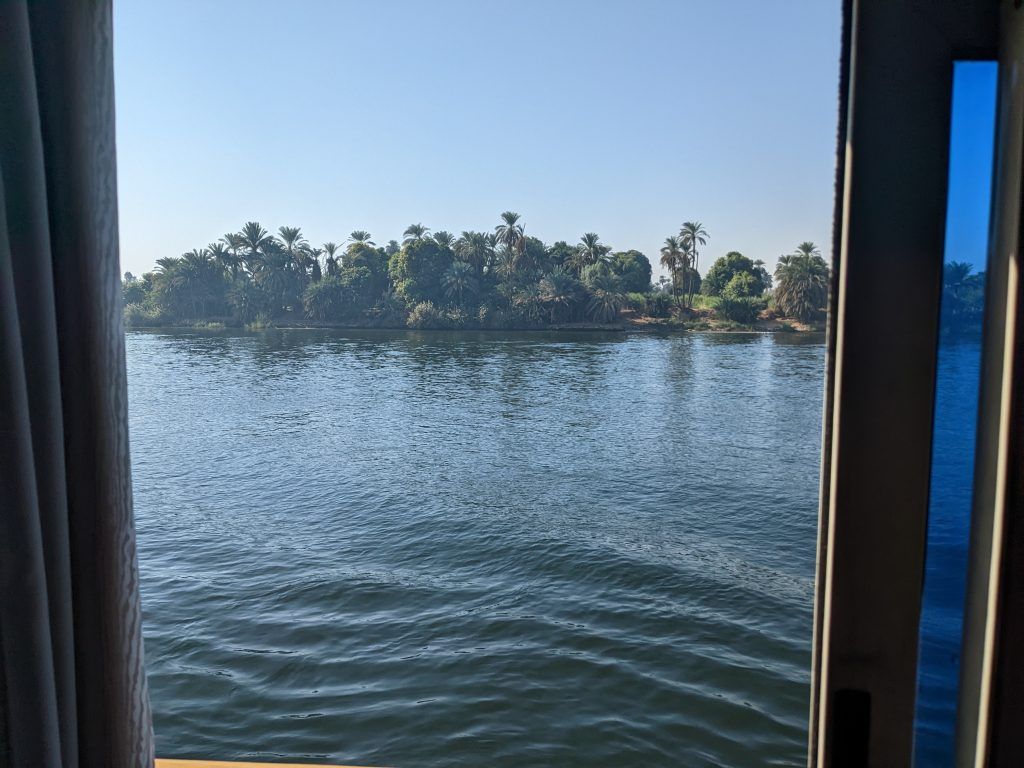
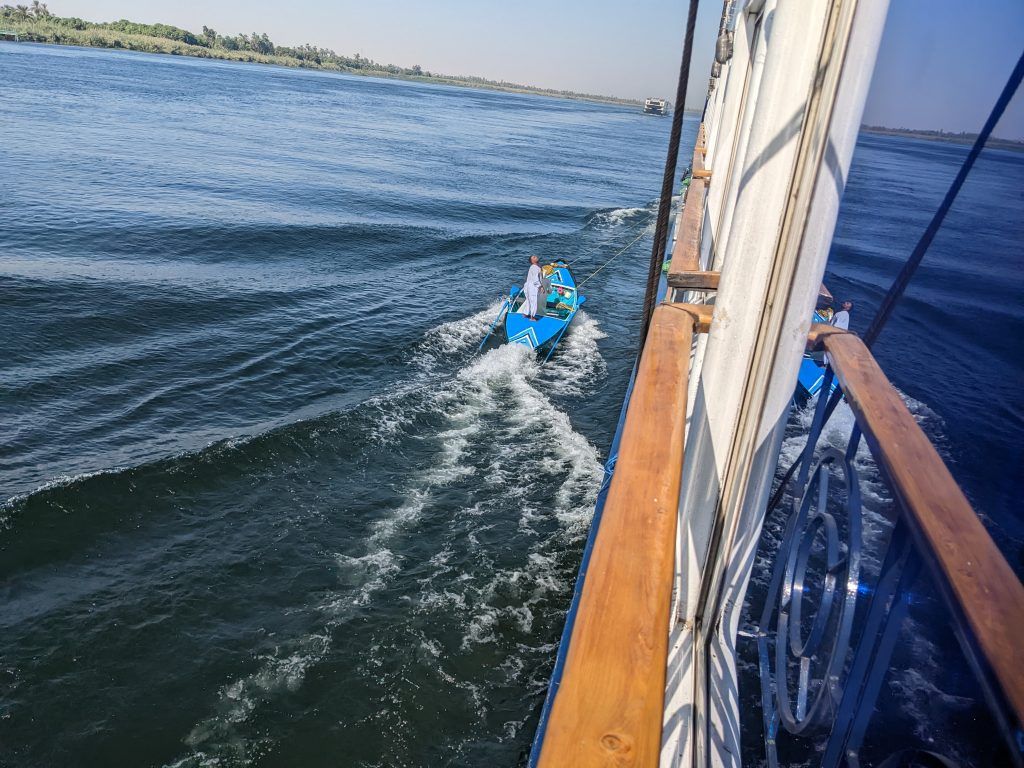
Cruising The Esna Lock
About midway between Aswan and Luxor is the Esna Lock to account for the drop in the Nile as it goes downstream. As you can see below, we dropped about 40 feet when we went through.
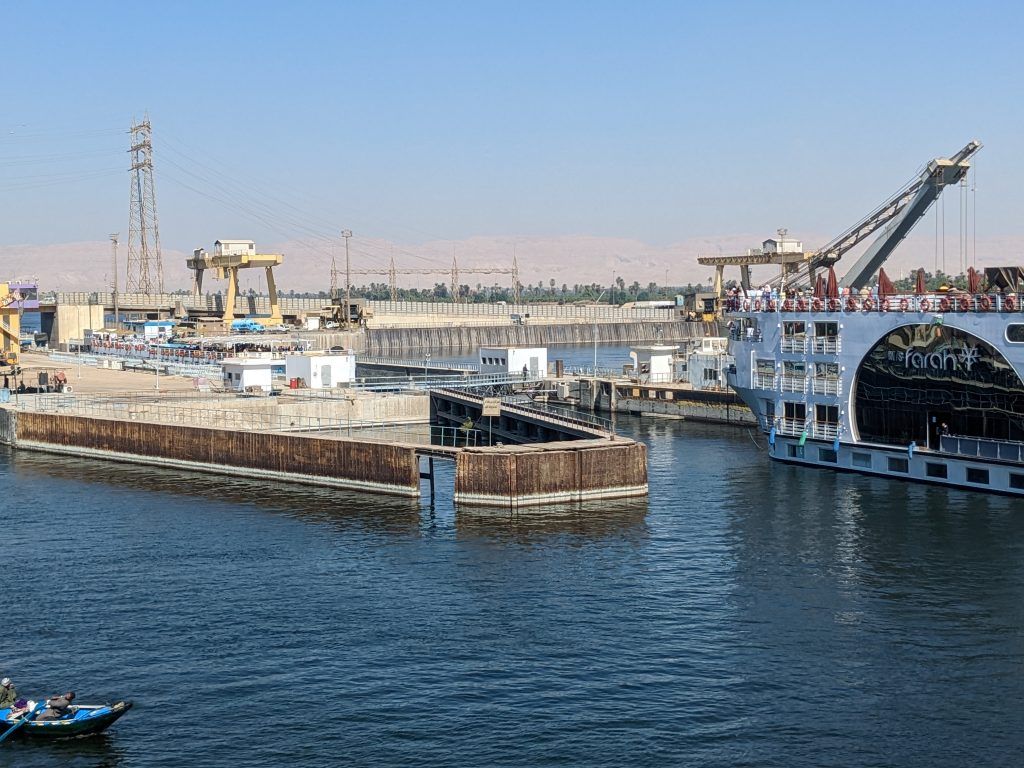
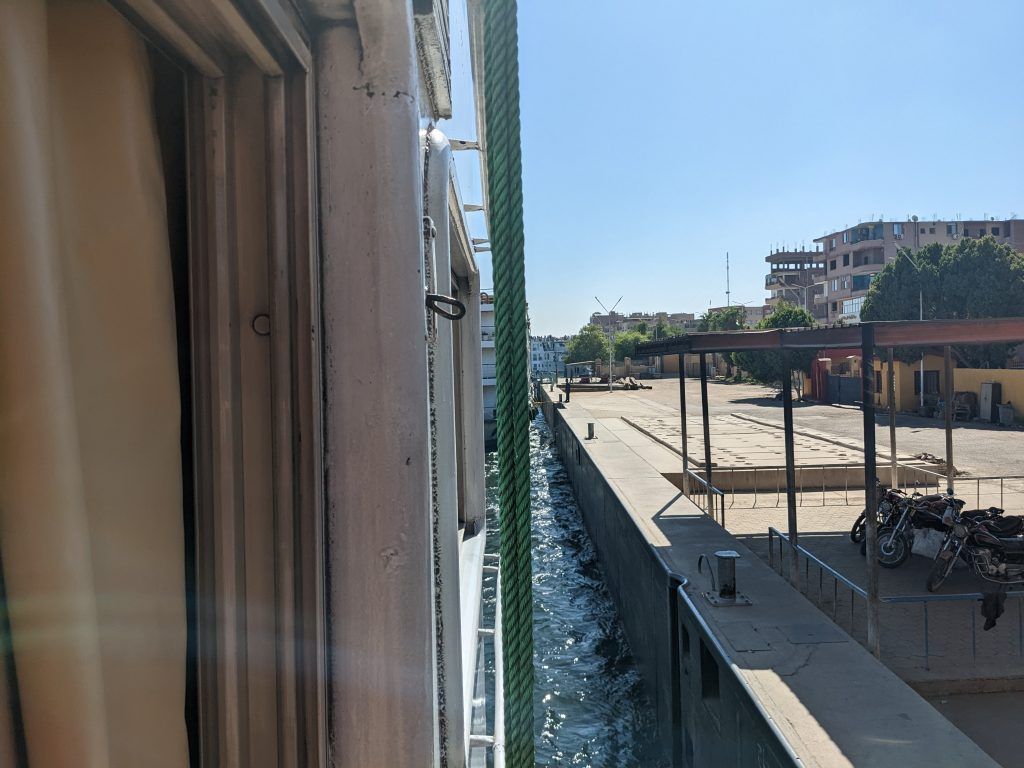
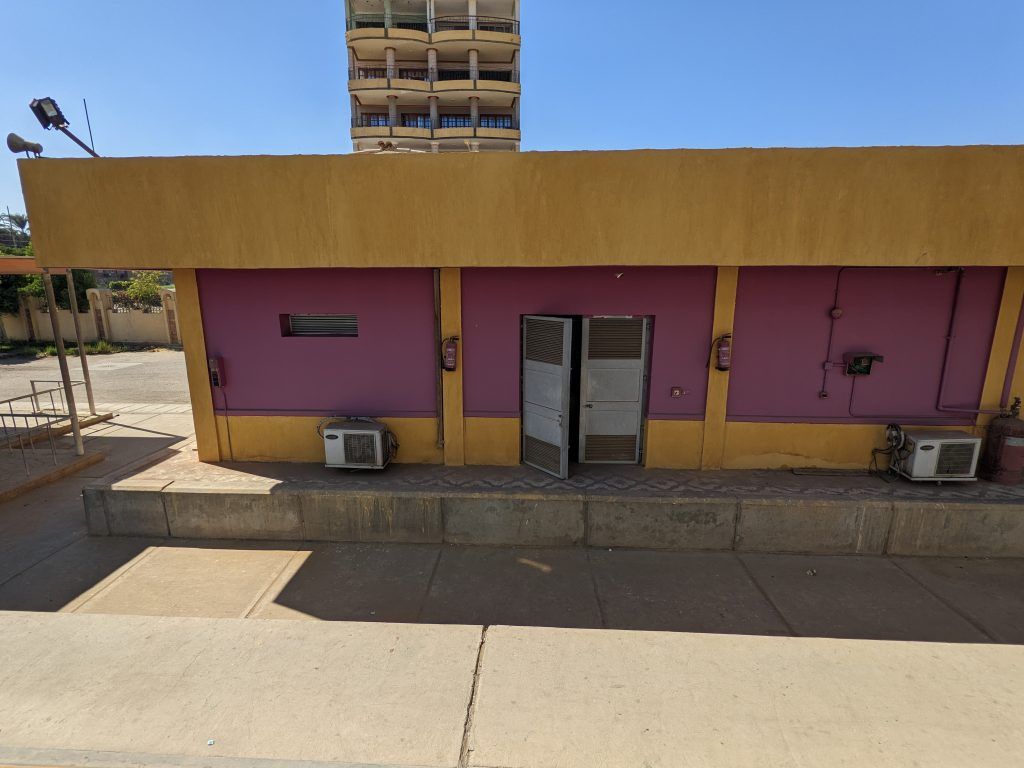
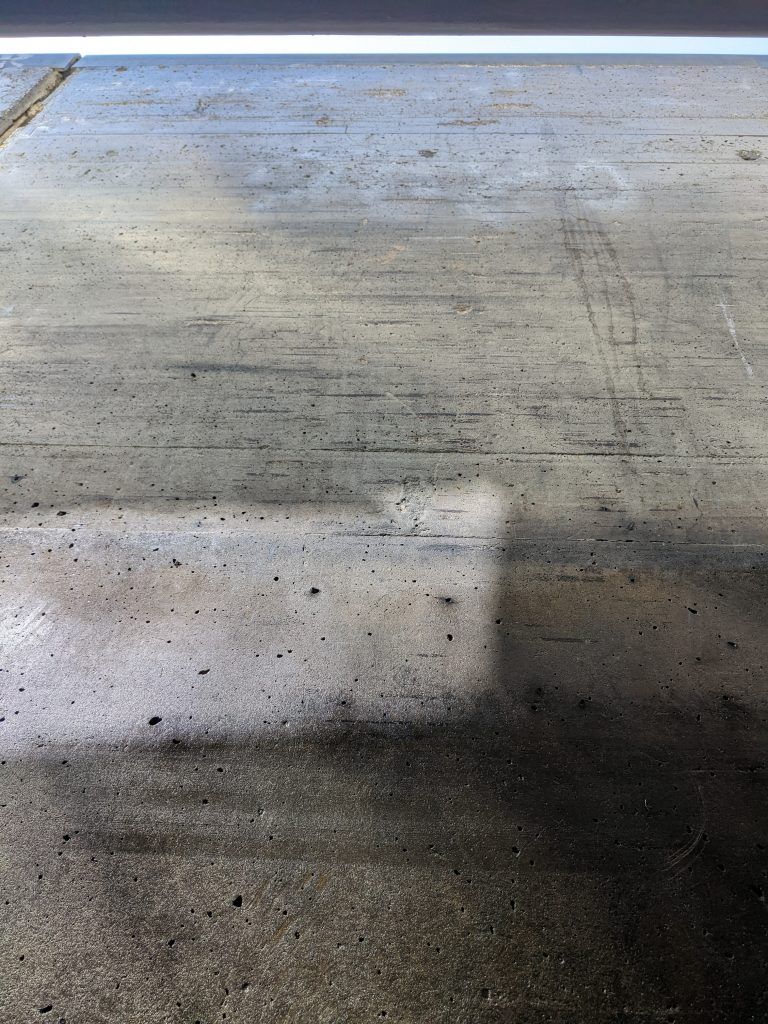
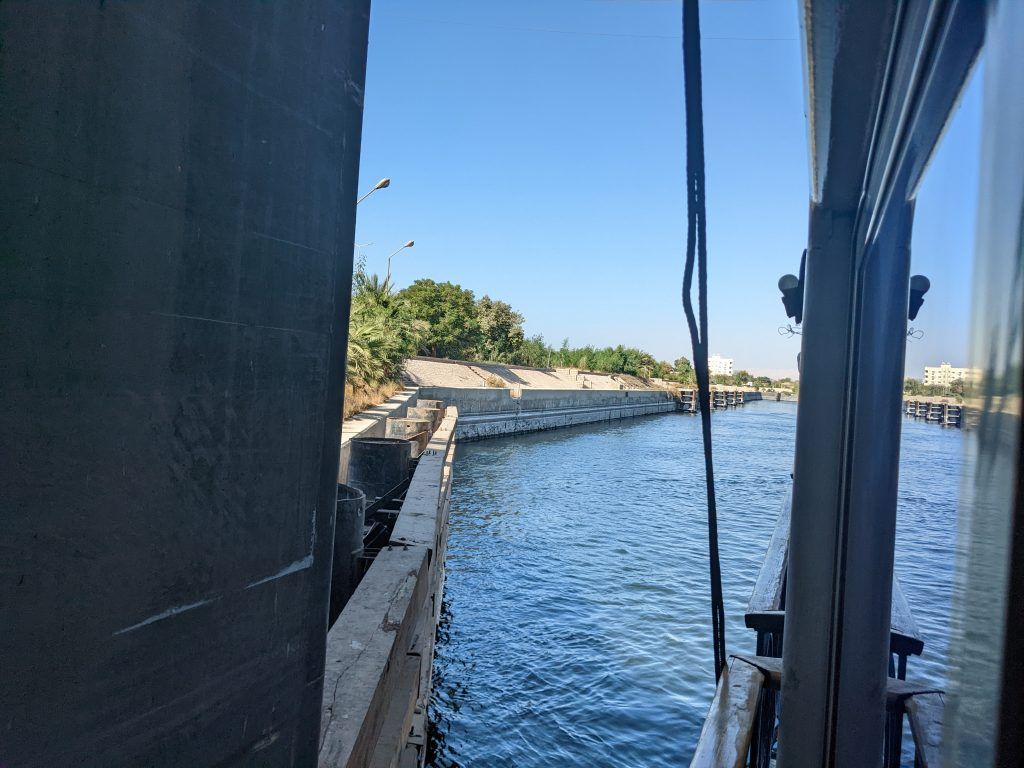
Visiting Aswan and Luxor Before And After The Nile Cruise
Before this cruise on the Nile I stayed at a small, but well kept up hotel on Elephantine Island, the Nubian village on the east bank of the Nile at Aswan.
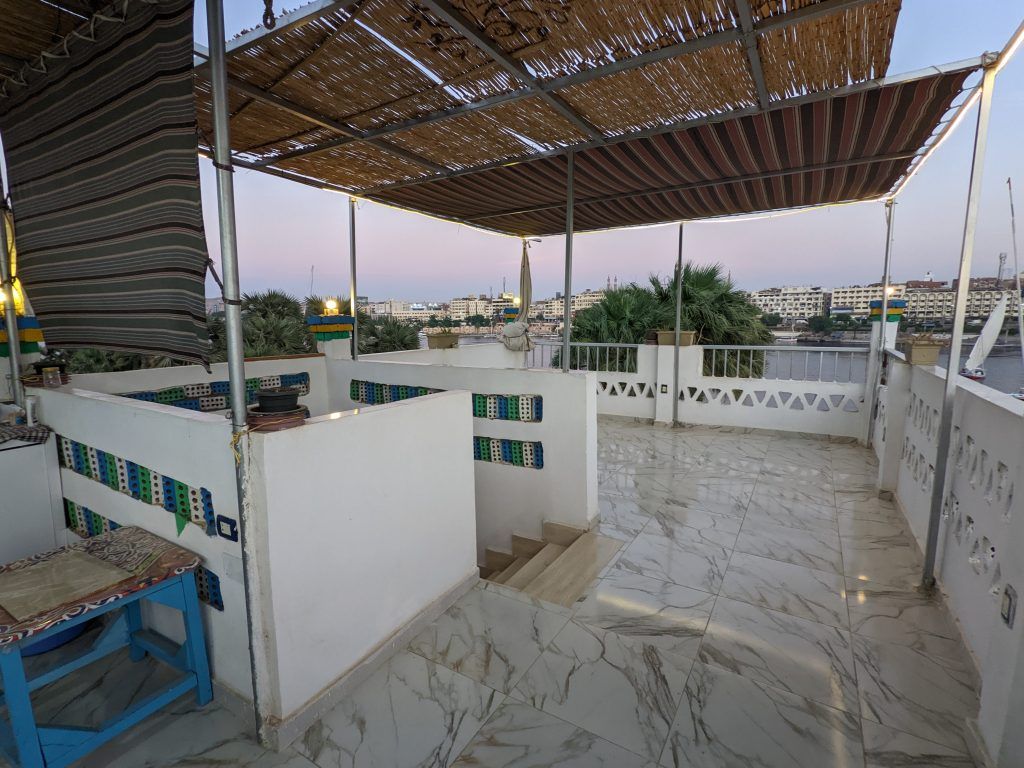
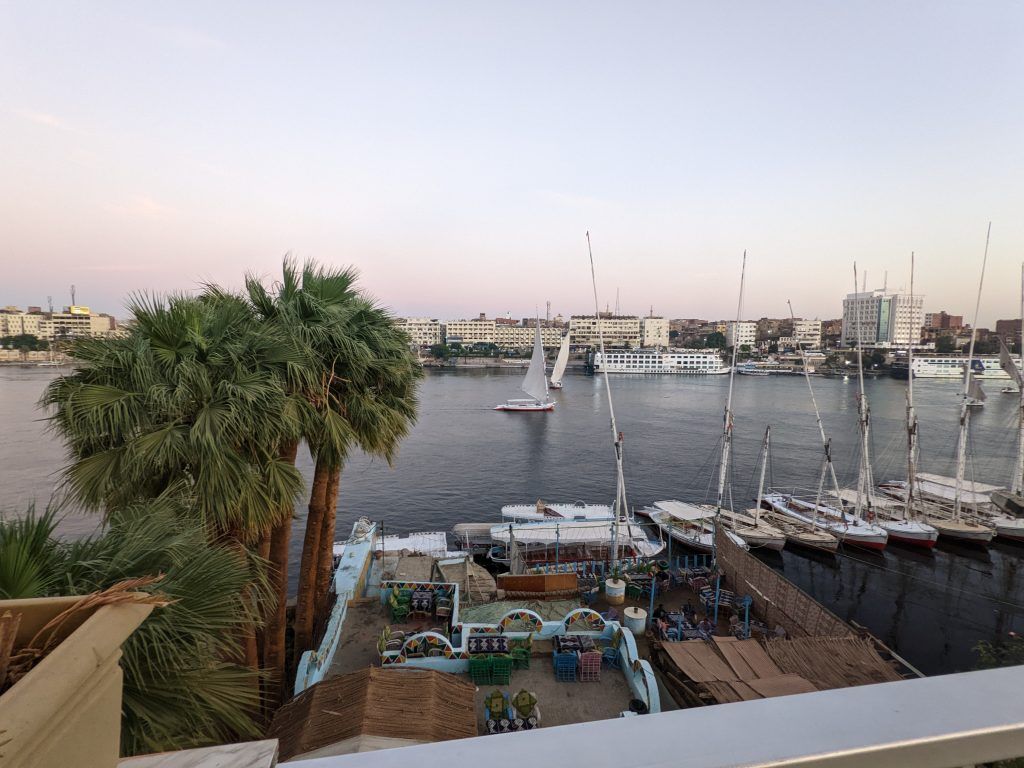
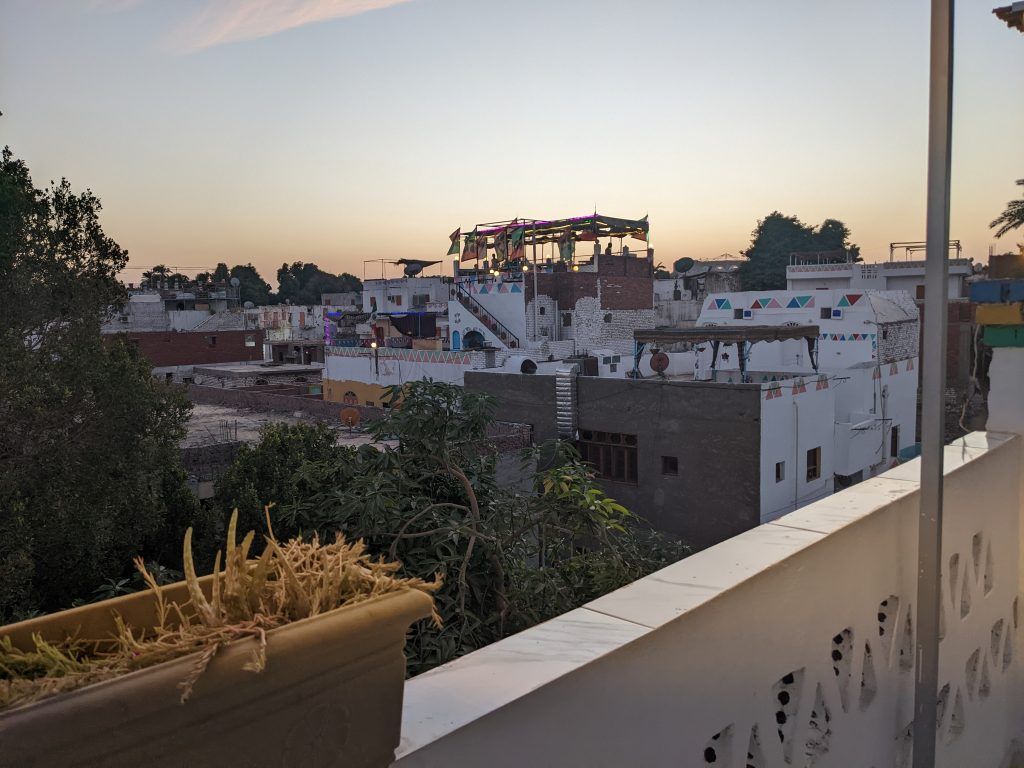
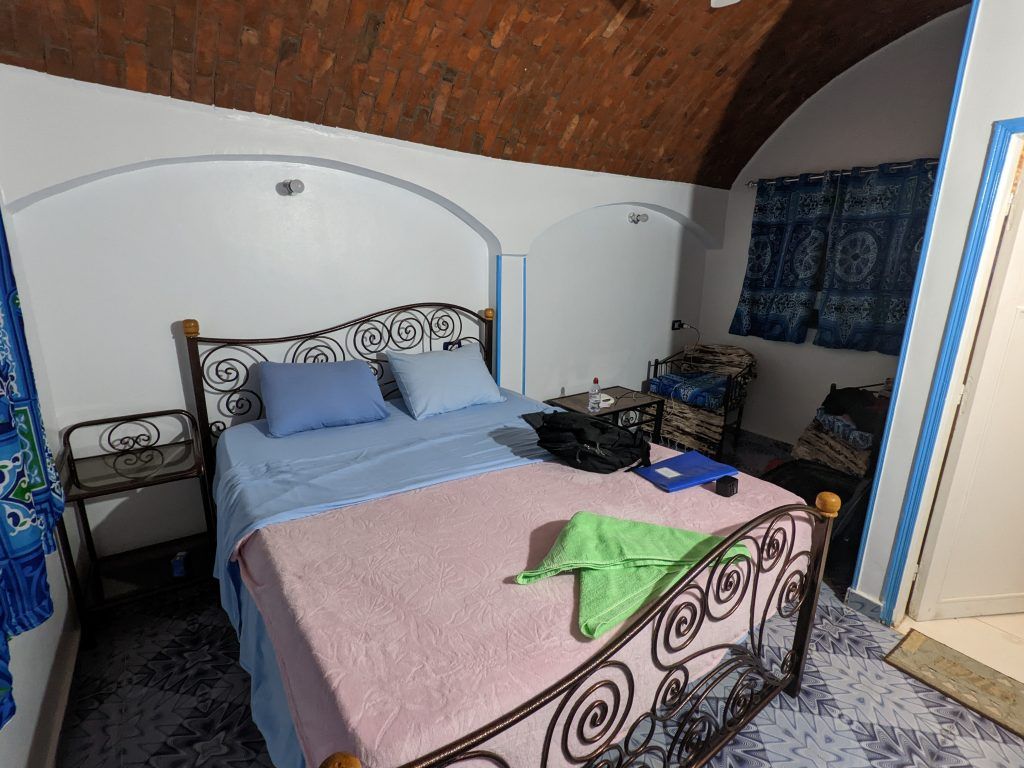
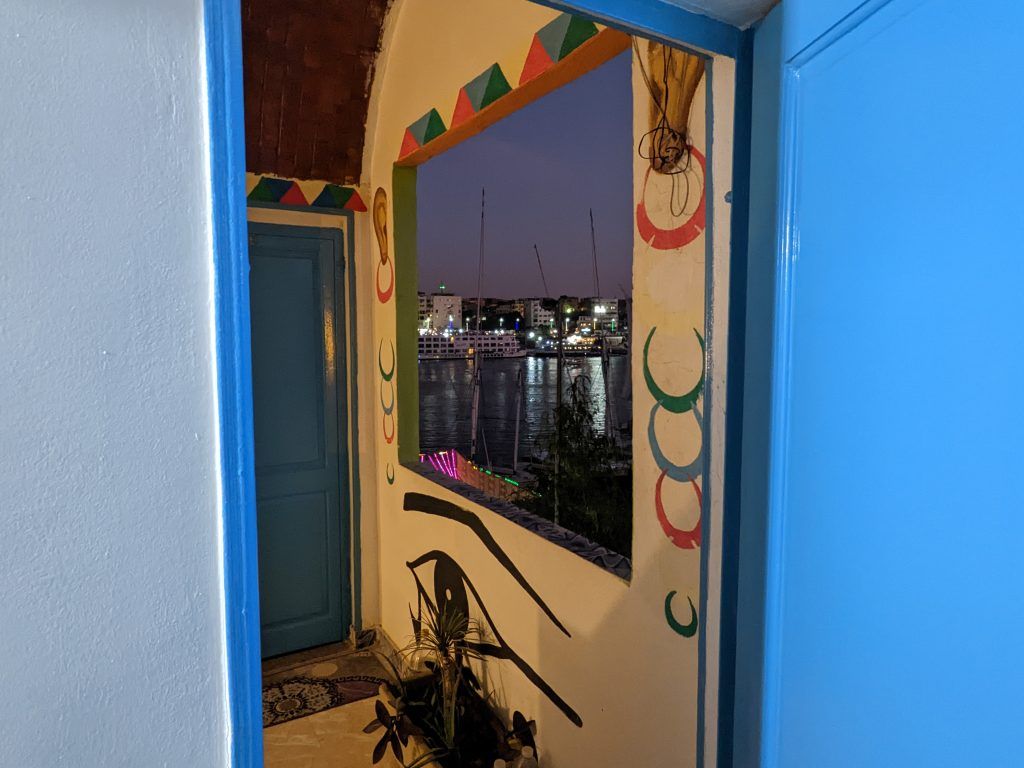
After the cruise on the Nile I stayed at a really nice, large Airbnb apartment in Luxor on the quieter west side of the Nile for 3 nights.
